 Eat
Eat
Oct. 11-12: Baltimore Taco Festival
Power Plant Live. 34 Market Pl. VIP: 12-2 p.m. GA: 2-8 p.m. $10-60.
This past Taco Tuesday, Oct. 7, was also National Taco Day. If you (like us) totally missed the memo, you can still celebrate at this massive two-day food fest downtown—which will be filled with mariachi music, massive marg bars, a tequila expo, chili pepper-eating contests, piñata smashing for kids, and, of course, tacos from more than 30 purveyors. Fill up on tortillas from the likes of Old Goucher’s Elevated Kitchen & Grill, local pop-up Emmanuella’s Cuisine, and visiting vendors from across the Mid-Atlantic.
 DRINK
DRINK
Oct. 10-11: OktoBEARfest
Maryland Zoo, 1 Safari Pl. Fri: 6-10 p.m. Sat: 1-6 p.m. $35-250.
At the zoo’s annual fall sipping event, you can sample seasonal beer, cider, and seltzer from more than 30 producers, all while saying hey to its furry and feathered inhabitants. The weekend kicks off with 21-and-over festivities on Friday night, featuring live music by local faves Nelly’s Echo and Charm City Junction. On Saturday, feel free to bring the cubs to enjoy vendors and explore the exhibits. Brewers and distillers to look out for this year include Maryland’s own Dogfish Head (Punkin Ale), Flying Dog (Apple Pie Face), Raven Beer (Tell Tale Heart), The Brewers Art (Penguin Pils), and Charm City Meadworks (Elderflower Pumpkin).
 SEE
SEE
Oct. 10: Motor House’s 10th Anniversary Celebration
Motor House. 120 W. North Ave. 6 p.m. -1 a.m. Free admission.
Ten years ago, arts nonprofit Baltimore Arts Realty Corporation (BARCO) debuted Motor House as a nexus for performance and community on North Avenue. To mark the milestone, the team is throwing a big birthday bash that honors the wide array of disciplines that have found a home at the venue throughout the years. Highlights on the evening’s packed itinerary include the debut of the new Art in Overdrive collective gallery, interactive art-making in Graffiti Alley, an unveiling of the redesigned showroom, a screening of a new documentary on Motor House’s impact, a live performance by Afrofuturistic theater and music collective Funktopia, and a late-night future house and R&B dance party.
 HEAR
HEAR
Oct. 10-12: Subscape
Station North Arts & Entertainment District. Locations & times vary. Free.
Back for round two this year, this completely free music fest amplifies Baltimore’s ever-thriving DIY scene. Organizers Michael Habif of Baltimore Showplace, Kim Te of Natural Velvet (also The Crown’s former head of booking), and Andy Phillips of Wax Atlas are presenting more than 50 punk, metal, and experimental bands across three days in Station North. The venues—Metro Baltimore, Mobtown Ballroom, and Ema’s Corner—are all within walking distance, so peep the full lineup to plan out your weekend. Our can’t-miss set suggestions: Hardcore acts like Muscle and Doubt and Black Lung; genre-benders like Landis Harry Landis and Glorian; and headliners like Animal Collective’s Deakin.
See also: United Way Centennial Benefit Concert ft. Common
 DO
DO
Oct. 10-12: Fells Point Fun Festival
Thames St. Fri. 5-9 p.m., Sat.-Sun. 11 a.m.-7 p.m. Free.
It’s (arguably) the best weekend of the year in Fells Point. The beloved tradition with a storied past—it began as a fundraiser for locals to protest the city’s proposed federal highway expansion in 1966—draws thousands to the Thames Street waterfront for eats, drinks, live music, shopping, and family fun. New this year, the fest will kick off Friday with its first-ever Night Market, giving attendees the chance to shop around after dark while grooving to live tunes by Charm City pop princess Enslow. View the weekend’s full program—which features magic shows, marching bands, balloon art, and the raved-about Sunday-afternoon pet parade—here.
See also: Cromwell Valley Fall Harvest & Arts Festival; Mr. Trash Wheel Music Video Shoot; Maryland Renaissance Festival
If you’re hoping to savor the season with a trip to your local fall farm this weekend, check out our Ultimate Baltimore-Area Pumpkin Picking Guide and roundup of local apple cider destinations.
]]>As cool breezes continue to set in this month, mark your calendars for these upcoming Baltimore-area music fests, with headliners set to perform everything from rap and R&B to experimental beats and early-aughts alternative.
For Fans Of: DIY
9/13: Baltimore Rhythm Festival
Celebrating its 30th anniversary this year—the festival was first put on by the Baltimore International Rhythm and Drumming Society (BIRDS) at St. Johns Church in Charles Village in 1995—this all-day gathering at the Baltimore Montessori Public Charter School encourages community connection through, you guessed it, rhythm. Jump into a drum circle, experience a sound bath, explore the world of Capoeira (Brazilian martial arts), and swing by the stages for all-day performances. Little ones are invited to come along for activities like puppet shows and family dance workshops. Baltimore Montessori Public Charter School. 1600 Guilford Ave. 12-6 p.m. Free.
9/18-21: High Zero Festival
For nearly three decades, organizers of this experimental music showcase—lauded as the best of its kind on the East Coast—have united a range of performers from across the globe on the same stage with one goal: no rules, no expectations, no rehearsals, just collaboration. The completely improvised performances highlight the musical magic that can come from riffing off of fellow creatives.
Grab tickets and head to the Baltimore Theater Project to witness jam sessions by dozens of performers that fuse everything from strings, brass, and percussion to DIY instruments, found objects, and electronics. Per tradition, the Saturday-night concert will be completely randomized, splitting up 16 instrumentalists into four small sets. Theatre Project, 45 W. Preston St. 8:30 p.m. $10-60.
For Fans Of: R&B, Hip-Hop
9/13: Love Groove Festival
From the mind of John Tyler—the city’s celebrated musician, producer, youth educator, and all-around advocate for the arts scene—comes this ninth-annual day of nonstop performances at Robert C. Marshall Park on Pennsylvania Avenue. Honor the historical significance of the venue—designated as an official Arts & Entertainment District—by grooving to dozens of acts from near and far, including homegrown greats like rapper and Bmore Club torchbearer TT The Artist, R&B star Serpentwithfeet, and soul artist Kennedy Ryon.
Throughout the day, you can explore the fest’s art gallery, goods from local makers, eats and drinks, and wellness activities like a group run or yoga session. If you want to roll up in style, join cyclists for the official Love Groove Bike Party, which will spin off toward Upton from St. Mary’s Park at noon. Robert C. Marshall Park. Pennsylvania Ave. 12-8 p.m. Free.
9/20: Charm City Live
Living up to its name, the Mayor’s office is once again enlivening downtown’s War Memorial Plaza across from City Hall with this community concert. Dance all day to beats brought by soulful singer-songwriter Vivian Green, former L.T.D. frontman Jeffrey Osborne, rising R&B artist Lucky Daye, and Grammy-nominated writer-producer The-Dream—who gets cred for co-writing hits like Beyonce’s “Single Ladies,” Rihanna’s “Umbrella,” and, more recently, Megan Thee Stallion’s “Savage.” In the spirit of community connection, there will also be food, art vendors, and activities for kids. War Memorial Plaza, Market Pl. & E. Pratt St. 12-9 p.m. Free.
For Fans Of: Country, Americana, Folk
9/14: Outlaw Music Festival
The legends playing this year’s Outlaw Music Festival—co-founded by Willie Nelson—have been touring North America for months now, and they’re winding down their circuit with a stop at Merriweather Post Pavilion. (Saving the best venues for last, obviously.) In celebration of its 10th anniversary, the fest honoring authentic Americana will feature sets by Willie Nelson & Family, Bob Dylan, Sheryl Crow, Waxahatchee (if you missed Katie Crutchfield’s powerful vocals at Merriweather earlier this summer, this is your second chance), and Madeline Edwards. Merriweather Post Pavilion, 10475 Little Patuxent Pkwy., Columbia. 4 p.m. $63.
For Fans Of: Classic Rock, Yacht Rock, Covers
9/20: Trifecta Festival
Named after its mission of curating a feel-good blend of eats, drinks, and live music for attendees, this Timonium tradition presents 12 bands across two stages at the Maryland State Fairgrounds. Plan out where you’re going to get your grub (this year’s featured food trucks include Greek on the Street, Conrad’s Seafood, Koshary Korner, 410 Empanadas, and tons more) before heading into the crowd to catch blues sets by Kelly Bell Band; Talking Heads covers by Psycho Killers; Jamaican ska and reggae by The Players Band; yacht rock by The Regal Beagles; tributes to U2, Tom Petty, Queen, and The Allman Brothers; and more. Maryland State Fairgrounds, 2200 York Rd., Lutherville-Timonium. 11 a.m. $35.99.
For Fans Of: Alternative, Indie, Pop, Pop-Punk
9/26-28: All Things Go
In the last decade, this indie paradise has grown from a get-together in Washington, D.C. (the first fest at Union Market in 2014 was headlined by Baltimore DIY royalty Future Islands) into a three-day extravaganza that takes over venues in New York and Toronto, in addition to Merriweather Post Pavilion. (It was founded by Washingtonians, after all.)
Highlighting genre-ranging pop artists, the Coachella-level lineup includes headliners whose songs you’ve heard all over TikTok and beyond, including Noah Kahan (“Stick Season”), Doechii (“Anxiety”), Lola Young (“Messy”), Djo (“End of Beginning”), The Marias (“No One Noticed”), and Lucy Dacus (“Night Shift”).
You can also anticipate catchy alternative anthems by The Beaches, a soul-soothing performance by Joy Oladokun, indie folk from Faye Webster, and what we can only expect will be a life-changing performance of the song of the summer, “Sally, When the Wine Runs Out,” by Role Model. (Any guesses on who this show’s Sally will be?) Merriweather Post Pavilion, 10475 Little Patuxent Pkwy., Columbia. Fri. 3:50 p.m., Sat.-Sun. 12 p.m. $178-396.75.
9/26-28: Oceans Calling
The fact that this sonic beach bash in Ocean City—co-founded by Maryland’s own O.A.R.—overlaps with All Things Go presents a real Sophie’s choice for local indie and alternative fans. But while All Things Go focuses on of-the-moment musicians (a Gen Z dream), Oceans Calling’s lineup stands out in its throwbacks—with far-ranging acts like Devo, 4 Non Blondes, Wheatus, Spin Doctors, Collective Soul, Jack’s Mannequin, Good Charlotte, DJ Jazzy Jeff, The Fray, Nelly, Michelle Branch, and Natasha Bedingfield. (Any other millennials tearing up at the thought of being in the crowd for “Unwritten?”)
Headliners on the docket for the long weekend are Green Day, Lenny Kravitz, Noah Kahan, Vampire Weekend, Fall Out Boy, and Weezer. Suffice it to say, no matter which of the three stages you’re closest to at any given time, you’re bound to hear a familiar tune. Ocean City Inlet. 809 South Atlantic Ave. Ocean City. 12-11 p.m. $185
]]>
When Rhiannon Brown relocated the Queen City Scoop Shop in downtown Cumberland last year, she hung a sign inside that says “BELIEVE.” The Cumberland native borrowed the slogan from a community advocacy campaign in Baltimore from the years she lived there. It inspired the educator-turned-entrepreneur to revisit her roots and buy a beloved frozen custard store.
Brown isn’t alone. She’s one of about 20 small business owners—both Cumberland-raised and come-heres—who’ve bet on themselves and the future of this scenic, once-industrial Western Maryland city, which recently completed a $17.2-million downtown revitalization.
For many, Cumberland is the gritty city that Interstate 68, aka “The National Freeway,” passes over—literally and figuratively—as it dips briefly between mountains in Allegany County. If you’ve never visited, or haven’t in years, it’s time to exit the highway and explore Cumberland’s outdoorsy appeal, its surprisingly rich history, and its emerging culinary and arts scenes.
When work got underway in early 2023, Cumberland’s main drag, Baltimore Street, belonged to an endangered commercial species—the pedestrian mall. Left behind by shopping centers and e-commerce, served by an electrical grid so outdated it struggled to light the city’s Christmas tree, many of its businesses had either moved or closed.
Today, the area has re-opened for business in a big way. Once-empty storefronts hold a veritable United Nations of restaurants, plus crowded coffeehouses, a new visual and performing arts gallery, and a growing number of specialty shops. A boutique hotel—Cumberland’s first—will open later this year in a renovated Victorian-era building, one of the city’s many architectural gems.
Thanks to major upgrades in water, sewer, and electrical systems—as well as the introduction of 5G internet—some buildings house modern office and residential spaces on their upper floors. (A 2024 city program dangled $20,000 relocation packages for those willing to move here. The gambit drew national media attention and, to officials’ surprise, far more applicants than expected.)
Traffic flows again, slowly, on a three-block stretch of brick-paved Baltimore Street. Its now curb-less sidewalks are wider and re-landscaped to accommodate pleasant outdoor dining areas bordered by planters brimming with greenery. Trees that once hid the façades of stunning old buildings have been replaced with flora that gracefully frame them. There are new benches, streetlights, bike racks, a cascading wall fountain, and—for the first time in almost 50 years—on-street parking.
For much of its nearly 240 years, the “Queen City” was a fortuitously located transportation and industrial hub that rivaled Baltimore or Pittsburgh. Just west of Cumberland, Wills Creek cuts a deep, rocky-topped gap through the gently mounded Allegheny Mountains, opening a passage Cumberland Narrows—just wide enough for civilization to squeeze through on its roll westward centuries ago.
A path blazed by Native Americans became a wagon road and eventually Route 40, the nation’s first federal highway. From the east, the B&O Railroad arrived in 1842, and the C&O Canal linked the city to Washington, D.C., in 1850. Cumberland became a way station for travelers pursuing big dreams. Fur traders and settlers in the 18th century. Underground Railroad riders and commercial-rail tycoons in the 19th. George Washington arguably launched his early career here as a surveyor and a soldier before moving on to higher pay grades.

→ EXPLORE OUTDOORS
Today, big adventures are Cumberland’s primary attraction. The city of fewer than 20,000 lures more than 300,000 annual visitors: cyclists and hikers traveling the C&O Canal towpath and the Great Allegheny Passage (which meet here), sightseers riding the Western Maryland Scenic Railroad, and outdoor enthusiasts eager to explore Allegany County’s boundless beauty.
Begin your orientation at the Allegany Museum, whose impressive collection of 50,000 artifacts traces local history from Cumberland’s frontier days through its golden era as a maker of glassware, beer, tires, textiles, iron, and steel. Don’t miss the scale model of Fort Cumberland, a hillside British outpost built in 1754. Washington served as a young aide-de-camp there and the museum features a spectral 3D bust of our first president “reverse aged” by artificial intelligence to resemble his 1750s visage.
Allow ample time to explore nearby Canal Place Heritage Area, where centuries of transportation lore converge around C&O Canal National Historical Park. A pedestrian-friendly plaza with a shaded picnic area, it’s also home to the 1913 Western Maryland Railway Station. This grand reminder of Cumberland’s rail prominence still welcomes passengers. Western Maryland Scenic Railroad offers seasonal roundtrip excursions that chug through the Cumberland Narrows to the mountain town of Frostburg. Rail buffs will love Locomotive 1309, one of the nation’s largest still operating vintage steam engines.

The station platform faces Riverfront Park, a scenic strip overlooking the confluence of Wills Creek and the North Branch Potomac River, as well as the canal turning basin. Check out The Cumberland, a full-scale, landlocked replica of a canal boat and visit the C&O Canal Visitor Center & Museum, located in the rail station.
Canal Place marks the juncture of two famously scenic bike trails: the 184.5-mile C&O Canal Towpath and the 150-mile Great Allegheny Passage, aka “The GAP.” Traversed end to end, they link D.C. and Pittsburgh. Because it’s a readily accessible trail town, cyclists naturally come to Cumberland, and it to them, offering repairs, rentals, shuttle service, and even bike-washing stations.
Trailside at Canal Place you’ll find Wheelz-up Adventures, which rents, sells, and services bikes, and provides guided tours and shuttle service for cyclists. Owner Mandela Echefu also outfits and instructs climbers, hikers, mountain bikers, paddleboarders, and kayakers at two locations. “It’s all about getting people out- doors,” says the Nigerian-born Echefu, who, inspired by the area’s natural beauty, abandoned a health-care career to start the business with his wife, Jamie.

→ DRINKS AND DINING
Before leaving Canal Place, savor some trailside refreshment. Sample a flight of craft beers at Dig Deep Brewing Co., located in the historic Footer’s Dye Works Building. Dig Deep’s rotating selection of more than a dozen homebrews pays a sudsy nod to Allegany’s coal-mining heritage, with offerings like Pay Dirt brown ale. Steps away, Charis Winery & Distillery produces around 14 different wines using grapes grown almost exclusively in Maryland, as well as more than 18 kinds of rums, brandies, whiskeys, and liqueurs. Sip Afternoon Delight, a lovely mead-style wine, in Charis’ tasting room or on its inviting patio.
From Canal Place, you’re just two blocks away from the downtown historic district and its main thoroughfare, Baltimore Street. After 20 dusty months of construction, the refurbished area was unveiled at a ribbon-cutting last November. Defunct late 19th- and early 20th-century department stores, banks, and jewelry shops—their fancy façades still remarkably intact—are filled with new businesses and iconic enterprises that persevered through the construction.
Brown bought Queen City Creamery from its about-to-retire owners, keeping creamy frozen custard in Cumberland. Now called Queen City Scoop Shop, it offers more than two dozen flavors (the pistachio is excellent), and if yours happens to be the “name du jour” (check the sign board), you get a free scoop. Curtis Famous Weiners, a half-block off Baltimore Street, has been operated since 1918 by the Giatras family—Cumberland retail royalty whose original trade was candy-making. Slide into one of the restaurant’s vintage wooden booths, enjoy a Coney Island chili dog, and let garrulous owner Gino Giatras narrate family history as displayed on the shop’s memorabilia-lined walls.
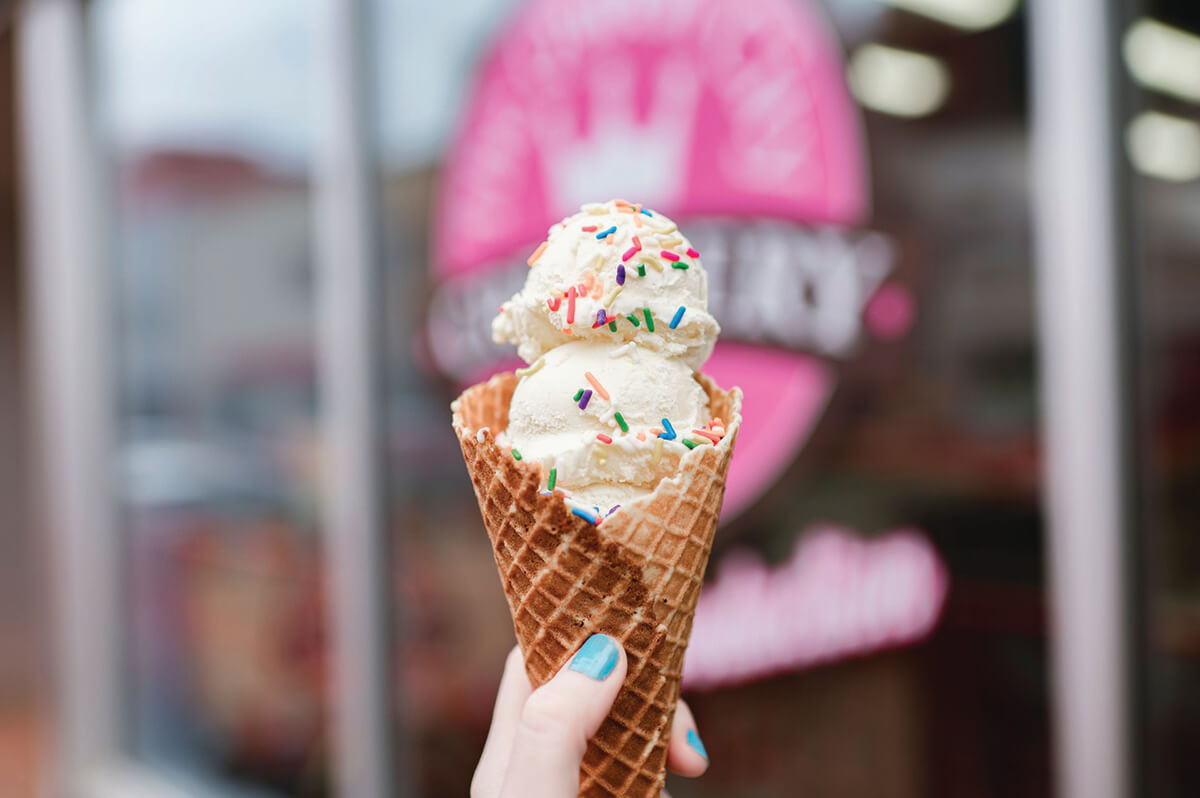
Cumberland’s grand old stores—Rosenbaum’s, Schwarzenbach’s, McMullen Brothers, and Lazarus—are gone, but their ornate structures are being repurposed for 21st-century commerce. When Hayden Ort-Ulm sought a second location for his popular Greene Street coffeehouse, Basecamp Coffee Co., he landed in the old Rosenbaum building. This Baltimore Street coffee stand shares first-floor space in the refurbished 1899 building with Madison Paige Boutique, a chic women’s store; AJ’s Cookie Jar, specializing in French macarons; and Lefty’s Place, a new Detroit-style pizza and wing bar. Luxury lofts and Airbnb apartments are slated for the upper floors.
Basecamp’s Ort-Ulm, raised nearby in Bedford County, Pennsylvania, is another entrepreneur who’s come home—in his case all the way from the Pacific Northwest. He now lives 10 minutes away in La Vale, site of Basecamp’s roastery, and collaborates with businesses like Queen City Scoop Shop and Dig Deep Brewing on their coffee-flavored offerings.
Another morning buzz option is Café Mark, a favorite for specialty coffees, fresh-brewed teas, smoothies, and its creative breakfast and lunch menus. You’ll find a welcoming vibe (think brick walls and pressed-tin ceilings), killer breakfast burritos, and super-friendly servers. Just beware the pastry counter, which seduces you sweetly while you wait to order.
Other dining choices abound. Try Baltimore Street Grill, a cozy pub-style restaurant, for Cajun specialties including seafood gumbo, crawfish étouffée, and catfish strips. At Centre Street Collective, a festive food court, order at the bar from an internationally inspired menu, featuring wraps, flatbreads, breakfast bowls, sushi, and build-your-own ramen bowls. On Baltimore Street, City Lights American Grill does popular gourmet burger and-beer nights on Thursdays. Around the corner, Mise En Place offers French cuisine in a delightful bistro setting.
On Centre Street, Ristorante Ottaviani imports New York-style Italian fare to its romantic dining room. Order from the house specialty Abruzzo entrees and conclude your meal on a heavenly note with house-made warm butter cake. The restaurant’s less formal Tasting Room and Lounge serves brick-oven pizzas, salads, and charcuterie. Opened in 1906, Caporale’s Bakery on North Mechanic Street offers compulsory Cumberland noshes like fresh-baked pepperoni rolls (once a coal miner’s staple), Italian breads, and sugary confections.
→ NIGHTLIFE
Downtown’s most anticipated newcomer occupies the historic McCleave Building at 63-69 Baltimore Street. The 20-room Wills Hotel will be Allegany County’s first boutique lodgings when it opens, as early as this fall. Co-owner Brian Gilbride of Ohio, who cycles the GAP, was quite familiar with Cumberland. When he saw the Italianate-style building, he realized its potential. When completed, the three-story hotel—Gilbride’s “passion project”—will offer bespoke suites, a potential steakhouse with an adjoining bar, and first-floor space offering cyclists bike works, storage, and laundry facilities. Eyeing possible expansion, Gilbride also purchased the building next door.
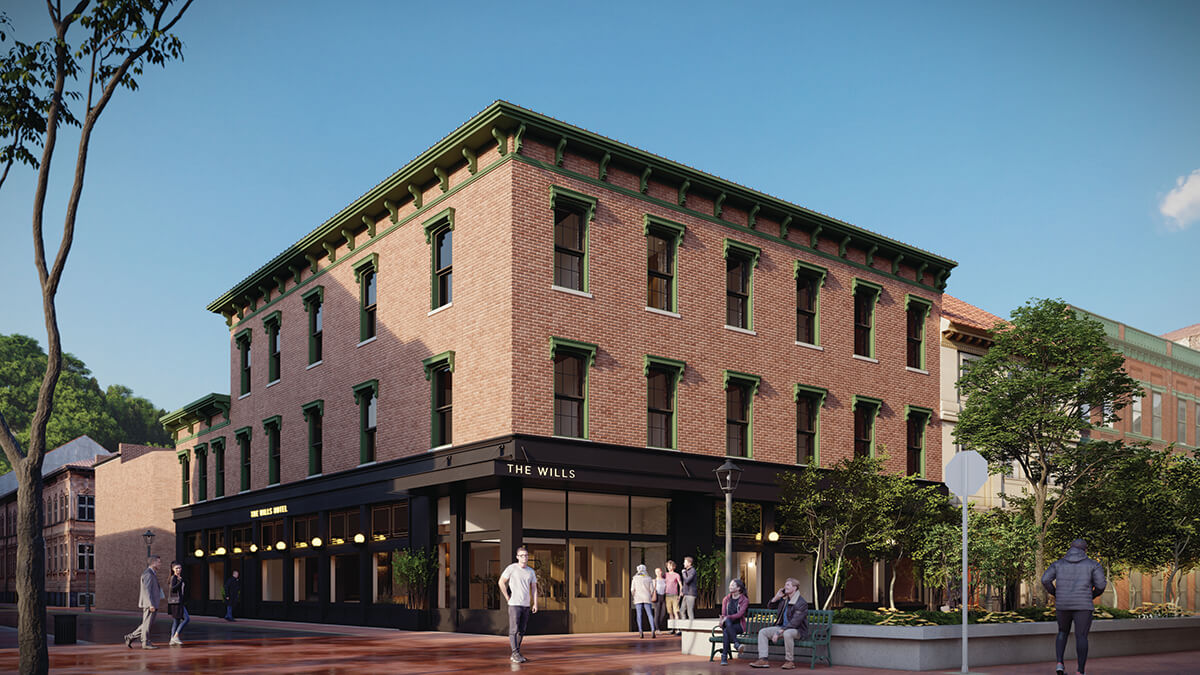
Take your pick of after-dark diversions. Watch a play at Embassy Theatre, located in a landmark 1931 Art Deco movie house. Enjoy live music at Loft 129, which features everything from rock and pop to jazz and classical. Toss tools at Fore Axes, a bar catering to wannabe lumberjacks as well as aspiring Scottie Schefflers who can tackle simulation golf courses like Pinehurst, Torrey Pines, and Royal Melbourne.
One of downtown’s newest arts venues, Ferleman Gallery & Gallery Stage showcases contemporary art. Its intimate, intra-gallery stage hosts live acoustic music performances and boasts its own digital recording studio. Owners Thomas and Rebecca Ferleman, who moved to Allegany County to escape suburbia, plan to open RootSTable on the second floor, serving locally sourced New American cuisine. If you’re visiting the gallery this summer or fall, check out works by Baltimore’s own Joseph Sheppard, the noted sculptor, muralist, and portraitist who created the Brooks Robinson statue near Camden Yards.
→ LANDMARKS
Also discover some of Cumberland’s lesser-known landmarks. B’er Chayim Temple, an 1864 Greek Revival building downtown, is the longest continuously operating synagogue in Maryland, housing a congregation originally chartered in 1853. On a hillside overlooking Wills Creek, built atop Fort Cumberland’s remains, Emmanuel Episcopal Church in the Washington Street Historic District is well worth touring. The earthworks below—tunnels Washington once strode—were used a century later by African Americans following the Underground Railroad.

Walking the dimly lit space today is powerful and chilling. Inside the church itself, docent-led tours reveal another surprise. The chancel was designed by renowned artist Louis Comfort Tiffany, who personally visited and created three breathtaking stained-glass windows and several ornate candelabras.
When city leaders were planning the Baltimore Street Redevelopment Project, they dubbed the initiative “Reimagine Cumberland.” Now that the work is complete and downtown businesses have bought into the venture, they hope travelers will find the new Queen City as alluring as its predecessors.
Here in Charm City, JHU hosted a lecture on the movie’s legacy and shark science; the BSO performed the iconic score (duh-dun, duh-dun) live as the film rolled; and theaters and outdoor movie nights all over town have been hosting viewings for fans to relive all of the action and nostalgia. (Snag tickets for The Senator’s showings scheduled August 28-Sept. 4, here.)
All of the Jaws buzz has undoubtedly gotten people more excited for Shark Week, Discovery Channel’s annual week of programming dedicated to the fascinating, fierce, big-finned fish. Through Saturday, July 26, local establishments are riding the wave with creative food items and killer drink specials (gear up for gummy sharks and grenadine), as well as community events. (Among them: In honor of Shark Week, the Baltimore Hunger Project is hosting a canned tuna drive to help feed local kids in need.)
Hoping to celebrate with other enthusiasts? Pull out your binoculars and look no further than the spots below:
The Bus Stop: The Shark Week special at this Upperco dessert destination is just about as Instagrammable as it gets. Step up to the window to order your own fishbowl filled with a blue raspberry snowball, Nerds, Sour Patch Kids, gummy sharks and fish, and even a peach ring lifebuoy for good measure. Each bowl also comes with a Tiger’s Blood flavor shot to pour on top.
Cake by Jason: Headed to a watch party? A six-pack of aqua-themed cupcakes from chef Jason Hisley’s Timonium bakeshop is the perfect potluck pleaser. Fun flavors—all decorated with underwater-inspired frosting, sprinkles, and toppers like edible fins—include lemon, sea-salt caramel, chocolate with marshmallow filling, marble with cherry filling, and coconut with pineapple filling.
CVP Towson: Belly up to one of the many bars at this convivial Towson spot—free from the college crowd during the summer—to snack on an entire menu of jaw-some offerings. Start out with the Shark Attack margarita (topped with a float of grenadine, of course) before moving on to an order of rockfish “shark” bites; a blackened ahi tuna Sharky Snack Wrap; or The Megalodon sandwich piled with pit beef and turkey, a special “Shark’s Blood” sauce, and all of the fixins’. If you’re with a group, go for the Feeding Frenzy platter, which comes with shark bites, crab balls, fried shrimp, Old Bay fries, and house slaw.
EC Diner: Unsurprisingly, the over-the-top milkshake menu at this Howard County staple features an aquatic addition this week. The glass arrives filled with a blue vanilla shake with strawberry drizzle and a sandy graham cracker rim. But the true masterpiece is the topper—an inverted cupcake hand-decorated with blue icing and fondant to resemble a shark’s head, complete with frosting waves and a Swedish Fish.
Frazier’s: Per tradition, the dive on the Avenue in Hampden is a home base to enjoy the fun, with specials including beer-battered ahi tuna bites, fish tacos with citrus cabbage and avocado cream, and salmon cake sliders with lemon-dill tarter.
Jimmy’s Famous Seafood: Don’t be surprised if you spot an inflatable blue shark mascot swimming around the dining room at this Dundalk mainstay this week. Ask for a seat near a screen to catch up on the shark shows while sipping an icy blue Shark Attack cocktail, which comes with a grenadine shot you pour yourself from a plastic shark. Other specials on deck include crispy blacktip shark tenders with fries and blacktip tacos with slaw.
Old Major: In Pigtown, gather with other fans of the popular predators for a screening of the 2012 film Shark Week, on Saturday, July 26. Settle in with some food and a drink from the bar to watch as a group of strangers navigate shark attacks while isolated on a deserted island.
Pink Flamingo: The new Remington hotspot is going all out for its first-ever Shark Week, highlighting a menu of snacks, pastas, desserts, and cocktails (some in shark-shaped vessels) with 10 percent of proceeds being donated to the National Aquarium. On the drink side, bartenders will be shaking up the rum-based Sharknado (maraschino, falernum, absinthe, citrus, and passionfruit-cranberry grenadine) and Deep Blue Sea (rum, gin, pineapple amaro, blue curacao, lime, and mint), while also pouring Kona Big Waves.
The food menu is just as inventive, with options ranging from a fried calamari “Chum Bucket” and squid ink pasta with crab to blood sausage and a vegetarian “Fish are Friends” roll with hearts of palm and furikake. Find your second stomach for dessert—a blood orange semifreddo with charred coconut, shortbread crumble, and pineapple caramel.
]]>Blue Pit BBQ & Whiskey Bar: The swirling slushie machines behind the bar at this Hampden fixture churn out a rotating roster of refreshing cocktails this time of year. (Think: a frozen Paloma and an icy Thai iced tea blended with rum.) Sample one of the frozen drinks on the sunny back patio while digging into a pulled pork plate or the famous Pimento Piggle sandwich.
Bowley’s on the Bay: When it comes to its frozen drinks, this dock bar in Middle River is all about the classics. Take in the views (and try to avoid a brain freeze) while enjoying summer piña coladas, strawberry daiquiris, mudslides, or a nostalgic Orange Dreamsicle.
Cross Street Public House: Lots of additions have been made to this East Cross Street establishment throughout the years (including the monster square pizzas and thoughtful themed trivia nights) but it’s still the OG spot for frozen bevvies—a tradition that’s been upheld since the Stalking Horse days. Beat the heat in Fed Hill with spiked slushies in flavors like Orange Crush, rum runner, and the Kahlua-infused Dirty Banana.
Dutch Courage: In addition to its gin, punch, flight, and non-alcoholic options, the pages-long beverage menu at this Old Goucher favorite has a section dedicated to it’s signature frozen “Frosties.” The creative concoctions include icy odes to a classic saturn and pisco sour.
Ellie’s Tavern: Ever since taking over the former home of Cardinal Tavern, Ellie’s has made a name for itself in the Canton community for its comforting dishes, rotating drink specials, and specialty cocktails. Among them are house frozen Palomas and espresso martinis.
Game On Bar + Arcade: Spins on childhood faves are plentiful at this retro hangout in Federal Hill, which offers old-school games like Duck Hunt, Galaga, and NBA Jam. Aside from the Jello shots and 21-and-over Capri Sun pouches, Game On features spiked slushies with fitting names: “Level One” and “Level Two.” The former fuses Deep Eddy’s orange vodka with St. Germain, pineapple, and Red Bull, while the latter combines vodka, rum, orange juice, and blue curaçao.
Papi’s Tacos: All three locations of this taco joint in Fells Point, Hampden, and Towson offer their margaritas on the rocks or frozen. Chow down on chips and salsa while sipping one of the tequila and house sour-infused margs in flavors such as mango, guava, watermelon, and pineapple chile. You can also kick it up a notch with an added Grand Marnier or mezcal floater.
The Royal Blue: This Station North hangout celebrates summer in style. Not only does the team offer its housemade “Frizzy Frosé,” but they also swirl the frosé with a frozen piña colada to whip up their aptly named “Frozadas.” Grab one to beat the heat, and be sure to line your stomach with a smashburger while you’re at it.
Sagamore Pendry Pool Bar: A weekday pool pass to Fells Point’s luxe hotel on the waterfront is the ultimate summer staycation. Treat yourself by lounging at the open-air oasis while sipping a frozen Crush with Sagamore Spirit rye, agave, lemon, and blood orange. You can also opt for the house frosé (rosé with Absolut lime vodka and strawberry puree) or a boozy Baltimore snowball, in flavors like lemon, strawberry, watermelon, or classic egg custard.
Sally O’s: The colorful cocktails fit in perfectly at this buzzy Highlandtown haunt, which is decorated with vibrant wallpaper and tons of interior greenery. As temperatures continue to peak, go for the strawberry basil margarita with basil-infused tequila, strawberry syrup, dry curaçao, and lime. There are also frozen bevvies that rotate based on the season.
Snake Hill: The Highlandtown hangout has been known to offer a rotating selection of frosé, frozen strawberry mojitos, frozen espresso martinis, frozen grasshoppers, and a lineup of other refreshing daily delights.
Wet City: The famous slushies at this go-to watering hole in Mt. Vernon have come in dozens of different flavors throughout the years. (Everything from an icy watermelon pisco sour to a blended pineapple mezcalita.) This summer, patrons have already enjoyed chilled spins on a Mai Tai and a nostalgic Orange Julius.
Fact-checking by Caset Bacot
]]>If you’re anything like us (read: snowball snobs) you know exactly what you’re ordering once you step up to your favorite roadside stand this season.
As Baltimoreans, we all have our preferences. (Egg custard or Skylite? Domed top or pointy top? Marshmallow on top or in the middle?) But no matter what combo fills your cup, nothing beats the feeling of chopping away at the refreshing treat—especially when it’s the perfect ratio of ice to syrup—once the humidity sets in.
To get you ready for summer, we’ve rounded up a few of the best spots in town to get your fix. Among them is Ice Queens in Locust Point, whose mother-daughter duo sat down with us to discuss their signature New Orleans-style snowballs. (We see some of your eyes rolling, but, trust us, they’re incredible. Read the Q&A at the end of our list to find out why.)
The Bus Stop: Options are endless at this dessert haven off of Hanover Pike in Upperco, but the snowballs are likely the most refreshing item on the menu. Unique takes on the classic cup of ice include DIY half-and-half flavors, a blended snowball (two flavors blended together), or the “Lollipop,” which layers a snowball with vanilla or chocolate soft serve. 15513 Hanover Pike, Upperco
Chestnut Ridge Volunteer Firehouse: Take the scenic route along the winding roads of Greenspring Valley to mix and match your favorite flavors from the stand in front of the firehouse—which acts as an annual fundraiser for the organization. 12020 Greenspring Ave., Owings Mills
Chill Snowballs & Ice Cream: Living up to its name on Main Street in Reisterstown, this family-friendly stand from brothers Todd and John Hays—who have been slinging snowballs since the ’80s—is an ideal spot to wind down on a summer night. Enjoy a lengthy list of classics, diet flavors, and signature concoctions like Unicorn and Tollhouse Cookie. 249 Main St., Reisterstown.

Crushed Velvet Shave Ice: Let’s get this out of the way right from the jump—Crushed Velvet serves shave ice, which isn’t technically a snowball, but still a very fun, unique spin on our city’s chilled treat. Taking inspo from the Hawaiian delicacy (a more fine and fluffy, rather than crunchy, texture topped with homemade syrups and formed in a dome shape atop a small bowl), the Key Highway stand offers signature flavors like Peach Melba and Chocolate-Covered Cherry. Be sure to give the owners a follow on social for updates on community events and pizza-and-dessert deals with its neighboring sister-spot, Key Neapolitan by Verde. 1302 Key Highway.
Emmorton Snowballs: This Bel Air institution, which began as a tiny structure off of Emmorton Road in the summer of 1981, quells sweet tooth cravings with flavors ranging from green apple and strawberry to signature mixes like the Blood Orange (cherry and orange) and Down on the Ocean (banana, coconut, and pineapple.) 101 E. Wheel Rd., Bel Air.
Friendly Snowball: The name fits the vibe at this Joppa Road community fixture, equipped with tables, umbrellas, and greenery that make you forget you’re in a Parkville parking lot. Around since 1984, the family-owned spot prides itself on its marshmallow, which can be added to more than 50 flavors. Stick with the classics, or go for premiums like Raspberry Cordial, Caramel Apple, or Milky Way. 2025 E. Joppa Rd., Parkville
George’s Snowballs: This blink-and-you-miss-it stand off of Loch Raven Boulevard has been a community destination for more than three decades. Go and visit owners George and Elizabeth (seven days a week from April through September) to enjoy refreshing flavors like bubble gum, blueberry, coconut, and Hawaiian Punch. Intersection of Loch Raven Boulevard and Amuskai Rd. Parkville.
Go Melvo Sno-balls: Run by namesake founder Melvin (Melvo) McMahon and his son, Jeff, this 30-year-old snowball staple has a fleet of roving trucks that can often be found at schools and sports games around town. Plus, on hot days, you can count on the trailers stationed in Severna Park and on the beach at 146th Street in Fenwick—where you can pour your own marshmallow. Fan-favorite Melvo medleys include the Cruel Summer (watermelon and Skylite) and the Cal Ripken (orange and egg custard.) Multiple locations including 104 Maple Ave. Severna Park.
Ice Queens: The fluffy snowballs at this Locust Point favorite are an homage to the finely shaved ice that’s popular in New Orleans (see our Q&A, below.) But the shop has passed the Charm City test—with options ranging from old-fashioned egg custard to Peaches N’ Cream and Chocolate-Covered Strawberry. 1648 E Fort Ave.
Icy Delights: Many locals have become acquainted with this local snowball chain, which has been around since the ’90s and boasts nine shops and stands scattered everywhere from Parkville to Brewers Hill. The business has become known for its signature style, which tops its cups with a plastic dome cover and provides a long spoon for stirring. The brand has also made a habit of placing marshmallow in the middle of the ice—so don’t get discouraged if you have to dig around for it. Multiple locations including 3930 Fleet St.
One Sweet Moment: The team at this famous wooden porch in Hamilton has been greeting guests for more than 30 years. The lengthy menu of both shaved and crushed ice snowballs showcases more than 150 choices, categorized by regular flavors, specialty mixes, sour selections, and cream concoctions (think: Creamy Colada and Root Beer Float.) Don’t forget to try the new-ish egg custard soft serve. 2914 Hamilton Ave.
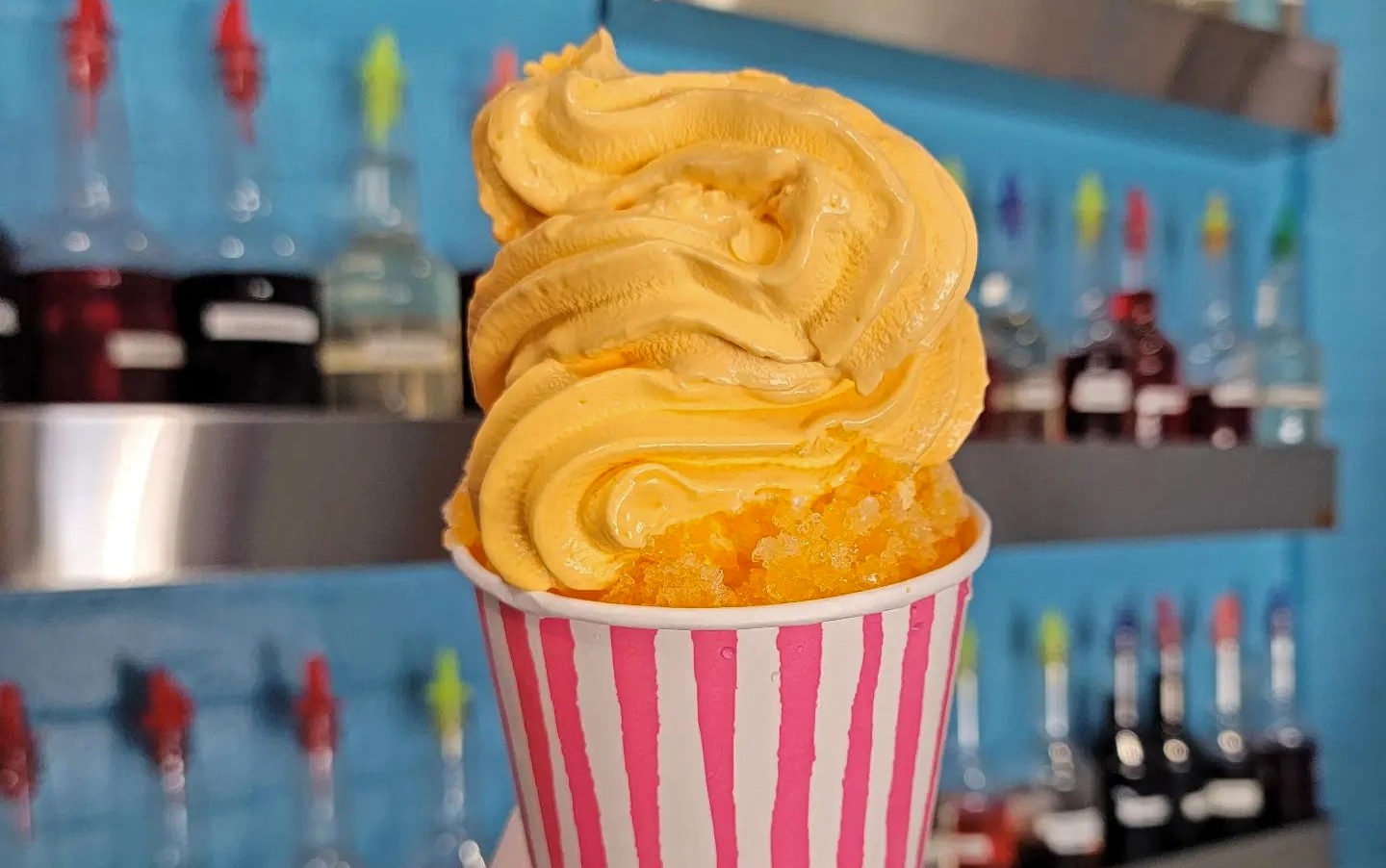
Opie’s Soft Serve and Snowballs: Grabbing an after-dinner treat at this sweets shop has become a community tradition in Catonsville. Flavors range from strawberry to cotton candy, and—if you’re having a hard time choosing between a snowball or ice cream—go for the signature “Snowcream,” which layers soft-serve in the middle and on top of the ice. 1603 Edmonson Ave., Catonsville.
Original Hawaiian Island Snowballs: This summer hangout off of Liberty Road in between Randallstown and Eldersburg has been enticing locals for decades with its tasty treats and daily specials. Though it offers funnel cakes, soft pretzels, gelatis, and ice cream sundaes, the shop is best known for an array of more than 100 snowball flavors ranging from pear and tangerine to Fireball and strawberry-banana. 10636 Liberty Rd., Holbrook
The Peggy: After purchasing Walther Gardens in Hamilton-Lauraville last year, Christopher Heller—of The Margaret Cleveland home and garden shop in Bolton Hill—renamed the property’s beloved snowball stand “The Peggy,” after his great-grandmother. Expect fresh flavors made with pure cane sugar (Candied Orange, Cookie Butter, and French Raspberry, to name a few) and a fun new logo on your pink cup.
Aside from that, Heller is committed to preserving the history of the community gathering spot—dubbed the oldest snowball stand in the country—as well as its age-old egg custard recipe. 3501 Southern Ave.
Quality Snowballs: Stationed just across the street from its sister-spot, The Food Market, on the Avenue in Hampden, this 10-foot shipping container churns out big flavors with toppings like fresh fruit, whipped cream, candy pieces, condensed milk, and torched marshmallow. If you’re feeling adventurous, try concoctions like banana with Oreos or rainbow cream with Nerds. 1014 W. 36th St.
Snoasis: Nothing screams summer like squishing your toes in the sand at this beachy Timonium mainstay—which first debuted in 1977. You can pretty much get any flavor under the sun (we’re partial to multi-colored Rainbow, pictured above) and finish it off with drippy marshmallow or the secret-recipe vanilla topping, for good measure. 30 E. Padonia Rd., Lutherville-Timonium

Stouten’s Marina and Snowball Stop: This neighborhood gem located at Stouten’s Marina on the water in Dundalk has something for everyone, whether you’re jonesin’ for a fruity flavor or in the mood for a peanut butter and jelly snowball (grape topped with peanut butter sauce.) The stand is even equipped with a drive-thru window for the scorchers when it’s too hot to step away from the A.C. 817 Wise Ave., Dundalk
Summer Shack Snowballs: It’s difficult to drive down Falls Road without making a pit stop to this family-owned stand, which offers outdoor seating and plenty of sidewalk chalk to occupy little ones. Head to the royal blue awning to order a colorful cup (think Georgia peach, pink bubble gum, and Tutti Frutti.) 2339 W. Joppa Rd., Lutherville-Timonium
The Snowball Stand: Tucked away in Woodstock, this community gem off Route 99 has been a Howard County favorite since its inaugural summer in 1974. Gather in the gazebo to slurp standouts like blue raspberry, mango, and cola. Be sure to also check out the rotating “flavors of the day” sprawled on a chalkboard sign out front. 1970 Woodstock Rd., Woodstock
The Snowball Effect
How Ice Queens became one of the most popular sweet shops in Locust Point.
By Marie Bosslett
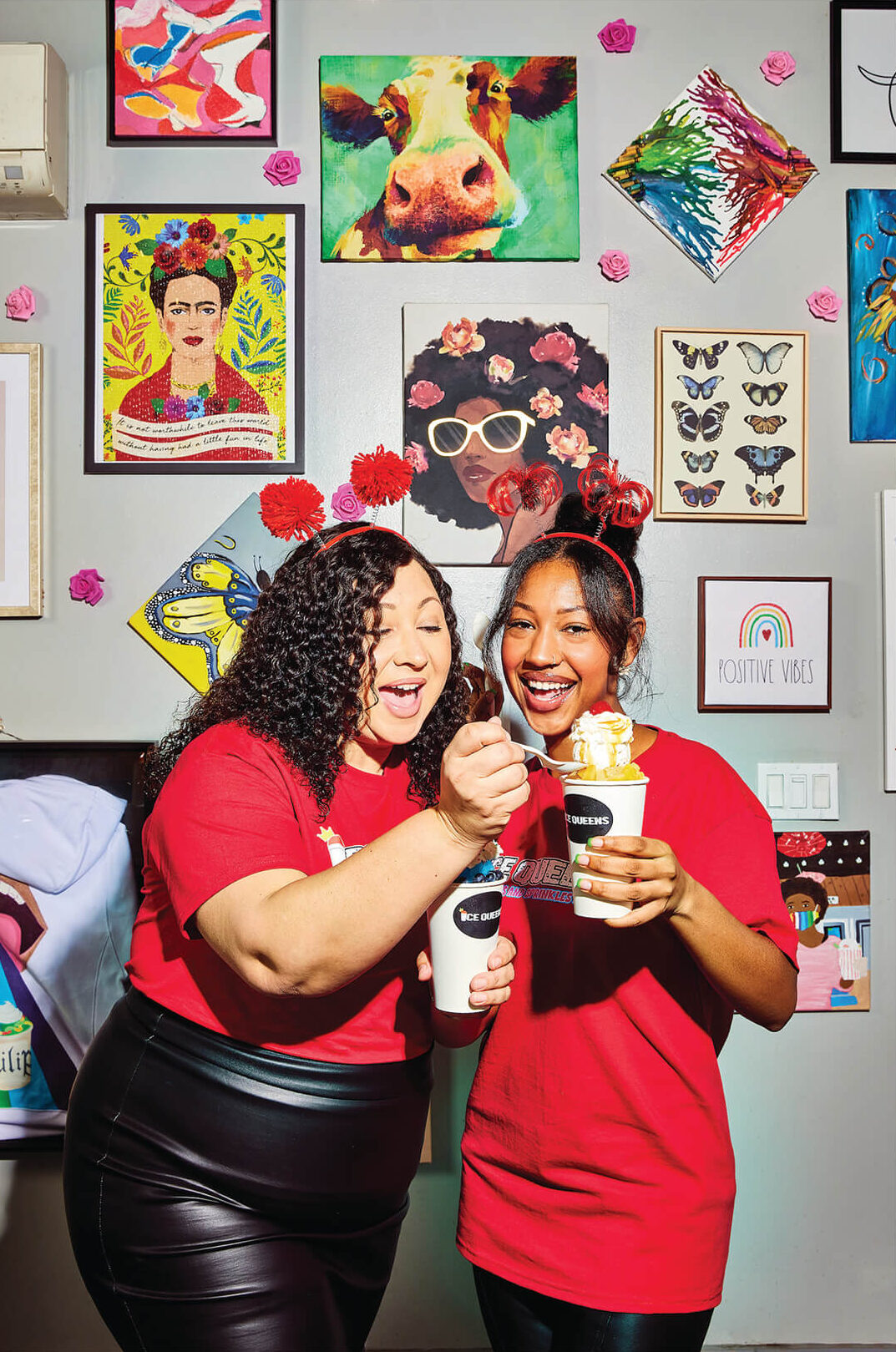
In 2020, mother-daughter duo Melanie and Dasia Kabia opened Ice Queens Snoball Shop on East Fort Avenue in Locust Point. Four years later, its popularity has, well, snowballed, with locals continuing to line up around the block to get a taste on warm days.
We caught up with the bubbly owners to discuss their start, favorite flavors, and what it’s been like to bring their signature New Orleans-style ice to Baltimore.
How did Ice Queens come to be?
Dasia Kabia: I worked at a snowball stand in Southwest Baltimore County for five years and got inspired. I shared the idea with my pediatrician, who is from Louisiana, and she became my “Angel Investor” who gave me my first loan.
Melanie Kabia: When she was young, Dasia’s grandmother used to take her to the same snowball shop that she ended up working at, so it’s a cool family tradition. Snowballs are nostalgic, so it was easy for us to fall in love with the idea.
What is a “New Orleans-style” snowball?
MK: The machine we use was patented in New Orleans and gives super finely shaved ice. We’re still a traditional Baltimore snowball shop with classic egg custard and marshmallow recipes, but you’re also getting that New Orleans twist with sweet cream and fruit.
DK: In my opinion, New Orleans has found a way to make the best ice. Combining a Baltimore snowball with it was a match made in heaven. It’s exactly what I wanted.
Do you often get Baltimore purists who are critical of trying something new?
DK: Of course.
MK: Every day. But we always convince them to try something they may not have had before. That’s a fun challenge for us.
How does it feel to have such a large presence in the community?
MK: It’s an amazing surprise. In two months, we went from two to 20 employees. It’s so humbling and encouraging to have that connection with our customers. It warms our hearts to know that we’re sharing a part of our family just through a snowball.
DK: It’s been an honor to watch my dream grow like this. Starting a business in the middle of the pandemic at 22 years old was very scary, but I always had the community supporting me.
What are your favorite flavors?
DK: Strawberry Shortcake. It’s delicious, looks pretty, and is very Instagrammable.
MK: Our Old Fashioned, which is an egg custard with sweet cream and marshmallow. But Mango Tango is also on my favorites list.

Lindsey Culli vividly remembers the day in the fall of 2021 when she got a phone call from the counselor at her son’s Baltimore County public school alerting her that he had expressed a desire for self-harm. At the time, Calvin was a six-year-old first grader who was struggling to navigate the post-pandemic world, especially after spending his early education in front of screens.
“Calvin was one of those kids who was in kindergarten when the pandemic started,” Culli recalls. Though her son was academically high achieving, she believes that the social isolation of those years stunted his social and emotional growth. “He’s an introverted kid. He was feeling all these big feelings [at school] and he didn’t have a way to express it,” says Culli. “He was saying the most outrageous thing he could say, which terrified the guidance counselor because he started talking about self-harm.”
Naturally, this alarmed his school counselor, who took his words seriously. Thankfully, it eventually became clear that Calvin didn’t have plans to actually harm himself. “He was just kind of grasping at, ‘What is the biggest thing I can say to get somebody to pay attention because I’m not okay. I don’t know the language to talk about what’s wrong. I just know that something is.’”
Eventually, Calvin’s “big feelings” escalated to a point that Culli and Sam, Calvin’s father, decided it was time to seek professional help. Fortunately, Calvin’s school had an arrangement with a private practice therapy group that saw students during the day. His therapist diagnosed him with anxiety and began helping him learn tools to manage it.
“He started seeing a therapist that spring and it was really helpful pretty much right away,” says Culli. “[His therapist] gave him the toolbox that he needed and started putting tools in his toolbox to be able to recognize the emotions he was feeling and name them [and] work through them. That is hard when you’re an adult, but it’s especially hard when you’re only six! He’s come a really long way and it’s a testament to the therapy that he’s gotten and the people that he’s been able to work with.”
Today, Calvin is an active 10-year-old. He still struggles with anxiety—Culli thinks it is likely part of his wiring as someone who strives to be high-achieving. The difference is, when he gets those “big feelings,” he knows how to process them. Best of all, Culli has watched Calvin grow into the creative, empathetic, and thriving kid she always knew him to be.
“We named Calvin after the [comic strip] Calvin and Hobbes,” says Culli. “It turns out he’s actually a lot like the comic book Calvin! He’s very creative. He’s very bright. He’s also a really good friend. He has so much empathy, which probably hinders his mental health a little bit because he takes on other people’s feelings and emotions. I think it’s both a strength and also a challenge to be an empathetic and compassionate person in a world that can be so tough. But now he has the tools to manage it.”
Calvin’s experience with anxiety as a young child is not unique. According to the Centers for Disease Control and Prevention (CDC), about 10 percent of children between the ages of three and 17 have a diagnosed anxiety disorder. Experts contend that it’s normal for kids to experience occasional anxiety about stressful things like academics or social situations. But the National Institutes of Health (NIH) explains that anxiety becomes a disorder when it does not go away and its symptoms interfere with daily activities.
Biologically, the way our bodies experience anxiety is similar to the way we process fear. Fear keeps us safe from danger, preparing our bodies for “fight or flight.” Our heart and breathing quicken to boost oxygen flow to our brain. Our muscles tense up to prepare us to run, fight, or hide. Our minds zoom in with a laser focus on the threat to determine the best plan for safety. Anxiety is the body’s response to a perceived threat.
While this heightened state of awareness is helpful for actual danger, living in a state of high alert about unspecific future threats can be overwhelming—especially for children who may not have the tools to manage these feelings.
Krista Dhruv, LCSW-C, is an individual and family therapist and educational consultant based in Baltimore. She has served as a counselor in K 12 schools and higher education settings and has observed how anxiety presents in children of all different ages.
“Starting with our youngest kids, they might experience somatic symptoms, like belly aches, headaches, and disrupted sleep,” explains Dhruv. “It manifests physically because anxiety is in the body. It’s hormonal—cortisol and adrenaline, a hormonal response to perceived fear, metabolizes in the body. [Anxiety] also shows up as worry language: a lot of ‘what ifs’—‘What if you forget to pick me up? What if nobody wants to play with me? What if I eat something and it makes me sick?’”
Research suggests that the causes of childhood anxiety are complex. Some children may be more sensitive to strong emotions or have a biological tendency toward anxiety. For others, anxiety may develop as a reaction to a significant stressful event, like a death in the family. Environmental stressors, such as food insecurity, parents who fight or argue, or experiences of bullying, abuse, and neglect can also cause anxiety in young people.
Further, larger events and issues, such as climate change or global instability, may also impact children’s wellness—especially for older kids who may be more aware. An often-cited study conducted by the Pew Research Center indicates that more than half of teenagers are worried about a shooting happening at their school.
Other environmental factors inducing worry are, well, the environment. A recent survey published in The Lancet polled 10,000 young people across 10 countries, revealing that as many as 84 percent of respondents were worried about climate change, with 45 percent reporting that climate anxiety affected their daily lives.
Regardless of the constellation of causes behind anxiety, it is important to note that it is on the rise. A Department of Health and Human Resources report in 2022 noted that between 2016 and 2020, the number of children ages 3-17 years diagnosed with anxiety grew by 29 percent and those with depression by 27 percent.
This is important on many levels, not least of which is that a mental health condition is a risk factor for suicide, which is also on the rise among young people.
Increasingly, experts point to a growing cause of mental illness in young people: social media and phone use. Jonathan Haidt, a social psychologist and author of The Anxious Generation: How the Great Rewiring of Childhood Is Causing an Epidemic of Mental Illness, claims that what he terms a “phone-based childhood” is to blame for a many of these unsettling youth mental health trends.
In fact, so great is the impact of social media that U.S. Surgeon General Dr. Vivek Murthy recently called on Congress to require warning labels on social media sites to communicate their potential harms, especially for the developing adolescent brain. And Australia just passed a groundbreaking ban on a social media for children 16 and under.
Haidt likens young people’s unrestrained exploration of this new virtual frontier to launching our children to the planet Mars without first doing an appropriate amount of research to realize their bodies and minds are not suited to survive this alternate planet. The research he presents in his book posits that “overprotection in the real world and under-protection in the virtual world are the major reasons why children born after 1995 became the anxious generation.” Kids’ brains are literally being rewired during their crucial early, brain-building years.
“In this new phone-based childhood, free play, attunement, and local models for social learning are replaced by screen time, asynchronous [or non-real-time] interaction, and influencers chosen by algorithms. Children are, in a sense, deprived of childhood,” explains Haidt.
Anxiety can show up as what ifs: ‘What if you forget to pick me up?’ ‘What if nobody wants to play with me?’
Dhruv agrees and has observed the impact of screen time on today’s youth. “[Social media] is kind of experience where young people are socializing and interacting, but being that they’re online, the whole body isn’t involved—it’s disembodied. Young children aren’t outside as much playing and climbing trees—maybe even spraining an ankle. Kids aren’t taking healthy risks, which are imperative to healthy development.”
“These are normative life experiences that build our resilience and develop a growth mindset,” Dhruv continues. “When most of our [socializing and recreation] is happening online, whether it is video games or through social influencers, we lose that ability to take risks, social or physical or emotional, and to really experience failure as well as success, which is part of life.”
She echoes Haidt’s ideas about asynchronous interactions: “I might text you this morning about a funny thing that my dog did and you might not text me back until 3 o’clock today with a cute little emoji, which feels good.”
But something is off: Human beings aren’t meant to communicate via delayed reaction or strictly through our laptops or phones.
“We are wired to be in community and in connection,” she says. “We should be able to read body language. If I say something and a friend grimaces, I realize I probably shouldn’t say that again, or I should check in with her about that. [With online socializing], we lose all that nuance of the human experience.”
There is, however, a silver lining to the over-sharing that is often seen on social media. Experts note that children are increasingly likely to talk about their mental health with transparency, which is steadily chipping away at the stigma of mental illness. There are additional benefits to phone use and social media. For example, many kids who may feel marginalized due to their differences can more easily find their community online.
And experts are keen to note that the phone itself is not the enemy: If used responsibly, it’s a valuable tool to help us connect and make life easier. The key is to make sure parents place limits on the amount of time kids spend on screens and the content they view.
“The one positive about social media is that it allows access for a great deal more information,” explains Chad Lennon, MD, a child and adolescent psychiatrist for Sheppard Pratt. “People are communicating more about their mental health.”
Young people are more aware of mental illness—and the resources available to help.
“What has happened over the past 10, maybe 15, years or so is a complete shift. Now what we see that most of the people coming to us for services, whether it’s in a school environment or private practice, are already coming with the diagnostic language. They’re coming with deep attunement to their emotional experience, saying specifically, ‘I have anxiety,’ or ‘I think I’m neurodivergent,’ or ‘I’ve had this many years of treatment,’” shares Dhruv.
And therapy really does help. Calvin is a perfect example. The tools his therapist gave him were the key ingredients for helping him return to the thriving and intelligent kid his parents knew him to be.
“I think therapy is very helpful for everyone, but if you have anxiety, without [therapy], it can be hard to go through daily life and not get overwhelmed or upset,” says Calvin, with a thoughtfulness and maturity that belies his years. “Therapy has helped me to be able to be in certain places or spaces and without feeling afraid or anxious. I have more friends now and I can do things I think would be fun without being overwhelmed or afraid.”
For parents of children with anxiety, sometimes it’s hard to know what they can do to help. Lennon advises the following game plan: “First, parents really need to know themselves. The best way to help your own child is if you have a sense of your own emotional regulation,” he says. “Secondly, I’m really big on helping kids develop coping skills—and I use that term very generally because really anything can be a coping skill, as long as you know it helps you reduce your anxiety. Coping skills can be anything from playing a sport, going for a walk, taking a deep breath, reading or drawing, connecting with friends, even video games can be helpful, if used properly.
“[Thirdly,] connect with someone you trust,” shares Lennon, who adds that this doesn’t necessarily need to be a therapist. “This could be a parent, aunt, uncle, or coach. Helping a child connect to someone they trust helps them realize they are not alone, which goes a long way toward reducing anxiety.”
Therapist Krista Dhruv also advises that a great starting point for finding help for school-aged children is the school counselor and/or pediatrician. “The school counselor is a great first place to go,” she says. “They don’t necessarily know your child best, but they know this age range really well and can help you understand this developmental stage and what’s normative, typical, or atypical behavior.”
The family’s pediatrician is also trained to spot an anxiety disorder or help a family understand how to best help a child. Furthermore, they can examine if there is a physical cause for anxiety, especially when a child presents with somatic complaints. Finally, there’s a practical consideration for reaching out to the pediatrician: They can provide a referral for mental health services, which in many cases makes it easier for your health insurance to defray these expenses.
Fortunately, experts agree that most children with anxiety can reduce its impact through a combination of therapy, appropriate medication, and lifestyle changes.
At the welcoming watering holes that we round up below, you can grab a Guinness, listen to real-deal tunes, and fill up on everything from classic corned beef and cabbage to hearty Shepherd’s pie while toasting the Emerald Isle.
An Poitin Stil: At this Timonium fixture, a jam-packed itinerary includes nightly food specials, drink deals, performances, and events leading up to the annual St. Patrick’s Day blowout. Starting at 9 a.m. on March 17, the pub will offer beat-the-clock specials on Guinness Blonde, Harp, Smithwick’s, and Tullamore Dew drinks; five for $26 beer buckets; and $14 32-oz. Crush and mule buckets. Outside, the live music tent will feature local Irish greats like Gaelic Mishap and The Shamrogues from 11 a.m.-midnight. 2323 York Road, Timonium.
Claddagh Pub: Head to Canton for the annual Meet in the Street at this fan-favorite pub. The two-day celebration on O’Donnell Square will kick off on Saturday, March 15, highlighting food and drink specials and six local bands—including Crushing Day, Starcrush, and The Mad Dabbers—throughout the weekend. 2918 O’Donnell St.
Delia Foley’s: Throw on your green getup and a pair of sunnies for this annual block party in Federal Hill—where you can chow down on wings, grab a pint, and jam to nonstop live music both inside and outside March 15. A few important notes: all attendees will be charged a $10 cash-only cover; the first 500 people through the door will receive a green koozie; and you can score a free drink if you register to become a member of the South Baltimore Neighborhood Association on site. 1439 S. Charles St. $10
Guinness Open Gate Brewery: In true Guinness fashion, Halethorpe’s renowned beer behemoth is celebrating with all things brews and bagpipes this weekend. Guinness’s Irish Village will feature aptly themed food stalls, traditional music, trivia, and, of course, plenty o’ pints. There are also ticketed experiences on offer, including admission to the new Hidden Harp tiny pub on the grounds, as well as guided food and beer pairings. 5001 Washington Blvd.
James Joyce Irish Pub & Restaurant: Can’t make it across the pond? Just head to James Joyce in Harbor East. The fan-favorite fixture will be hosting a holiday kickoff party on March 15, parade after-party on March 16, and a full rager on the big day. For brunch service on March 16 and 17, expect specialties like Irish cheddar-stuffed omelets and the “Clarinbridge Irish Fry” platter with eggs, brown bread, sausage, and black pudding. 616 President St.
Kelsey’s Irish Pub: The shamrock shenanigans at this Ellicott City favorite just get better with age. Arrive early on the big day for kegs and eggs, plus $5 Guinness pints and Irish coffees beginning at 8 a.m. Then stick around for a special St. Pat’s menu and live music by Brandt Dunn, DJ Alfie, and Mo Stringz all day long. 8480 Baltimore National Pike, Ellicott City.
Looney’s Pub: All locations of this homegrown pub chain—which operates venues in Perry Hall, Bel Air, Maple Lawn, and College Park—have their own set of specials and back-to-back performers booked for St. Pat’s weekend. Hit up your local Looney’s to jam to the live bands, plus look out for beat-the-clock deals (the earlier you arrive, the better), Irish brunch dishes, and more shenanigans. Locations vary.
Mick O’Sheas: Visit this Mt. Vernon stalwart to get a front-row seat to the St Patrick’s Day Parade on Sunday. As always, the team brings the same energy on parade day as it does on March 17, featuring live music, dance performances, and food specials all day long. (Choose from comforting bangers and mash, fish and chips, Shepherds pie, corned beef Reubens, and more.) 328 North Charles St.
Shannon’s Pub & Grille: At this festively decorated hangout near Lansdowne, come decked out in your green and gold to line your stomach with everything from Shepherd’s pie to wings to crab cakes before ordering a pint. This year, the spirited St. Patrick’s Day festivities will also include a retro dance party featuring ’70s, ’80s, and ’90s hits spun by DJ Pumpin Paul on Friday, March 14. 4401 Annapolis Rd.
Slainte Irish Pub and Restaurant: Forever a favorite in Fells Point, this Irish pub and soccer fan headquarters offers traditional pub grub all the time. But the vibes are at an all-time high throughout March, when you can find rotating specials like Irish espresso martinis and Shepherd’s Pie empanadas. Swing by during St. Patrick’s Day weekend to dig into classics such as corned beef sandwiches, fish and chips, Dubliner mac and cheese, and the famous Irish bibimbap bowl. 1700 Thames St.
Ye Olde Emerald Tavern: Billed as “Baltimore’s St. Patrick’s Day headquarters,” this Parkville staple routinely hosts a multi-day bash featuring an outdoor live music tent and a ton of food specials. Come hungry to enjoy wings smothered in Guinness sauce, corned beef and cabbage with potatoes, Shepherd’s Pie, bangers and mash, and Irish potato soup March 15-17. 8300 Harford Rd, Parkville.
Looking for a more comprehensive guide to St. Patrick’s Day bar crawls, concerts, and family-friendly events? We’ve got you covered, here.
]]>Of course, an important part of any snow day schedule is sustenance, and a handful of local bars and restaurants have braved the cold to offer specials to help you warm up today. Mayor Brandon Scott and other local officials have advised residents against all non-essential travel, but if you happen to be within walking distance, here are a few neighborhood spots to indulge:
Barcocina: Pull out your snow boots and make your way across Broadway Square to enjoy $6 house margs while watching the flakes fall on the harbor in Fells Point.
Delia Foley’s Pub: If you live in Federal Hill or Riverside, bundle up tight and head to this South Charles Street staple—which is opening up early for lunch service at 1 p.m. Aside from wintry Gingerbread Espresso Martinis ($2-off today) and $12 Bud Light pitchers, look out for happy hour pricing in full effect from 1-7 p.m.
El Bufalo and The Worthington: From 11:30 a.m.-2 p.m., the Canton Square sister spots are both cracking open $3 Surfsides and pouring $5 bombs.
Frazier’s on the Avenue: Beginning at 11 a.m., the Hampden dive is encouraging neighbors to come hang out and shoot free pool all day. After your game, cozy up at a booth with a Boh and a basket of half-price wings.
The Food Market: Comfort food is the name of the game at this Hampden hotspot—and snow days are certainly no exception. If you can trudge your way onto the Avenue, expect $12 “Fast Food Market” menu items during lunch, including a cheesesteak, hot honey crispy chicken sandwich, and double cheeseburger with crinkle fries. Draft beers will be priced at $5 all day, and if you want to really treat yourself after all of the shoveling, crab cake dinners will be $20 tonight. (All specials also available at the Columbia location.)
La Food Marketa: The Food Market sister-spot in Pikesville is also getting in on the fun with a special Snow Day Taco Party to-go package. If you need something easy to feed the fam, enjoy the $50 meal deal that includes four beef barbacoa, turkey chorizo, and pork tacos (on your choice of tortilla) with all of the necessary fixins’.
Lee’s Pint & Shell: In Canton, this reliable corner bar is making the day off a party by pouring Rumple Minze shots for a buck and serving stacked smashburgers for $10.99.
Max’s Taphouse: The dedicated team at Max’s has shoveled the sidewalk and opened the doors to the corner watering hole on Broadway Square in Fells Point. Stop in all day (they’ll be behind the bar “until the last pint is poured”) for a draft, bottle, or stiff bourbon to warm up. (Not for nothing—the WiFi is strong if you’re on the clock from home today.)
Peter’s Pour House: In the heart of downtown, Peter’s is open and ready to serve hot meals and stiff drinks all day long. Snow day specials include steamy bowls of Maryland crab soup; homemade beef stew with herb toast; and a smokehouse burger topped with bacon, onion rings, barbecue sauce, and melty provolone.
THB Bagelry & Deli: Get toasty with a bagel sandwich from your local THB. Throughout the storm, all locations are offering $3-off any $15 order with the promo code SNOW2025 when you order online.
Wayward Bar + Kitchen: Once lunchtime hits at 1 p.m., Fed Hill locals can enjoy $2.50 domestics and $4 Surfsides at this neigborhood hotspot. While you’re there, grab an order of nachos or a toasty sammy to warm up before your walk home.
Wet City: Take a snowy walk past the Washington Monument to cozy up in a corner at Wet City. The Mt. Vernon brewpub is open and ready to serve plenty of hot cider, whiskey, dark beers, and burgers.
If you need to stock your fridge today, Off the Rox in Highlandtown and Whitey’s Liquors in Linthicum are open.
*This list will be updated.
]]>Alma Cocina Latina: Spend your final night of 2024 indulging in Venezuelan flavors at Alma, which will offer its regular winter dinner menu plus two celebratory specials by chef Hector Romero. Among them are the gluten-free Lobster Alma (poached lobster, dried ají dulce dashi, potatoes, carrots, pea emulsion, green apple, and asparagus) and a cornish hen galantine with foie gras, black truffle, pistachios, and green pepper mustard.
Neighborhood: Station North
Price: A la carte
BLK Swan: Grab a group and dress to the nines for this—fittingly—black-tie affair at BLK Swan in Harbor East. Tiered ticket options ($75-195) offer three seatings for dinner curated by executive chef Saon Brice, plus bottle service, and live music spun by DJ Hi-Def.
Neighborhood: Harbor East
Price: $75-195
The Bygone: With 360-degree views of the Inner Harbor, the top-floor restaurant at the Four Seasons Baltimore is arguably one of the finest spots to watch the Charm City fireworks. Raid your closet for your swankiest attire to enjoy a premium open bar, full buffet spread (think: seafood, carving stations, and the works), live DJ music, and an epic Champagne toast at midnight. Bygone sister-spots Tagliata, The Elk Room, Italian Disco, and Monarque—all located just around the corner on the property dubbed “Atlas Corner” on Fleet Street in Harbor East—are also hosting a joint bash that gives ticketholders access to all venues, with an open bar, standing buffets, and live entertainment at each one.
Neighborhood: Harbor East
Price: $342
Cindy Lou’s Fish House: As far as front-row seats go, you can’t get much closer to the Inner Harbor fireworks than Cindy Lou’s at Harbor Point. Cozy up around the fireplace to watch the blasts shimmer over the water while enjoying cocktails and fancy specials including a crab salad with caviar, Lobster Wellington with truffled mash, and raspberry Semifreddo topped with a pistachio crumble.
Neighborhood: Harbor East/Harbor Point
Price: A la carte
Cinghiale: If an authentic Italian meal is in order for NYE, secure reservations to enjoy a four-course feast—with special Alba white truffle shaving add-ons—at Cinghiale. There, diners will choose from a selection of antipasti like pumpkin soup or tuna crudo before moving on to pasta plates (Spaghetti Neri with lobster sauce and caviar, anyone?) a main meat or fish dish, and treats like a hazelnut chocolate tart.
Neighborhood: Harbor East
Price: $129, plus optional truffle shavings at market price
CookHouse: Join chef-owner George Dailey for an all-inclusive cocktail party at his buzzy Bolton Hill spot. Aside from the open bar, the evening will offer guests posh passed bites (think: Wagyu nigiri, caviar blinis, and lobster croquettes), chilled seafood towers, carving stations, and a colossal charcuterie spread. If you’re able, save room to savor sweets such as petit fours, truffles, and assorted cakes.
Neighborhood: Bolton Hill
Price: $290
Gertrude’s Chesapeake Kitchen: For the first time ever, the team at the Baltimore Museum of Art fixture is dedicating its New Year’s service to the culture of the Emerald Isle—which means celebrating the ball drop on Irish time (7 p.m. here) and getting cozy in your pajamas well before midnight. The party from 5-8:30 p.m. will highlight a buffet of more than 20 Irish dishes (prime rib, Shepherd’s Pie, smoked salmon on brown bread—you get the vibe), live music by Jimmy Eagan & the J. Patrick’s Allstars, and a cash bar for Guinness and Bailey’s.
Neighborhood: Charles Village
Price: $100
Gunther & Co: Per tradition, the team at Gunther & Co. is getting festive with a four-course chef’s tasting menu with optional wine, oyster, and shellfish pairings. Celebrate another year gone by with fancy fare such as lobster bisque, scallop ceviche, Wagyu beef carpaccio, seared tuna loin, sous vide short rib, and a seafood bouillabaisse with a grilled French baguette for dipping. Pretty pastries such as lemon chiffon cake and a dark chocolate mousse bomb are on deck for dessert.
Neighborhood: Brewers Hill
Price: $150 (not including add-ons)
Maggie’s Farm: At this Harford Road haunt, diners will enjoy a three-course prix-fixe with the option to add wine pairings. The full menu features eats like cream of crab soup, a poached pear salad, Syrian sour cherry meatballs, bacon-wrapped Wagyu meatloaf, pan-seared duck breast, and a cheesecake inspired by the viral Dubai chocolate.
Neighborhood: Hamilton-Lauraville
Price: $90-125
Sally O’s: Chef Jesse Sandlin and her staff are going all out with a prix-fixe highlighting filling comfort foods. Start off with bites like phyllo-wrapped feta or panko-breaded Buffalo cauliflower before moving on to main courses like blue crab risotto or black truffle and burrata caramelle pasta. And be sure to save room for the corn tres leches cake or cardamom panna cotta for dessert.
Neighborhood: Highlandtown
Price: $75
The Tilted Row: Book a table at this recently refreshed Bolton Hill eatery to indulge in three courses with optional wine pairings. Your last meal of 2024 will feature dishes such as venison tartare on crispy sweet potato chips, cast-iron diver scallops, roasted duck with candied chestnuts, and grilled sirloin with garlic mash. The dessert menu highlights four options to end on a sweet note, including cranberry upside-down cake and deconstructed s’mores in a bowl.
Neighborhood: Bolton Hill
Price: $85
Toki Underground: If you find yourself in need of sustenance to soak up all of the cocktails after the midnight, head to this Harwood hangout. The Toki team will be hosting a special late-night ramen service from 10 p.m. to 3 a.m., serving up their steamy bowls that fuse an array of different flavors and noodle combos.
Neighborhood: Harwood/Waverly
Price: A la carte
Topside: With the glowing Washington Monument in the distance, snuggle up to a table at this top-level hangout inside Hotel Revival. A prix-fixe for two (choice of two appetizers, two entrees, and a dessert to share with complimentary bubbles) showcases options such as seared Spanish shrimp, honey-balsamic whipped ricotta on raisin bread, rockfish with coconut curry rice, caramelized mushroom tagliatelle, a spice cake with vanilla bean gelato.
Neighborhood: Mt. Vernon
Price: $150/couple
Victoria Gastro Pub: Howard County locals will be happy to hear that this area stalwart is offering an array of chef-driven a la carte specials, as well as a three-course prix-fixe for $55. Among the swanky offerings are fried Oysters Rockefeller, braised leg of lamb, and vanilla sponge cake with fresh berries. There will also be free bubbly when the clock strikes twelve.
Neighborhood: Columbia
Price: $55
Hard to say how it all started, but it’s a known fact that a typical Jewish Christmas is most often celebrated over Chinese food. (Could it be that when immigrants came through Ellis Island to the Lower East Side of New York, dumpling houses were not far from the shtetl?) It’s known that many families not celebrating the holiday have a Yuletide tradition of going for Chinese food and a movie. Other cultures have even adopted the custom, too.
“It’s one of our busiest days of the year,” says Joey Chiu’s manager Mimi Yu.
It just doesn’t feel like Christmas without a plate of moo goo gai pan. Here are a few of Baltimore’s Chinese food restaurants that are open on Christmas Day:
Asian Court: For more than a decade, Howard County diners have flocked to this Cantonese restaurant—which is perhaps most beloved for its daily dim sum service. Aside from the small bites (everything from shrimp dumplings to steamed chicken feet with oyster sauce) the Turf Valley Towne Square spot offers a lengthy menu with every dish you could imagine, including steamy noodle soups, chow mein, beef with string beans, deep-fried quail, and Hong Kong-style sweet and sour ribs. 1105 Resort Rd. Ellicott City. 410-461-8388
David Chu’s China Bistro: Located adjacent to Seven Mile Market on Reisterstown Road, this certified kosher restaurant has all of the classics—from cold sesame noodles and fried chicken wings to Kung Pao chicken and Mongolian beef. There’s also a lengthy list of meatless meals, including crispy eggplant in garlic sauce, orange bean curd, and crunchy sautéed string beans. 7105 Reisterstown Rd. 410-602-5008
Grace Garden: This Odenton gem is all about authenticity. Look out for family-style portions of the signature pocket tofu, fish noodles, and tender tea-smoked duck with perfectly crisp skin. The sugary fried doughnut holes are also a must to end the meal on a sweet note. 1690 Annapolis Rd., Odenton. 410-672-3581
Joey Chiu’s Greenspring Inn: This charming restaurant, complete with chandeliers and Greenspring Valley vistas, offers everything from seafood salads to sushi boats. With a wide array of duck, pork, steak, lamb, and fish dishes, regulars frequently flock to Joey Chiu’s for special occasions. For Christmas Eve and Christmas Day carryout orders, the restaurant requests that you call three to four hours in advance. 10801 Falls Road, Lutherville. 410-823-1125
Jumbo Seafood: This Pikesville spot has been around for years, making a name for itself in the Northwestern suburbs as a go-to for diners with cravings for classic dishes and sushi rolls. As its name signifies, the portions are hefty, so don’t expect to finish without leftovers. Favorites include scallops with ginger and scallion sauce, chicken and string beans, hot and sour soup, and house-made lo-mein. 48 E. Sudbrook Lane, Pikesville. 410-602-1441
Kung Fu 12 Szechuan House: This BYOB spot in the former home of Lutherville’s Szechuan House—which now operates at 2159 York Road—boasts a menu inspired by authentic Szechuan ingredients. Start things off with orders of scallion pancakes or cheese wontons before digging in to entrees like shredded pork with spicy garlic sauce, moo shoo, or classic mapo tofu. 1427 York Road, Lutherville. 410-825-8181
New Asian Taste: Plan to stroll around Hampden’s Miracle on 34th Street lights before or after grabbing grub from this Chinese food spot—which conveniently sits across the street. With a menu spanning everything from sushi rolls and sesame balls to drunken noodles and vegan Kung Pao chicken rice bowls, there’s something to please all palates. 3400 Chestnut Ave. 410-467-0100
NiHao Baltimore: This authentic Chinese food gem in Canton—helmed by lauded chef Peter Chang—will be dishing out favorites from its full menu on Christmas Eve and Christmas Day. Make a reservation or place a carryout order to chow down on the signature Peking duck, cumin spicy lamb chops, sweet and sour crispy branzino, and eggplant in a spicy garlic sauce. There are also noodle bowls, dim sum classics like gyoza and pork buns, and an array of vegan offerings. 2322 Boston St. 443-835-2036
The Orient: This Perry Hall favorite offers hearty bowls of steamy soups, crunchy egg rolls, and a pages-long list of shareable entrees. You can’t go wrong with the orange chicken, crispy beef, Mongolian pork, or lo mein noodles with mixed vegetables. 9545 Belair Rd. Nottingham. 410-256-8100
Orient Express: This St. Paul Street staple has long been a favorite of locals in the Charles Village area. The menu, which is broken down into categories such as “American Chinese Cuisine” and “Szechuan Street Food,” offers everything from sesame chicken and Kung Pao shrimp to clear noodles in chili sauce and sweet-and-sour cucumber. 3111 St. Paul St. 410-889-0003
Peter Chang Baltimore: The namesake chef’s second Charm City outpost—located near the Johns Hopkins medical campus—has quickly become a destination for dim sum, bubble tea, and a lengthy list of other vegan, seafood, and noodle dishes. Cozy up at a table or place a takeout order, but whatever you do, “do not forget dessert, here in the form of eight-treasure osmanthus sticky rice and black-sesame egg-yolk bao,” as research editor Amy Scattergood wrote in her February review. 1923 Ashland Ave. 443-888-3688
Red Pepper Sichuan Bistro: Head to this Towson hangout to carry out Sichuan dishes that fuse salty, sour, sweet, bitter, and even floral flavors. Written in both Chinese and English, the menu lists offerings like spicy hot pots, steamed chicken with chili sauce, stir-fry Shanghai cabbage, pork belly with sticky rice, and sweet-and-sour fish fillets. The owners now also operate Tea Horse Sichuan Bistro in Ellicott City, as well. 11 Allegheny Ave. Towson. 410-832-7333
Sonny Lee’s Hunan Taste: In addition to the delicious dishes, the comforting atmosphere of this beautifully decorated restaurant has made it a community stalwart for more than a decade. The service is always top-notch, and if you’re lucky enough to catch a glimpse of Sonny himself, you’ll find him making his rounds greeting guests or carving Peking duck at your table. Carryout favorites include handcrafted sushi rolls, orange beef, sizzling jumbo shrimp, and crispy Hunan soft shell crab. 750 Main St. Suite 104A, Reisterstown. 410-833-7288
Water Song Yunnan Kitchen: In Federal Hill, Water Song has become a go-to for sharable delicacies of the Yunnan province—including hot pots, vegan wontons, spicy tofu slices, and the signature Aunty Ying’s BBQ Ribs slathered in house sauce and topped with fried mint. 21 E. Cross St.
As those advent calendars continue the countdown to Dec. 25, many local watering holes are transforming their interiors into mini winter wonderlands. Staff have sufficiently decked the halls with lights, bows, tinsel, candy canes—you name it—all to create a cozy atmosphere for guests to snap photos and get into the holiday spirit. And, as the star on top of the Christmas tree, many of these bars are also offering specialty drinks (think: toasted marshmallow martinis and “Jingle Juice” cocktails) to round out your very-merry visit.
From vintage Santa statues to flickering fireplaces, even Scrooges will find something to smile at while grabbing a drink at the following spots this season.
Ale Mary’s: Cleverly named “Christmas on Fleet,” the holiday pop-up concept at this Fells Point watering hole has everything you need to feel merry and bright. Enter the bar through the illuminated archway out front and snag a table beneath glimmering ornaments, wreaths, tinsel, and lights strung across the ceiling. (Correctly guess how many ornaments are hanging and win a prize after Christmas!) If the cozy decor and fun photo ops aren’t enough to encourage a visit, check out the list of festive food and drink specials—which includes Grinch spinach artichoke dip, Tiny Tim’s turkey sliders, Santa’s Gin and Juice, and a Mistletoe Espresso Martini. Reservations: No need. But be sure to mark your calendar (and check it twice) for special events like holiday card and snowflake-making on Dec. 11 and an ugly sweater party on Dec. 14.
Ampersea: Beautifully curated with wintry white accents, this waterfront destination in Fells Point has officially brought back its annual pop-up. The dreamy dining room glows with a frosty-blue backlit bar, columns wrapped in fluffy flowers, and thousands of white snowflakes and LEDs hanging from the fabric-draped ceiling. You can also head onto the heated back patio to enjoy a fireside glass of Champagne or a cozy cocktail—like a vanilla vodka and Bailey’s concoction garnished with a flaming marshmallow. Reservations: Make them via OpenTable, here.
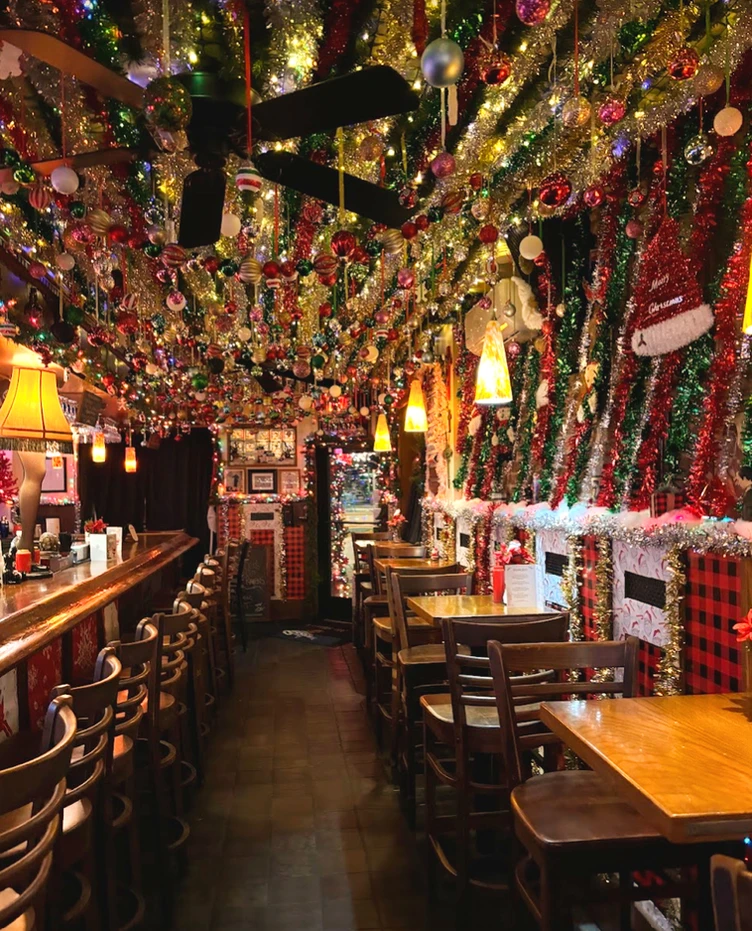
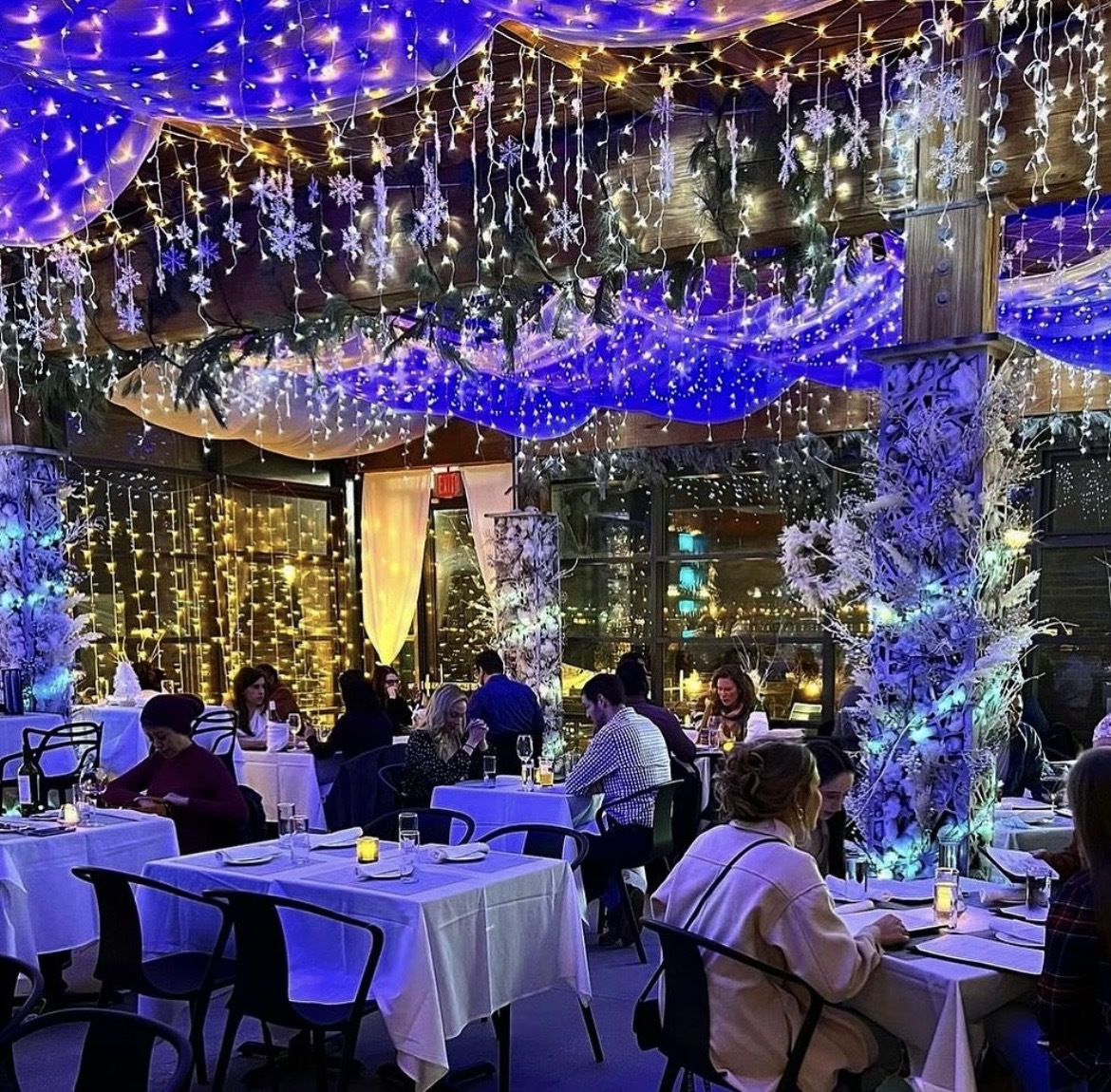
Dutch Courage: It’s the most wonderful time of the year at this Old Goucher favorite, whose annual “Gin-gle Bells” takeover is officially in full swing. Throughout December, the bar and its back patio are festooned with everything from stockings and snowflakes to candy canes and Christmas trees. And the staff puts just as much thought into the seasonal menu as they do the decor. Pair charcuterie boards, snacks, sammies, and toasts (fig and prosciutto on Motzi Bread, anyone?) with an array of creative sips in vintage vessels. You can’t go wrong with the cinnamon and chai-infused “Mistle Toasty” spirit-free “Yuletide Joy” with dark chocolate and orange bitters, or a classic cup of house eggnog spiked with Jamaican rum. Reservations: Snag them using OpenTable, here.
Golden West Cafe: While shopping small along the Avenue or checking out the Miracle on 34th Street lights in Hampden this season, make sure you pop into Golden West, which is fully decorated inside and out. (Starting with the custom window art that catches guests walking in.) While pointing out all of the inclusive decor—including everything from wreaths and reindeer to Hanukkah dreidels and Kwanzaa kinaras—take your pick from the drinks on the “Naughty or Nice” menu crafted by beverage director Dee Acosta. The cleverly named cocktails include the “Gingy,” “Miracle on 36th,” and “Papa Elf” (nice) and the “Yippee Ki Yay MF,” “Kris Krampus,” and “You’ll Shoot Yer Eye Out” (naughty). Reservations: Snag them via Resy, and be sure to check out Golden West’s special event lineup (drag parties, breakfast with Santa, etc.) here.
Johnny’s: Retreat from the cold at this Roland Park mainstay, whose cozy and inviting feel gets dialed up even more this time of year. The team has festooned the bar and dining room with garlands and wreaths in shimmery shades of red, green, and gold, plus fun additions like a Christmas Story-inspired leg lamp and a Bawlmer flamingo in a Santa hat. Pro tip: Your future self will thank you if you grab some of Johnny’s famous Christmas cookies before heading out. Reservations: Make them via Resy.

Lib’s Grill: The Liberatore’s little-sister concept is bringing back its all-out holiday experience aptly named “Cocktails & Candy Canes.” At all three locations in Perry Hall, Maple Lawn, and Bel Air, enjoy eats and drinks amongst floor-to-ceiling snow, stars, and Santas. But the decor is just the beginning. Throughout the month, the yuletide interior will also be the setting for special events such as Christmas Carol-oke on Dec. 12, a Santa brunch on Dec. 14, an ugly sweater bash on Dec. 18, and a pajama recovery party the day after Christmas. Plan a visit to experience the bar in all of its cheery glory while imbibing a “Buddy the Elf” Old Fashioned, pineapple and citrus-infused “Mele Kalikimaka,” or a round of “Getting Blitzen’” cinnamon whiskey shots, among other holly-jolly drinks. Reservations: Make them via Resy, here.
Miracle Pop-Up Bar: This nationally renowned holiday attraction is making its return to Power Plant Live, once again taking over Leinie’s Lodge and Beer Garden this winter. Open throughout the end of December, the bar pairs festive fun with holiday nostalgia. Every square inch is adorned with tinsel, trinkets, lights, ornaments, sleigh bells, and other snowy surprises. (Don’t be shocked to spot presents hanging from the ceiling or an animatronic Santa behind a DJ booth.) The themed food and drink menu serves sweet-and-savory snacks (think along the lines of cranberry-glazed turkey meatballs and sprinkle-topped Belgian waffles) with cocktails like the “Chrismapolitan” and “Snowball Old Fashioned.” Reservations: Make them for via OpenTable, here.

Sally O’s: The weather might be frightful, but this Highlandtown hangout is keeping it bright inside with tons of shiny tinsel, neon strung lights, sparkly ornaments, snowflakes, and even a white Christmas tree. Aside from serving up highlights on their regular menu (always order the smashburger!), chef/owner Jesse Sandlin and her crew are offering holiday drinks and gearing up for the bar’s annual seven-course Feast of the Seven Fishes dinner Dec. 22-23. Reservations: Grab a table on Tock, here.
Slainte Irish Pub & Restaurant: Equipped with extravagant exterior lights and occasional “snow showers” from the roof, this Thames Street sports hub screams holiday cheer before you even set foot through the doors. Inside, the space is perfect for a holiday-themed game of I-Spy, highlighting everything from wreaths and gingerbread men to colorful blinking lights and paper lanterns hanging from the ceiling. Reservations: Not necessary, but be sure to follow Slainte on Instagram for announcements on holiday programming—including drink specials (including Christmas Tree ‘Tinis), themed brunches, celebratory crafts, and movie marathons—happening throughout the month.

Sopro Christmas Bar: On the heels of debuting fresh interior updates, the team at Sopro in Canton has also transformed its upstairs bar into a decked-out holiday hub. Grab a group to enjoy themed eats and drinks amongst all of the stockings, garland, presents, twinkling lights, and wrapping paper wall panels that double as great photo backdrops. Menu standouts include peppermint and gingerbread martinis, a cranberry “Yule Mule,” “Rumple the Red-Nose Reindeer” shots, caprese candy canes, and Blitzen’s Brussels sprouts. Reservations: Walk-ins only. All ages until 8 p.m.
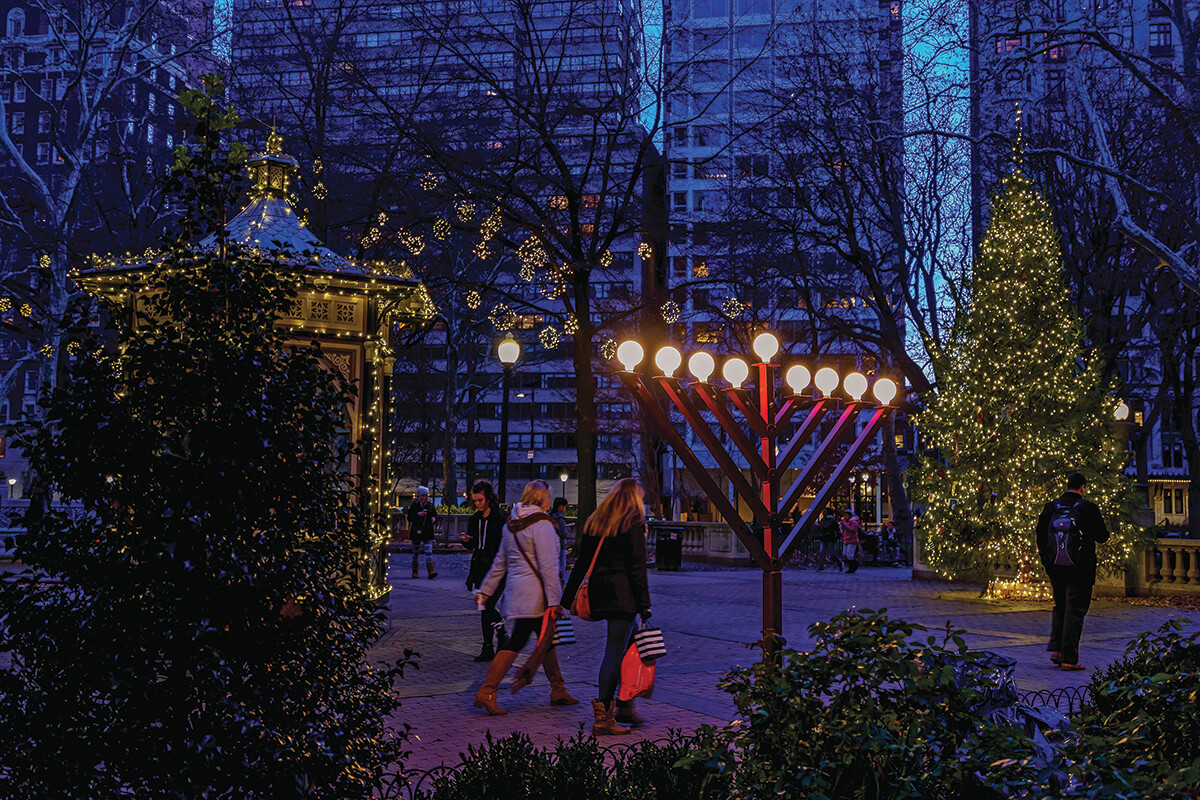
If there’s one word to describe December, it’s palpable. The final month of the year has an aura that none of its 11 predecessors possesses. There’s the warmth of overdue family gatherings. The chance to indulge that holiday sweet tooth. The joy of celebrating the religious and cultural traditions dearest to us. The unmistakable nip in the air. And, of course, the satisfaction of self-reflection and anticipation of the year ahead.
Looking to expand your seasonal sensibilities even further? Well, if travel is a path to discovery, then exploring the many celebrations of various Mid-Atlantic communities this winter could be as eye-opening as it is entertaining.
Visit Philadelphia, for example, where eight days and nights of festivities commemorate Hanukkah. Or attend one of the East Coast’s largest Kwanzaa festivals in Virginia’s vibrant capital city of Richmond. Travel to historic Bethlehem (Pennsylvania, that is), where Moravians observe Christmas with carols, candles, and a special holiday market. Or channel Charles Dickens as New Jersey’s Cape May gets decked out for its over-the-top, Victorian-style yuletide cheer. To usher in the new season, there’s also a traditional Swedish winter solstice ceremony in a centuries-old Delaware church.
Wherever you end up for your winter holidays, here’s our guide to some celebratory cities worth a visit.
Dec. 25 – Jan. 2: Hanukkah in Philadelphia
Fifty years ago, a local rabbi lit a rustic, four-foot-high menorah in front of Philadelphia’s Independence Hall and helped popularize a now-ubiquitous national tradition: the ceremonial public lighting of outsized Hanukkah menorahs. And to this day, the City of Brotherly Love’s sizeable Jewish population continues to celebrate Judaism’s joyous eight-day Festival of Lights in a big way for residents and visitors alike.
Now it’s a city-wide affair. Catch menorah lightings at city landmarks such as Independence Hall, Rittenhouse Square, and South Philly’s Singing Fountain. Following the lighting of a giant electric menorah at the Betsy Ross House, where its namesake is said to have sewn the first American flag, the Old City Jewish Arts Center serves traditional foods like potato pancakes (latkes) and jelly doughnuts (sufganiyot) and distributes Hanukkah gelt coins to kids.
Enjoy another beloved Philly tradition when menorah-topped vehicles parade through Center City and Main Line Philadelphia during their separate parades. On Dec. 28, the Chevra, a group of young Jewish professionals and graduate students, throws what’s billed as the city’s largest Hanukkah fest. The bash at Rittenhouse Square features live music, dancing, and a familiar, if secular, sartorial tradition, an ugly Hanukkah sweater contest.
While you’re in town, don’t miss the Weitzman National Museum of American Jewish History on Independence Mall, a Smithsonian Institution affiliate and the nation’s only museum dedicated to interpreting the American Jewish experience. Its collections include everything from Irving Berlin’s piano to a Liberty Bell menorah lovingly crafted by a folk artist who survived the Holocaust.
Hanukkah’s Origins: Honors the rededication of the Second Temple in ancient Jerusalem as well as the temple’s miraculously long-burning jar of purified oil.
Customs: Nightly lighting of the menorah, a candelabra whose eight flames represent the number of days the temple’s one-day supply of oil burned. Jewish households accompany the lightings with scripture readings, prayers, hymns, and special foods.
Greeting: “Chag urim sameach.” (“Happy Festival of Lights.”)
For a full schedule of Hanukkah events, see visitphilly.com.

Dec. 26–Jan. 1: Kwanzaa in Richmond
Kwanzaa, in Swahili, refers to the harvest, and it’s in this spirit of giving thanks that millions of African Americans gather annually for this seven-day celebration of family, community, and pan-African history, culture, and values. Families share meals, light symbolic candles daily, honor their ancestors, educate children about African culture, and reflect on the future.
In fact, it’s a colorful, deeply significant celebration that happens to owe its origins to a Marylander. Kwanzaa’s founder, Dr. Maulana Karenga, was born in Wicomico County on the Eastern Shore. He devised the holiday in 1966 to promote African traditions while teaching at California State University, Long Beach.
Two years ago, Karenga delivered the keynote address at one of the East Coast’s largest Kwanzaa celebrations, the Capital City Kwanzaa Festival in Richmond, Virginia, now in its 33rd year.
Hosted by the Elegba Folklore Society, Richmond’s festival distills the week-long holiday into a one-day comprehensive celebration of African culture. View the ceremonial Kwanzaa candle lighting with its affirmation of Nguzo Saba, aka the Seven Principles of Kwanzaa (more on that below).
Enjoy music and dance performances. Participate in workshops and children’s activities. Sample African-inspired cuisine at the festival’s African Market, where you can also shop for crafts, clothing, and home decor.
While in Richmond, visit the Jackson Ward Historic District. Called the birthplace of Black entrepreneurship, the neighborhood is among the largest national historic landmark districts associated with African-American history and culture, and was established before the Civil War.
Customs: Each candle lit duriing Kwanzaa represents one of the Seven Principles by which African peoples strive to live: Umoja (unity), Kujichagulia (self-determination), Ujima (collective work & responsibility), Ujamaa (cooperative economics), Nia (purpose), Kuumba (creativity), and Imani (faith).
Greeting: “Habari gani?” (“What’s the news?”) To which celebrants respond with Kwanzaa’s principle of the day.
For more information, visit efsinc.org.
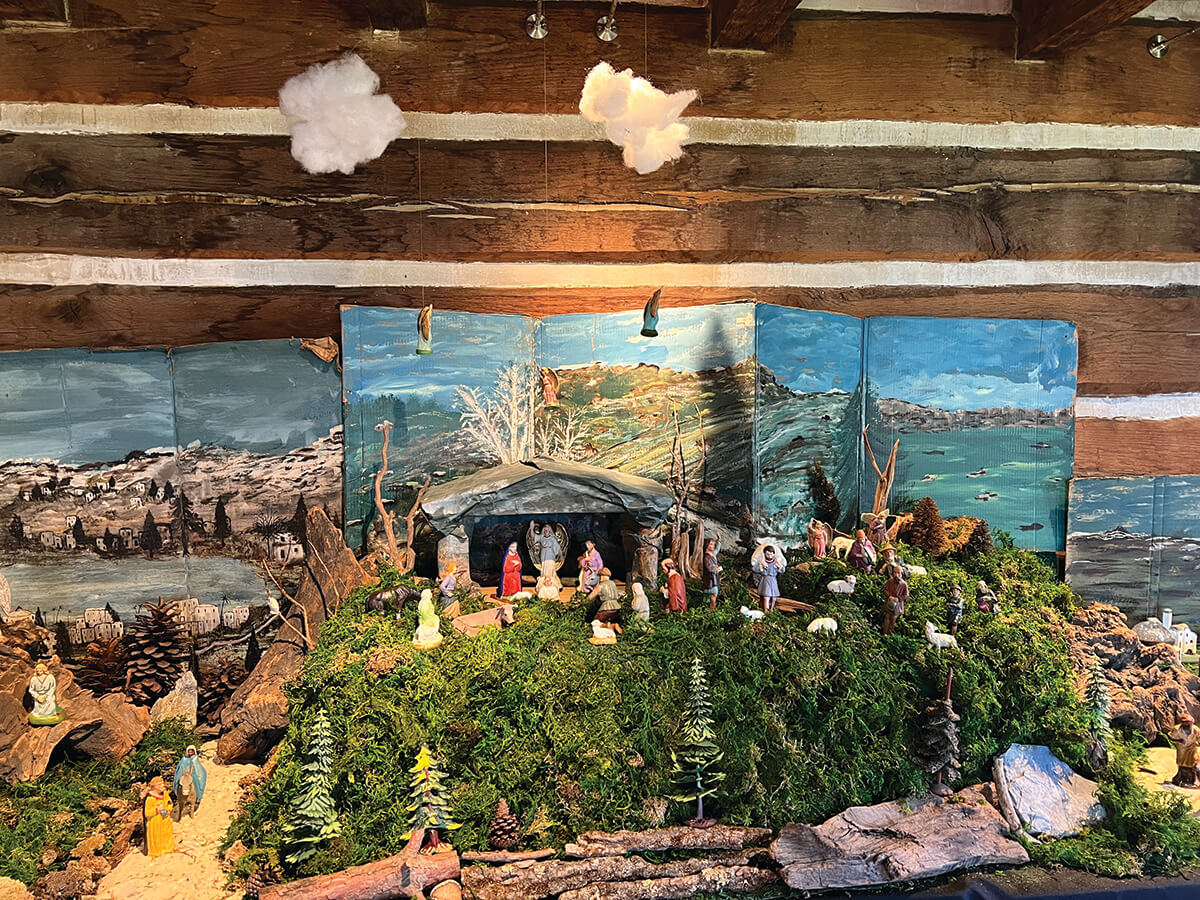
Dec. 1–24: Moravian Christmas in Bethlehem
Christened “Bethlehem” on Christmas Eve of the year it was founded (1741), this eastern Pennsylvania town became the New World’s first permanent settlement for German-speaking Moravians. Dubbed “The Christmas City,” Bethlehem packs its holiday calendar with celebrations that echo these European religious roots, from simple candlelight church services to soaring choral performances and a popular holiday market called Christkindlmarkt.
The Moravian calendar begins on the first day of Advent (Sunday, Dec. 1, in 2024), when Moravians host fellowship meals called Lovefeasts, as well as special worship services and musical performances through Christmas Eve.
On that day, Bethlehem’s Central Moravian Church conveys the Christmas story as it has for centuries, with a children’s service and an evening celebration featuring hymns, choral music, a brass quintet, and the lighting of traditional beeswax candles. (Bethlehem has so many original Moravian buildings that it recently became a UNESCO World Heritage Site.)
Visit the Central Church and the town’s historic buildings-turned-museums throughout December to admire another moving Moravian tradition, the putz. From the German putzen (“to decorate”), these lovingly crafted, elaborate dioramas depict the story of Christ’s birth in multiple scenes using hand-carved figurines, plus rocks, moss, and other natural materials.
But there’s more. Shop aisles of artisan works at the massive Christkindlmarkt, held for six weekends beginning in mid-November, on the banks of the Lehigh River. Or explore other venues and activities: Buy a multi-pointed Moravian star at the Moravian Archives store, practice your German at a Moravian singstunde gathering (where Advent carols are sung in both German and English), or listen quietly to holiday carols in the hushed, candlelit Old Moravian Chapel, built in 1751.
Customs: Moravians traditionally use beeswax candles in religious ceremonies to symbolize purity and the light of God.
Traditional Treats: Wafer-thin Moravian sugar cookies, Moravian sugar cake, and Eastern European nut rolls and rolled kiffle cookies.
For a schedule of holiday events and tours, visit christmascity.org.

Dec. 8: Swedish Christmas in Wilmington
It’s an old Scandinavian ritual: On the shortest day of the year, the household’s eldest daughter, her head crowned with a candlelit wreath, leads her candle-carrying siblings upstairs to deliver sweet buns and coffee to their parents. The roots of this ceremonial breakfast in bed can be traced all the way back to fourth-century Italy and the times of Saint Lucy (“Santa Lucia” to Scandinavians), a Christian martyr and patron saint of the blind.
On her feast day, Dec. 13, she is honored for bringing light into the world and foretelling the end of long winter nights in a ceremony that blends pagan and Christian traditions.
Although we celebrate the winter solstice on Dec. 21, under the Julian calendar the year’s longest night was Dec. 13. In Scandinavia, it marks the traditional start of the Christmas season and is reason to reenact a simple yet elegant procession in homes and churches throughout the land. But you needn’t hop a plane to Stockholm or Oslo for the pageantry.
On the second Sunday in December, one of the nation’s most historic churches, Holy Trinity, aka the Old Swedes Historic Site, in Wilmington, Delaware, opens its doors to the public to honor Santa Lucia. Portraying her, a young woman from the community, dressed head to toe in white, leads a costumed procession down the aisles of the 326-year-old stone church, set aglow by candlelight. Lucia is followed by girls dressed in white, “star boys” (starngossar) wearing tall, pointy hats, and red-dressed elf-like helpers (tomtar), played by young children. There’s music, of course, and guests can enjoy both coffee and Swedish baked goods after the ceremonies.
Be sure to tour the adjacent Hendrickson House, an 18th-century Swedish-American home decorated for Christmas, and go holiday browsing at its gift shop. Nearby, visit the tall ship Kalmar Nyckel, which brought the first Swedish settlers to the area in 1638. Traditional Treats: Lussekatter saffron buns.
Greeting: “God Jul.” (“Merry Christmas.”)
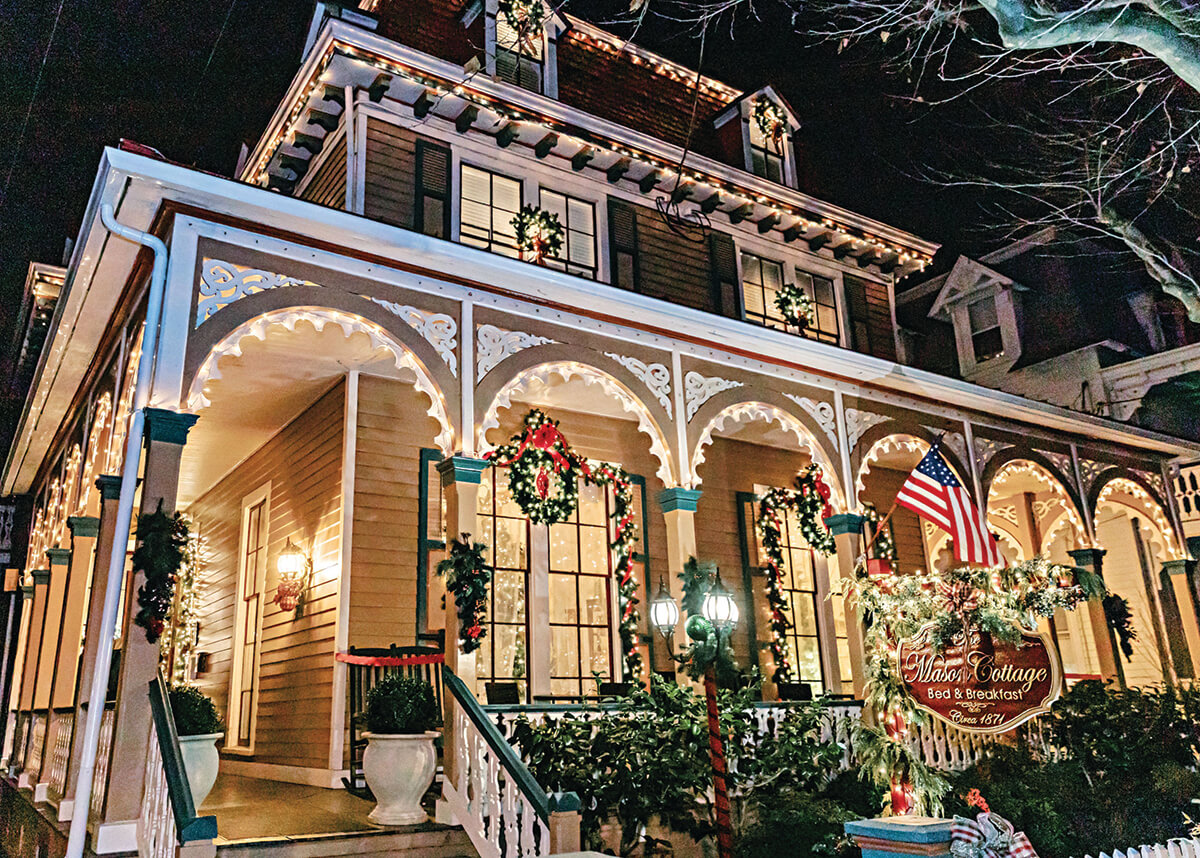
Nov. 23–Dec. 31: Victorian Christmas in Cape May
Without the Victorians, the modern American Christmas might be unrecognizable: no roly-poly Santa Claus (hitherto a svelte Saint Nick), Christmas cards, or lavishly decorated Christmas trees. Also, no federal holiday (finally enacted in 1870), or umpteen Hollywood versions of Charles Dickens’ A Christmas Carol.
For a deep dive into a Dickensian-era Christmas, head to Cape May, a Victorian gem on New Jersey’s southern seashore. Hundreds of preserved 19th-century buildings—ornately designed houses, hotels, inns, and businesses—make the entire city a National Historic Landmark District.
Every December, these “painted ladies” don their holiday finery and welcome visitors with candlelight tours, themed trolley rides, and street caroling. The season begins Nov. 23 with a Christmas tree lighting at Holiday HQ, aka the 1879 Emlen Physick Estate, a prominent Cape May physician’s 18-room mansion-turned-museum.
Register early for the most coveted ticket in town: Cape May’s annual self-guided Christmas Candlelight House Tours (Dec. 7, 14, and 21)—you’ll stroll streets lit by gas lamps and a multitude of twinkly lights while visiting select homes, B&Bs, and the Physick mansion, all decked out for the holidays.
If you can’t snag tickets, don’t despair; There are yuletide outings aplenty. BYO blanket and hop on Cape May’s open-air Jolly Trolley for one of their themed tours, during which you can admire holiday lights, hear from Mrs. Claus, or learn about the spirits who haunt the Physick Estate to this day. Swing by Cape May’s favorite Enchanted Vendor Village at Congress Hall, an iconic local resort once frequented by presidents and politicians. And don’t miss the West Cape May Christmas Parade, with festive floats parading through town on Dec. 7.
Victorian Customs: Parlor games were popular holiday amusements, including two depicted in A Christmas Carol: Blindman’s Buff (aka Bluff) and the guessing game Yes or No.
Traditional Treats: The yuletide tradition of wassail—a hot beverage of cider or wine with spices—is said to have originated as a pagan tradition, paying homage to the fruits of fall harvests that helped provide sustenance through the dead of winter. Now tied to caroling and Christmas, the drink can be enjoyed at the town’s historic Cold Spring Village during Wassail Day, an afternoon festival with wagon rides, wreath contests, and crafts on Dec. 7.
For more holiday happenings, consult the Mid-Atlantic Center for the Arts, capemaymac.org.

Looking Ahead…
Jan. 29: Lunar New Year in Washington, D.C.
Asian Americans will welcome the Year of the Snake in 2025 when the Lunar New Year begins on Jan. 29. Join the festivities in the Nation’s Capital, including a return performance by the renowned National Ballet of China at the Kennedy Center Opera House, special family activities at the Smithsonian’s National Museum of Asian Art and its American Art Museum, and the popular, ultra colorful Lunar New Year Parade through the streets of Chinatown.
For a calendar of events, visit washington.org.

Jan. 27: Lailat at Miraj in Lanham
On this first major Islamic holiday of the new year, Muslims commemorate the journey of Prophet Muhammad from Mecca to Jerusalem by reflecting on his life and teachings. At the nonprofit Diyanet Center of America in Lanham, Maryland—its magnificent exterior reflecting classical Ottoman architecture—and other mosques around the Washington metro area, congregations offer special prayers and recite passages from the Qur’an.
Learn more about the Islamic faith at the Islamic Center of D.C. during the holy month of Ramadan, from Feb. 28 through Mar. 30, during which community members fast daily from sunrise to sundown, breaking their abstinence with a communal meal (iftar) and holding nightly communal prayers (taraweeh).
Located on Embassy Row in the Nation’s Capital, the center serves practicing Muslims and promotes a better understanding of the faith by opening its mosque to all for regular prayers.
Alexander’s Tavern: Head to the upstairs bar at this Fells Point fixture to enjoy a beer and a basket of crab tots while browsing a collection of “poignant and satirical digital images capturing the irony and urgency of the 2024 presidential election” for sale by artist Regan Vasconcellos. Election coverage will be on at the bar throughout the evening if you want to keep an eye on the polls.
The Brass Tap: Instead of simply showing the returns on TV, this Midtown-Belvedere beer bar is turning the poll results into a fun bingo game for any patrons who want to participate. Plus, look out for election-themed cocktails, all-day red and blue sangria specials, and free shots for anyone who shows off their “I Voted” sticker.
The Club Car: What better way to keep it lighthearted than musical theater? Stillpointe Theater is hosting a special Election Night performance of its millennial-inspired “rock the vote” cabaret show at The Club Car in Station North. For the $20 price of admission at the door, snag a seat, grab a drink, and be dazzled as the show provides much-needed some levity.
Mobtown Ballroom: Just around the corner, this Station North community hub will be ready and waiting for locals looking for a bite to eat, drinks from the bar (classic cocktails, mocktails, and bottled and canned beer are among highlights), or distractions in the form of board games. Feel free to bring your own or use Mobtown’s collection as a way to unwind.
Dutch Courage: With no screens in sight, this Old Goucher gin bar is an ideal spot to zone out with a cocktail and a charcuterie board. Anyone who comes in with a sticker from the polls will receive 10 percent off of their tab.
Deddle’s Donuts: Election Day just so happens to overlap with National Donut Day this year, so Deddle’s at Lexington Market is celebrating accordingly by offering anyone who shows proof of voting a free mini bag of their signature sugary circles. If you need a pick-me-up to get your mind off of the returns, a sweet treat is always a good option.
Greedy Reads: A stop into this neighborhood favorite bookshop (with locations in Fells Point and Remington) might be exactly what you need to quiet the noise. Browse the stacks and show your “I Voted” sticker for 10 percent off of your purchase.
The Perch: Typically, the massive screens at this Federal Hill sports bar are tuned in to football this time of year. But on Election Night, they will be projecting the polls all night long during an official watch party hosted by Leaders of a Beautiful Struggle, Black Girls Vote, Baltimore City NAACP, Cllctivly, and other local civic orgs. No matter your political affiliation, come to enjoy light fare and drinks at the cash bar.
Reginald F. Lewis Museum: Get out of the house with a visit to the Inner Harbor’s Reginald F. Lewis Museum, which will be hosting an official watch party from 7-10 p.m. Mingle with neighbors, grab food from on-site vendors, and watch live commentary as results roll in.
If you really want to disassociate, here are a few regularly scheduled Tuesday-night activities that will keep you away from screens:
Trivia: Expert hosts with Charm City Trivia, Greg’s Shitty Trivia, and Bmore Trivia are hosting games at various venues across the city on Tuesday night.
Karaoke: Belt away your worries at spots like Good Vibes Cantina in Canton and the DDL Lounge in Clifton Park.
Salsa Dancing: R. House’s free Latin Nights with Salsa Now—which we gave a 2024 Best of Baltimore award—will be in full swing, highlighting latin music, dancing, and eats from the food market’s vendors.
]]>
If you’ve had a crown, an implant, worn a night guard, or needed braces or dentures, chances are that you’ve had impressions done. In case you don’t remember, that’s when your dentist or hygienist fills a plastic—or decades ago, metal—form full of goopy stuff, puts it into your mouth, and then holds it there until it hardens.
There were times I had this done when I gagged and swore that I was going to choke to death on the goop. Then, when my dentist pulled it out, the pressure was so great, I thought all of my teeth were going to come out with it.
Spoiler alert: They didn’t.
While I’ve never feared going to the dentist, let’s just say I was never thrilled with knowing I’d need impressions. Luckily, for me and so many others who may need to get impressions, dental technology has advanced to the point where that goop, as well as many other procedures, is becoming a thing of the past.
So let’s take a look at some of the latest advancements.
Goop Be Gone
Not only did the impression material—heretofore described as “goop”—cause issues for patients, Dr. Anthony Hamod, DDS, partner of Bel Air Dental Care in Fallston, says that it sometimes wasn’t as accurate as what’s being used now.
“When you take a mold that way, the hard tissue is going to be captured accurately in the impression materials, but as it hardens, it pushes the gums out of the way. So when we create a static hard model of what we think is in your mouth, the gums may not be as accurate,” Hamod says.
Today, Cone-Beam Computed Tomography, better known as CBCT, has changed all that. CBCT is a medical imaging technique. With it, dentists are able to take thousands of images of the patient’s teeth, mouth, gums and more—which appear immediately on the screen for the dentist to see. In Hamod’s practice, the machine they use takes up little room and has a small carbon footprint as well.
These scanners not only show 3D images of patients’ teeth and gums, but colors show up to indicate bite pressures—where the patients bite down harder on a particular tooth or teeth. Seeing this, dentists can check those specific teeth in the future, as they are more inclined to get loose or need root canals.
Deanna Birch, an assistant as well as a patient at Bel Air Dental Care, has had the goop impressions in the past and, more recently, has had the digital scanning.
She says that she prefers the scanning method, as they’re finished quickly. And are, well, less yucky.
“The scan is more accurate too,” says Birch, of Joppa. “Patients love it. Because when they would come in needing impressions, they would stress out about it. Some have the gag reflex, and that’s not fun. This is much better for them.”
Bone Collectors
CBCT technology is also being used for more involved dental surgical procedures. Dr. Sanju Jose, DDS, MDS, partner in the Columbia Center for Implants & Periodontics, uses the CBCT for implants (artificial structures that replace missing teeth), but additionally for creating bone grafts.
For example, if a patient who needs implants doesn’t have enough bone to hold them, dentists such as Jose can do procedures to actually regenerate it.
This normally involves mixing biologic activators with processed cadaver bone. An example of how this can be applied is when titanium mesh is formed over the patient’s existing bone, which will hold the bone in place and not allow the soft tissue to sink inwards.
Jose says that although titanium mesh has been around for some time, in the past dentists would have to trim it chairside, which could leave sharp edges.
“If one of the parts of the mesh was sharp, the gum tissue would start to open up. In studies, it would show that in almost 40 percent of cases, the titanium mesh pieces were sharp, the gums can open back up, and you don’t get the bone regeneration you were expecting,” Jose explains.
With CBCT, he can print a 3D model of the patient’s jaw, then put the titanium mesh over it and use wax to mimic the bone graft he wants. “Then I actually cut pieces of mesh to fit, because what you want is the mesh to adapt to the surrounding bone. I smooth out the sharp edges, sterilize it, and it drops right in during surgery.”
He also uses CBCT to get a 3D look at what the patient’s mouth actually looks like. “It shows you the full volume of the patient’s bone anatomy. You’re not guessing. I don’t want to go into surgery and think, ‘This is how much bone I think I have,’” says Jose. “With the 3D image, I get to see the sinuses, mark the nerves, and see all the anatomy.”
The software allows you to plan what diameter and depth the implant should be. This is especially important if a patient needs to have multiple implants and eliminates any guesswork.
“Let’s say you’re missing four front teeth. Now we can digitally create what those four front teeth should look like to match the adjacent teeth, taking into consideration aesthetics and function,” says Jose. “All of this—from the bone anatomy to the implants—can be preplanned. The lab will imprint a guide that’s custom to that patient. It makes the surgery faster, and everything goes into the mouth exactly where it should.”
When Jose does a full-mouth reconstruction, he now uses a facial scanner as well as CBCT and an intraoral scanner. Within a few minutes, he can capture the patient’s face and lip movements. This enables him to see their jaws moving, their gums, and their bone—the entire face.
“I can now design everything and see it digitally before we do the surgery,” he says.
3D Printing
The use of 3D printing is revolutionizing dentistry as it has so many other fields. While 3D printing has been used in the dental industry since about 2008, says Hamod, it was originally only used to print crowns.
“And of lot of dentists still do that if the logistics of their offices allow for it. A 3D printer prints your crowns while the patients are in the chair,” he says. The dentist then will glaze and stain the crown and then put it in before the patient leaves. The whole process takes approximately 1.5 hours for a single unit crown.
The same-day crowns, made famous by a company called Cerec, have the advantage of saving the patient multiple visits and a three-week turnover time. Not to mention they spare the patient having to deal with the risk of fracturing or losing the temporary crown. The downside is that the dentist’s office has to have an extra operatory (room with dental equipment) available to keep the patient waiting while the crown is manufactured. They are also not as durable/cosmetic as a laboratory-fabricated crown.
Hamod says that even dentures are 3D printed by labs today. Beginning in about 2020, dentures were just starting to be 3D printed by a few labs, but today, every major dental laboratory is able to print 3D dentures.
Dental offices also use 3D printing to make surgical guides, like those used for implants which are essentially 3D maps that fit in a patient’s mouth. Hamod explains that the guides direct the dentists as to where the implants must go.
“They click onto a patient’s teeth and allow us to place in the implant exactly where it belongs with the correct depth, angulation, and rotation,” explains Hamod. This takes all the guesswork out of the implant procedure. “In the past, [surgical guides] were called ‘wish guides’ because we would try our best to guestimate where it should go based off of where the tooth should go—but not necessarily where the bone was.”
What makes these 3D printed guides work so well is the fact that dentists use them in conjunction with CBCT. They are more accurate than traditional X-rays and provide dentists with more information. In this way, they can see the bone that will house the implant and place everything exactly where it needs to be.
They, Robots
Robotics has become another useful tool for modern dentistry. Before you freak out, no, a robot is not doing your surgery—the dentist is. Jose, whose practice was the first in Maryland to have robotics, explains that robotics aren’t always needed. In most cases, the surgical guide is sufficient.
“It’s great; it’s quick, and it’s accurate,” he says. “But it is surgery. And sometimes you have to deviate.” The problem is that the surgical guide won’t allow for any changes; what you see is where it goes. But with robotics, if Jose realizes that he needs to make a change, he types it into the computer program, and then the Yomi robotic system—the only one currently approved by the FDA—is able to help him complete the surgery using the new diagnostics.
The robotic system doesn’t look like a human. Imagine a white cart on wheels. On the top of it are two computer monitors as well as a laptop— these help the dentist conduct the surgery while seeing what they’re doing in real time. A robotic arm comes out of the main machine, and it will guide the dentist’s drill.
If Jose makes a change, as described above, when he uses the drill, which is attached to the robotic handpiece that fits into the arm, the robotic system will move it to make sure he is drilling in the exact right position in the patient’s mouth. It won’t allow him to deviate—unless he specifically changes the diagnostics in the computer.
“It allows me to deviate the plan in a positive manner—meaning no errors. Because the robotics movements are live,” says Jose.
The Future is AI
When you mention AI being used in dentistry, people tend to stress out because they believe this means eventually dentists will be replaced by machinery.
According to Dr. Jeffery Price, DDS, MS, MADG, FICD, FACD, and Dr. Ahmed S. Sultan, BDS, PhD, co-directors of the Division of Artificial Intelligence Research at the University of Maryland School of Dentistry (UMSOD)—the first AI division in the first dental school in the world—you don’t have to worry.
“In fact, the American Dental Association prefers the term ‘augmented intelligence,’ as it means a human and a machine are working together,” explains Price, also a clinical professor and director of the Division of Oral Radiology at UMSOD. “Artificial intelligence would be the human turning over all decision-making to the machine. Augmented intelligence plus the clinician will result in a better outcome for the patient.”
Sultan says what he foresees happening in the dental world is AI-powered assistants that have ambient note capabilities. “So whenever the clinician is talking to the patient, it takes that data and populates it in a clinical note. That’s really helpful because it allows dentists to sit down and talk to their patients and not waste time writing up the Electronic Health Record [EHR].”
It will be much like the system that your primary care physician may use. “And 90 percent of the time, you can actually have a connection with your doctor,” says Sultan, an assistant professor and program director for the Oral & Maxillofacial Pathology Residency Program at UMSOD.
Price adds that these assistants can put the information gathered into searchable fields so that, after a certain amount of time, “You’ve got data that’s reliable, and algorithms can search it and provide information for research purposes.”
Eventually, this could help day-to-day dental care as well, like when dentists spot something that may be oral cancer. “With AI, if they have a question about a lesion in someone’s mouth, they can take an intraoral picture of it, and with the growing advent and presence of AI, they will get an answer in 30 seconds or less,” says Price. The dentist can then decide the best course of treatment action. Sultan adds, “AI is really good at the flagging system. So, it can flag the dentist on things that are really subtle.”
As technology continues to advance in dentistry, it’s not just to make life easier for dentists.
“Ultimately, it’s all about the patient,” says Jose. “You want to be able to deliver the best care to the patient.”
If that best care means less goop and more 3D imagery, count me in.

When he was an elementary school student in Baltimore, Orioles broadcaster Brett Hollander was diagnosed with dyslexia. He understands how much of a hurdle the disability can be for kids, particularly those with no access to support systems.
Through “Going to Bat For Dyslexia,” a gala fundraising event he began in 2022, Hollander supports kids who are struggling with dyslexia in Baltimore by providing fully paid scholarships to attend a summer program at The Odyssey School, which serves children with language learning differences.
The goal is to show that, given the right academic resources, kids with dyslexia can thrive.
“The key is to figure out how to get through it academically, so you can get through it in the world,” he says.
Three days before the grand opening of the latest Easy Like Sunday location at McHenry Row in Locust Point, servers are studying the menu, baristas are testing drink recipes (like a pretty-in-pink iced beetroot matcha latte), and chef/co-owner Sean MacCuish is overseeing a mock service in the kitchen—where his staff fires favorites like fried chicken atop cornmeal pancakes and steak and eggs with a fresno chimichurri.
In the midst of the prep, a worker from the bank a few doors down stops in to welcome the owners—MacCuish operates the restaurants with his wife, Anna MacCuish, and Anna’s cousin, Antonios Kokolis—to the neighborhood. He’s one of many neighbors who have recently popped in to check on the status of the breakfast-and-lunch restaurant, which officially opens to the public on Monday, June 10.
“Cross Keys is such a beautiful space, but we’re hidden, so you have to really know who we are and what we do,” Sean says of their Baltimore flagship at The Village of Cross Keys in Roland Park, which opened in March 2023. (Before coming to Baltimore, the owners launched the original Easy Like Sunday concept in Charlotte, North Carolina.) “But here, it’s so visible and inviting. There’s a lot of positivity around that.”

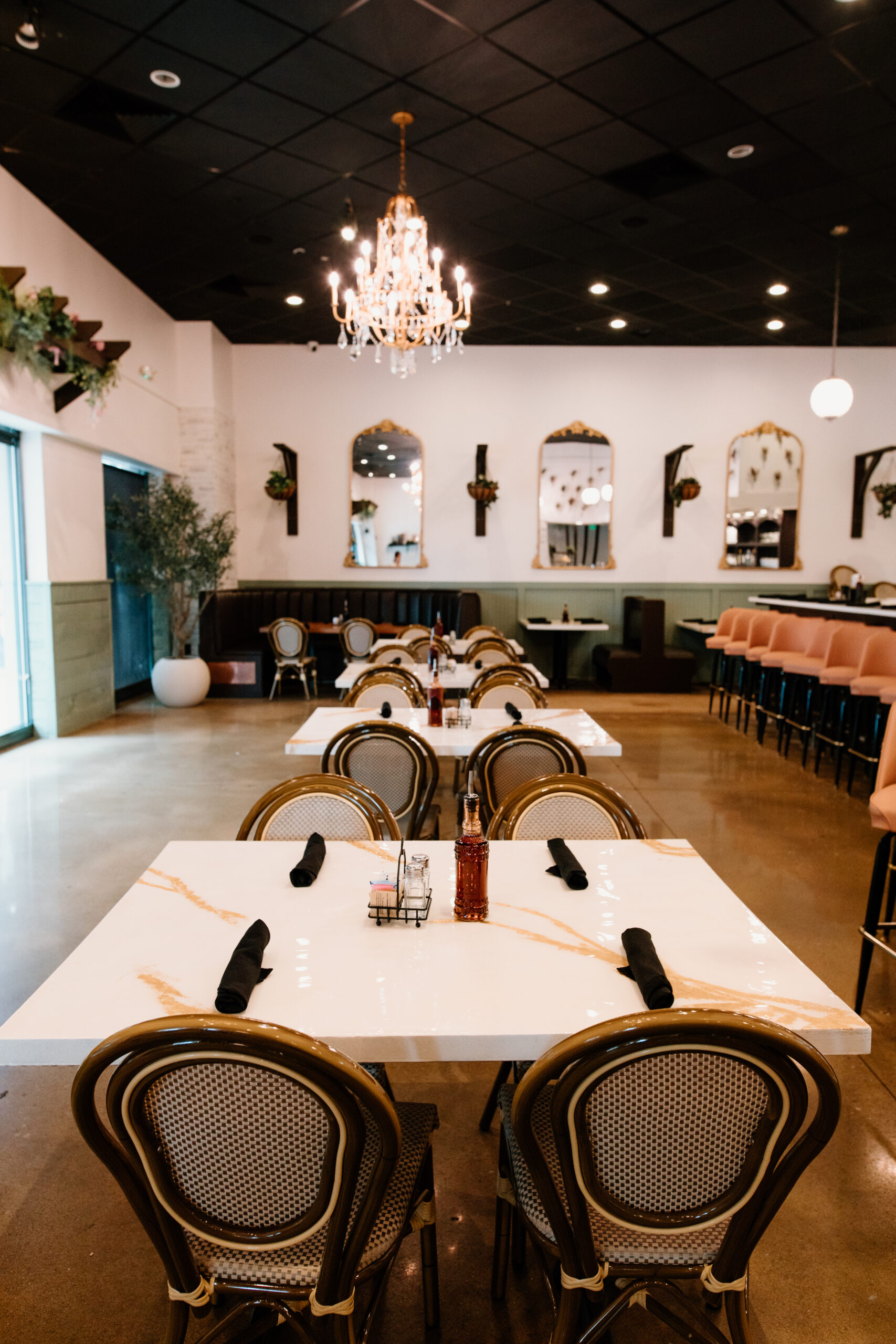
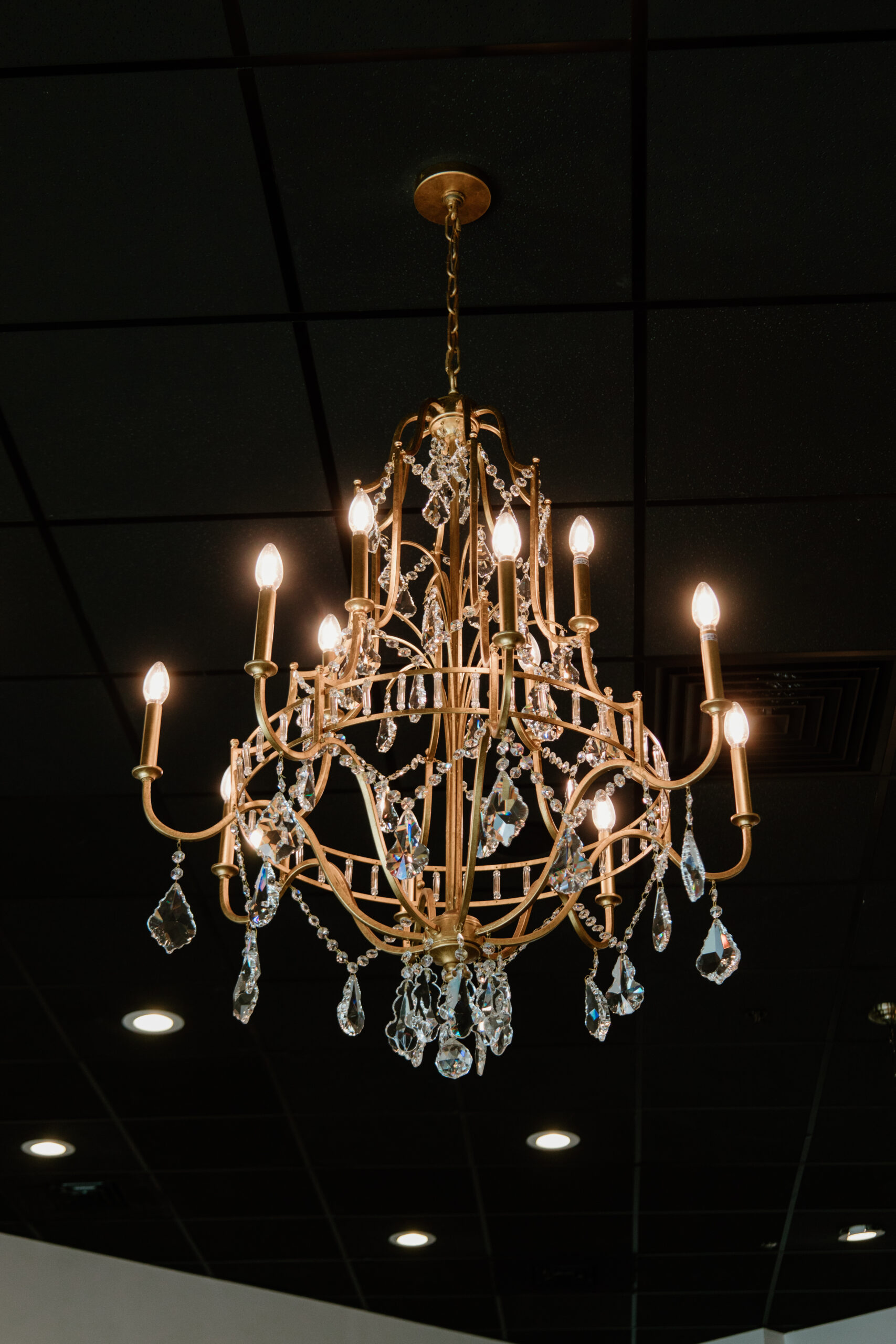
Joining the mixed-use McHenry Row development off of Key Highway was something the owners were immediately interested in upon learning that the building’s previous tenant, Iron Rooster, had closed last year. They took over the space on February 1, and quickly got to work removing the TVs, renovating the bar, and brightening the space with Easy’s signature English garden aesthetic.
“It’s almost like you’re having brunch on a patio, but it’s inside,” Sean says of the design. “That’s always been the driving force for us.”
Adds Anna: “Especially with the seasons here. If it wasn’t for seasons, I think we’d all agree our whole restaurant would be outdoors. We just love that feel.”
Highlighting hanging greenery, crystal chandeliers, gold-framed mirrors, pops of pink, and a thriving indoor trellis, the interior design was spearheaded by Anna, with signature touches handmade by the staff themselves. The resin gold leaf tables, for example, were created by Sean.
“We want people to be able to take pictures everywhere, from the bathrooms to the bar,” Kokolis says, explaining how the atmosphere plays into the overall dining experience—especially in the age of social media. “When we all walked into this space, we knew it was perfect for what we wanted to do.”

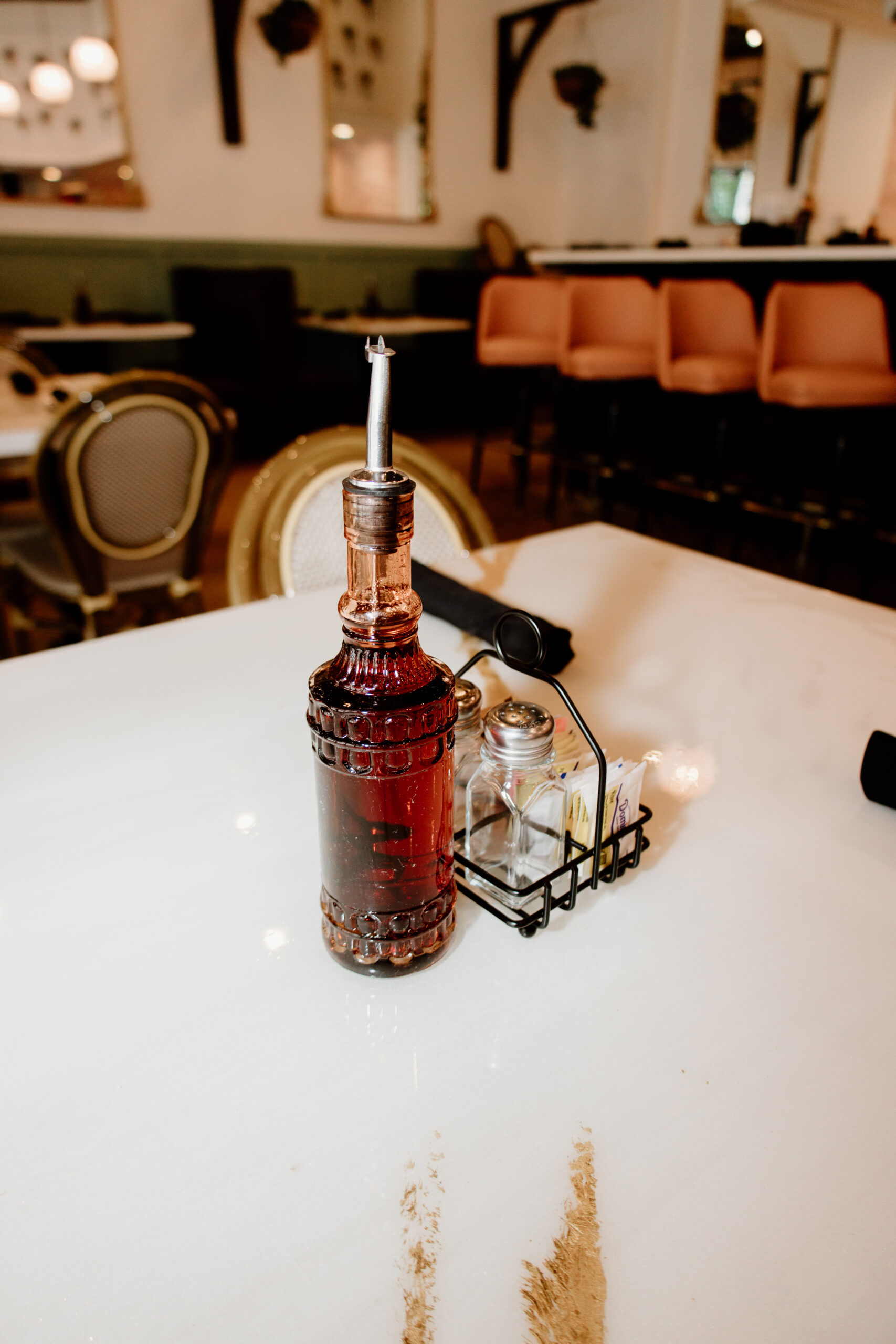
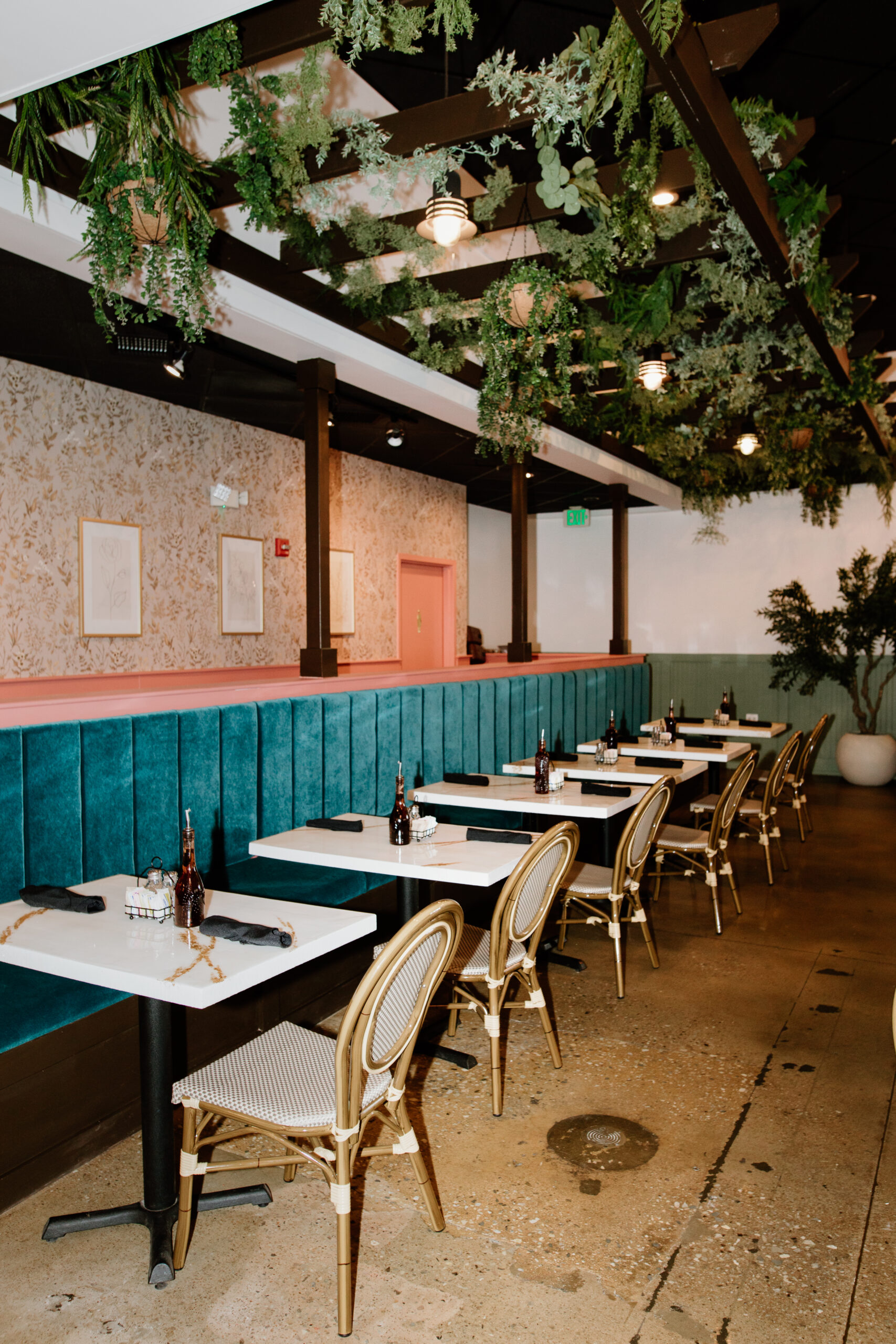
The new home seats 130 inside—including 18 barstools—and 30 on the patio that the owners added in the front. In the back of the house, Sean says that, compared to Cross Keys, there’s slightly more room to breathe in the kitchen—which will allow for some additions to the menu once the restaurant gets off the ground. He estimates that three-to-four new dishes and drinks will drop in Locust Point in the coming months, before eventually migrating to the menu at Cross Keys.
For now, though, diners can look forward to his original lineup of brunch hits, which includes the seasonal blueberry-lemon pancakes with sweet ricotta; a Tuscan Bake that fuses pork sausage with tomato, mozzarella, feta, and poached eggs; crab cake benedicts; brunch burgers; and a sweet vanilla yogurt bowl loaded with fresh berries and house-made granola.
“You’re not confined to one thing with brunch,” Sean says of the versatility of the concept. “You can think outside of the box and bring different flavors that all fit under this umbrella of what brunch means to a lot of people. We have Southern-inspired dishes, Italian-inspired dishes, Greek dishes. Creatively, it just opens the door for so much more.”

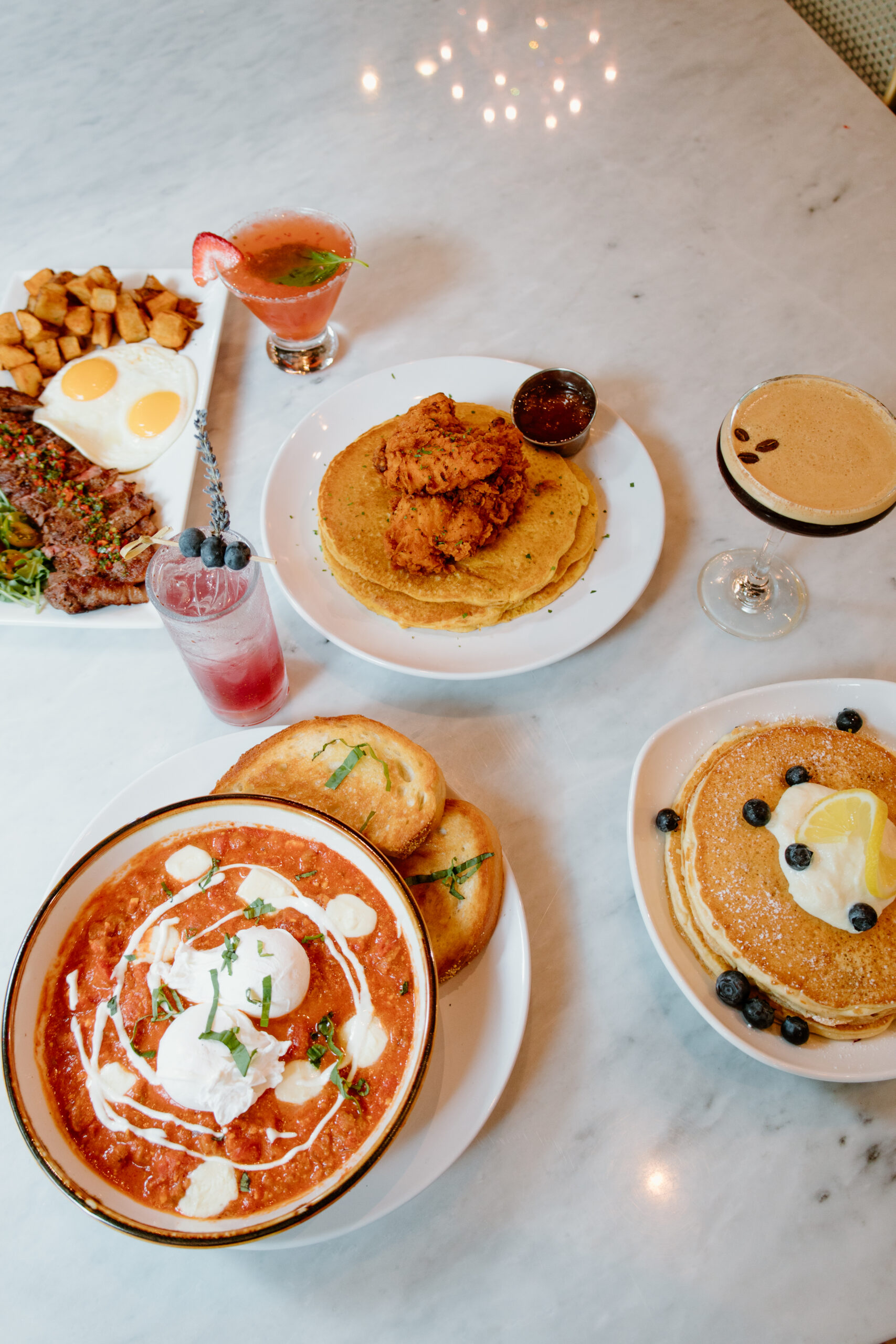

Creativity is a huge part of what fuels the three-person team, who all agree that the food coupled with the decor is what has resonated with their Cross Keys clientele. They’re sticking with their no-reservations model in Locust Point, but want to assure guests that, even if there is a short wait time, it’s the most efficient way to go.
“We’ve compared the numbers of Cross Keys to Charlotte [which does take reservations],” explains Kokolis, who oversees the front-of-house staff, “and based on our current system, we’re able to seat and feed more people than if we were to take reservations, because there’s just so much lag [when guests are late for their reservations.]
“We don’t want people to wait, trust me,” he says, also mentioning that bar seating is first-come, first-served. “We’ll bring in tables from outside if we have to. We just want everyone to have a great experience.”
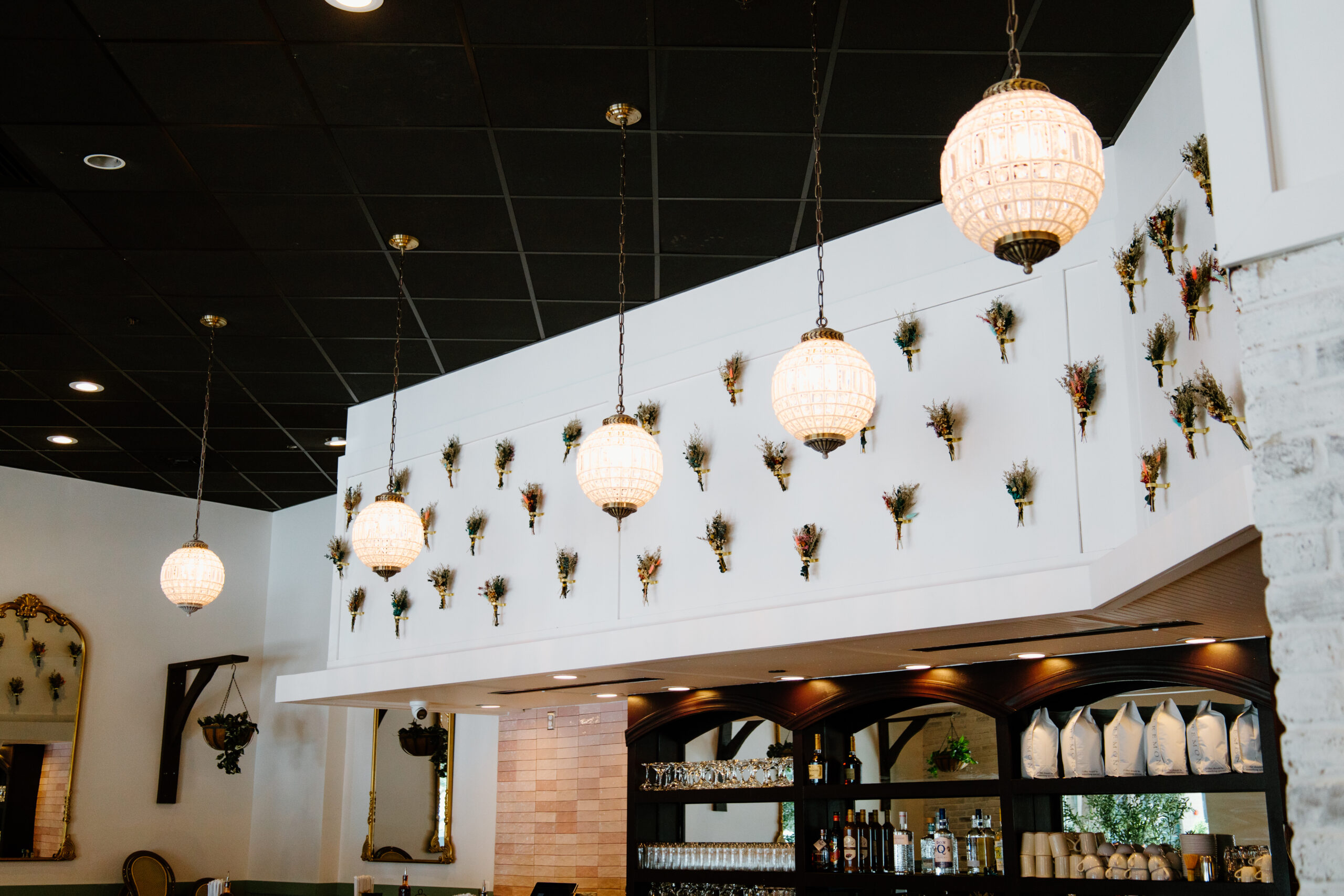
With two locations on opposite ends of the city, the owners hope to make Easy Like Sunday more accessible to locals who are familiar with the restaurant, but also present the concept to people who might not have heard of it. Although there are no further expansion plans on the horizon as of yet, they’re not ruling out additional eateries in the future.
“It’s always exciting bringing it to a new crowd,” Anna says. “We’re all so proud of Easy Like Sunday, so when you’re introducing it to someone for the first time, it’s such a great feeling.”

While just about everyone carries a camera around in their pockets or purses these days thanks to smartphones, and we mostly share our perfectly filtered, red-eye-removed snaps on social media, there’s actually still money to be made in the tangible photo print industry.
Seriously.
Turns out people still want physical prints of their photos—something they can frame and hang on a wall or put on a desk or send to grandma. And they want something of a higher quality than you can make with an at-home printer or pick up at Walmart.
Baltimore County-based Nations Photo Lab tapped into this need early, and despite a serious detour during COVID-19, they’ve taken a small business that relied on a clientele base of sororities and fraternities and turned it into a national phenomenon, with a reputation as one of best photo labs in the country.
Before we get to that, let’s tell the origin story. Nations Photo began in earnest when its president, Harvis Kramer, met its founder and former CEO, Ryan Millman, back in 2002. As is common in Smalltimore, they had known of each other while both were attending Pikesville High School years before, but Millman was a few years ahead of Kramer.
Millman, whom Kramer refers to as a “serial entrepreneur,” had just launched his first business, called GreekYearbook, which takes photos for fraternities and sororities all over the country. (The business is still going strong today, with a network of roughly 200 photographers doing high end portraits, group photos, and event photos for about 500 universities.)
Kramer, a Reisterstown native who was president of his fraternity while attending the University of Maryland, College Park, connected with Millman via GreekYearbook. After graduating in 2002 with a degree in criminal justice with a concentration in business—he originally planned to become a lawyer—Kramer became Millman’s second full-time employee, turning down jobs with Merrill Lynch and other well-known companies.
“My family thought I was insane,” Kramer, 44, says. “But I just really believed in Ryan and what he was doing. Since then, I’ve been a founding member of all the other businesses that we’ve either started or acquired.”
As for what his family thinks now, more than 20 years later, “They think I might know what I’m doing,” says Kramer with a laugh.
ABOUT 93 PERCENT OF PHOTOS ARE NOW TAKEN WITH A SMARTPHONE, AND PERHAPS AS MANY AS FIVE BILLION PHOTOS ARE TAKEN A DAY.
Millman comes from a long line of entrepreneurs, and while in a fraternity at the University of Arizona, he had the idea to create a website that was like social media in that it allowed Greek members to connect through photos on the site, Kramer explains.
“Today, we do more high-end portraiture, but back then, we were doing more of the event photos. Each fraternity and sorority has weekly events, and we’d send photographers out to photograph them and put them online,” says Kramer.
If this origin story sounds familiar, the similarity isn’t lost on Kramer. “Mark Zuckerberg always says that he got the idea for Facebook from a Greek fraternity photo site, and there were only a few of them out there,” he says. “I actually reached out to him back in like 2003…but he never got back to me.”
Nations Photo Lab came about in 2004. As GreekYearbook grew, Kramer says they had been outsourcing all of their photo printing to other labs. “It got to a point where it made sense to bring in our own printers and really start to control the quality, the turnaround time, and the cost ourselves,” he says.
Millman started with a mini-lab in Owings Mills, because he was familiar with the area, but named it Nations Photo Lab because although they were serving mainly local photographers at the time, he knew they could grow it into something much bigger. That happened quickly, and they began printing photos for wedding photographers, school photographers, sports photographers, and others all over the country. The New York Times said in a July 2023 “Wirecutter” review, “After our latest round of testing, we remain convinced that Nations Photo Lab is the best online photo printing service for most people,” citing their simplicity in ordering online and their color-correction.
What makes their prints different is that most places offer digital printing, which is done with much lower-quality paper and ink. Kramer says that theirs are silver halide prints done with high-quality chemistry and mostly Fuji photo paper. It’s this attention to detail that keeps customers coming back. Megan McLaughlin, director of Football Information for the Baltimore Ravens, has been working with them since Nations was based in Owings Mills (they’re now in Hunt Valley). Nations produces a wide range of items for the team, including action photos, gifts, and more.
“They do many of our immediate printing needs. They’re great to deal with. If I need things on short notice or corrected, they’re always willing to help out,” McLaughlin says. “I like the fact that we’re supporting a local business. I can get them on the phone, and they’re easily accessible.”
For the last seven years, Baltimore wedding and portrait photographer Alicia Wiley has used Nations Photo Lab, not only because they’re local, but because of the products they provide.
“I do a lot of printing there—both professional and personal. I really wholeheartedly believe in shopping small. I also love the quality of their work. If there was ever any issue like a printing or shipping error, they are quick and accommodating to fix it so that it doesn’t affect my own clients’ experience,” she says.
Besides creating prints, Nations Photo Lab also makes unique photo products through its sister company, Artsy Couture, which it acquired in 2010. Artsy Couture became their innovation arm.
“We have more than eight patented products through that brand that we either sell directly to our consumers or we resell to other businesses, such as cruise lines, drug stores, or theme parks,” says Kramer. The standout among their patented items is the canvas click frame, which essentially imposes a photo onto a 3D canvas that can be easily framed, requiring no tools and minimal training. “If you’ve ever purchased and received a canvas product on a cruise ship, at a resort, or in a retail setting, there’s a strong likelihood that it was our canvas click frame.”
Some of the other patented items are wooden photo cubes, cube ornaments, and photo magnets. By expanding this way, they’ve been able to work with clients like Disney, Under Armour, Universal, The White House, luxury resorts, and many more.
Kramer believes that because they launched their business at the dawn of the true age of digital photography—a time when digital cameras became more affordable and smartphones put cameras in almost everyone’s hands—they were able to have a proverbial “leg up.” Lots of preexisting photo labs were scrambling to switch from film to digital processing, Kramer says. But Nations Photo Lab started with digital processing. “I think that really gave us an advantage—the timing of when we came into the industry.”
Capitalizing on that timing has been everything. Kramer says that about 93 percent of photos are now taken with a smartphone, and perhaps as many as five billion photos are taken a day.
“THERE’S AN AUTHENTICITY TO HOLDING A PHOTO IN YOUR HAND.”
Nations’ focus on innovation has not only enabled them to expand, but to keep the business running during the pandemic. Kramer says that in March 2020, business went down 70-80 percent. So Millman and Kramer, along with some employees, were trying to determine what they could do to keep the company afloat.
“It was a really scary time, and trying to figure out how long [the pandemic] was going to last was impossible,” explains Kramer. “I think we’re just an innovative group. We realized that a lot of our machinery was able to actually produce face shields.”
In fact, Kramer says that, for a time, they had the largest fleet of Computer Numeric Control (CNC) machines in the Mid-Atlantic region. “If you want to cut a piece of wood or glass or plastic, it’s a machine that can do huge six-foot sheets at a time, so that you can cut a bunch of stuff at once,” says Kramer. “We use them to cut our wood to produce some of our products, but we realized we could utilize those machines to cut plastic.”
Remember, this was a time when hospitals, fire and police departments, health care workers, and regular people desperately needed face shields. Millman and one of Nations Photo Lab’s engineers deciphered a way they could produce a face shield that was not only compliant, but made of the best materials available. At first, Kramer says that they were manufacturing face shields to keep their staff employed and to produce something that was helping with the pandemic.
“We were initially donating face shields to businesses, police and fire departments, and hospitals and the like to help out with the pandemic and keep our folks employed,” says Kramer. But then, they became known for their exceptional product. “We weren’t taking shortcuts. We got the best plastic and best elastic out there and made these face shields high-quality, whereas everyone else was getting a very low-quality face shield from China or wherever,” Kramer says.
They were so well done that a doctor at LifeBridge Health referred to Nations as the “Mercedes-Benz of face shields.” As a result, and as the demand for the personal protective equipment (PPE) increased, businesses, health care facilities, and local folks asked if Nations would begin producing them for purchase.
“We wanted to help the community out, and then, for a period of time, it turned into a small way that we could keep the lights on and keep people employed,” says Kramer.
When the face shield business ended, a new opportunity awaited. Remember during the pandemic when nearly everyone was either working from or staying home? People began to see what they liked and didn’t like about their homes. From this came the home décor boom, which inspired plenty of people to spruce up their walls with framed photos.
“We had a huge holiday season that year of people ordering stuff to decorate their homes,” says Kramer. The boom continued into early 2021. Later that year, events resumed, as did photo printing. In addition, Nations says there were an estimated 2.6 million weddings in 2022—the highest number since 1984—as many had been postponed.
It all adds up to a business success story where a lab born out of taking pictures at fraternities has not only kept the lights on, but has grown into one of the largest of its kind in the country. Today, the business has about 220 employees, 180 in Maryland and the rest in York, Pennsylvania, where most of the patented products are made. All of the products are available online.
As for what the next trend will be in photography, no one really knows. But chances are, Nations Photo Lab will be a part of it.
“One of the reasons we’ve been so successful is that we’re always looking ahead and watching trends. We’re thinking, ‘How can we increase this through innovation?’” says Kramer.
They’ve already made it easier to print not only on paper, but on metal, canvas, and wood. By buying do-it-yourself kits from them, photographers can now create party favors like cubes of photos at the end of an event or on a cruise.
“We just keep investing in technology that makes the process of producing a photo product much easier,” says Kramer. “People don’t print as much as they used to because they’re fine with a photo being on their phones. But there’s an authenticity to holding a photograph in your hand. It grounds the memory in reality and makes it feel more tangible and real.”
This piece appeared in our March 2024 issue. For more great Baltimore stories, consider becoming a subscriber.
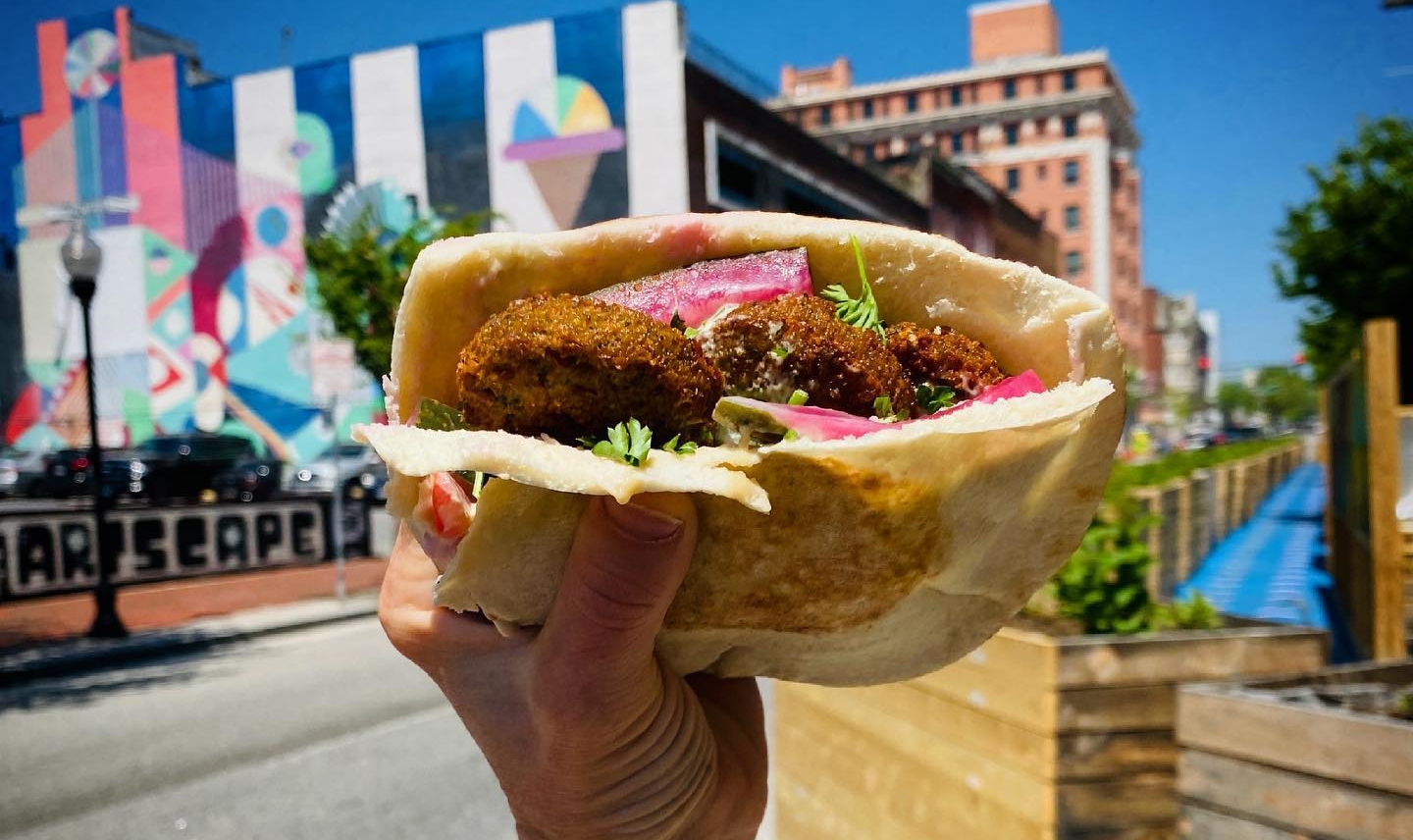
Here at Baltimore magazine, we pretty much always have local food on the brain. But it’s really at the forefront of our minds this time of year, when our annual Best Restaurants issue hits stands. As such, we’ve established a tradition of asking our staff about the best things they’ve eaten at local dining destinations within the past year. This time around, answers ranged from stuffed sandwiches and enchiladas at casual eateries to crab cakes and plates of pasta at special-occasion spots.
Read on for inspo for your next dining-out adventure, and pick up a copy of our Best Restaurants issue on newsstands to check out more best bites from deputy editor Jane Marion and her team of seasoned restaurant reviewers.
Amy Scattergood, Research Editor
A dish of smoked chicken and black mole at Blacksauce Kitchen, Damian Mosley’s Remington restaurant. Denzel Mitchell Jr., who often cooks there, smoked the chicken and made the mole, which I dearly wish he’d bottle.
Christianna McCausland, Special Editions Editor
The methi murgh (heat level 5) at The Mint Leaf in Cockeysville. Unassuming location, amazing Indian food.
Christopher Myers, Contributing Photographer
Golden West has a great sopapilla enchiladas that is terrific hangover food.
Ethan McLeod, Contributing Writer
The gnocchi at Daniela Pasta & Pastries in Hampden. Unforgettable.
Janelle Erlichman Diamond, Home Editor
Of all the great dishes I had this year (and there were many), I keep thinking about Little Donna’s pierogies—and that perfect bite of red chile garlic oil, lemon and buttery potatoes, and a dollop of sour cream. How you make an old-school pierogi taste so thrilling and crave-worthy is pure magic.
Lauren Cohen, Digital Senior Editor
The big-as-your-face vanilla yogurt bowl at Easy Like Sunday, which is topped with beautiful berries, swirls of honey, and handfuls of house granola. It’s just one of those combinations you can’t recreate on your own no matter how hard you try.
Lorann Cocca, Director of Marketing
Over the summer I had a sweet potato polenta dish from Water For Chocolate and have thought about it almost every day since.
Lydia Woolever, Senior Editor
Hands down the cabbage pancake at Little Donna’s. Such a delightfully surprising dish in a moment when so many menus feel the same.
Marie Bosslett, Editorial Intern
The best thing I ate last year was the rigatoni alla vodka from Tagliata in Harbor East.
Marty LeGrand, Senior Contributing Writer
Literally a bite of a dining companion’s succulent lamb chop at Rudy’s Mediterranean Grill in Columbia. Next time I’ll definitely order my own!
Max Weiss, Editor-in-Chief
This might be recency bias, but a few weeks ago I had the Italian Pork Sandwich special at Chuck’s Trading Post—slow roasted pork with rapini, chimichurri, provolone, and pepperoncinis on a sub roll. Add it to the menu, Chuck’s!
Michael Teitelbaum, President
The torta di melenzane appetizer at Limoncello is magnifico. (Translation: The eggplant Parmesan appetizer is magnificent.)
Mitro Hood, Contributing Photographer
Gertie’s crab cakes from Gertrude’s at the BMA.
Ron Cassie, Senior Editor
Favorite bite this year so far is Mera Kitchen Collective’s falafel sandwich—house-made pickles, cucumber, tomato tahini salad, plus a nice spicy jalapeño dressing—served in a toasty pita. Peak cold weather vegan comfort food.
One might think that National Margarita Day would fall sometime during the warmer months, but we’ll take a strong tequila drink—especially one that conjures thoughts of beaches and warm breezes—any time of year. Whether you’re an on-the-rocks type of person, or a fan of smoky cocktails garnished with chili flakes and pineapple wedges, the local bar scene offers plenty of ways to partake on February 22. To celebrate in style, spice up your average post-work happy hour by heading to any one of these local watering holes.
Banditos Bar and Kitchen: With an expansive tequila and mezcal menu, this neighborhood spot makes a mean marg. Visit the Federal Hill flagship, or the Towson and White Marsh spinoffs, for strong sippers made with fresh lime juice and agave nectar. Multiple locations including 1118 S Charles St.
Barcocina: Follow the Fells Point cobblestone to this waterfront hangout, which pairs its signature dips and tacos with a menu of refreshing cocktails. Aside from the house margaritas on tap, the bar crafts a hibiscus iteration (Avión tequila, agave nectar, lime, hibiscus purée, and house sour mix), as well as the signature “Margarita En Fuego” made with jalapeño-infused tequila. To celebrate National Margarita Day, catch daily specials throughout the weekend, including $6 glasses on Thursday, $8 hibiscus margs on Friday, and $28 32-oz. Patron buckets on Saturday. 1629 Thames St.
Bayside Cantina: While the ample outdoor seats and prime harbor views are certainly a draw, this Canton establishment aims to be an all-weather destination for its tacos, fajitas, seafood dishes, and solid tequila options. Choose from nearly 20 varieties to amplify drinks like the classic house marg (in flavors such as cucumber, strawberry, blueberry, or mango), or the massive “El Jefe” that fuses house made sour mix with orange juice and orange liqueur. 2809 Boston St.
Blue Agave: This Federal Hill favorite is an ideal spot to catch up with friends over classic margaritas on the rocks and a basket of house-fried tortilla chips. To switch things up, sample flavors such as mango, prickly pear, pomegranate, red pepper, or the “Spicy Guavarita” mixed with guava syrup and a splash of pineapple juice. 1032 Light St.
Clavel: From the interior greenery to the house-made tortillas, everything about this Remington hangout is meant to mimic the atmosphere of the owners’ beloved Oaxaca, Mexico. The top-notch beverage program—which makes use of house-grown ingredients like hibiscus and squash flowers—features a collection of unique margaritas including a spicy version with tres chiles shrub and the signature “Mezcalita” garnished with grasshopper salt. 225 W. 23rd St., 443-900-8983
El Bufalo Tequila Bar & Kitchen: It should come as no surprise that this Canton mainstay, whose margaritas take up their own section on the drink menu, will be a go-to for the tequila-filled holiday. Flavors to please every palate include strawberry, coconut, cucumber basil, sweet heat, and the “Fizzy Bellini Marg” topped with Champagne. 2921 O’Donnell St.
Holy Frijoles: If you’re celebrating on the Avenue in Hampden, stop in to this hallowed haunt to sip one of the many margs on offer—and play a game of pinball while you’re at it. If you’re a purist, enjoy the classic margarita with tequila, triple sec, house sour mix, and a requisite salt rim. Those looking to customize their drink can add mango, strawberry, prickly pear, or pomegranate puree for $1 extra. 908 W. 36th St.
La Food Marketa: There’s no shortage of Mexican-inspired fare at this Baltimore County favorite located in Pikesville’s Quarry Lake at Greenspring. Chef Chad Gauss’s spinoff of The Food Market in Hampden boasts a beverage list highlighting everything from draft beer and Mexican sodas to mojitos and sangrias. But the restaurant’s margarita menu—featuring classic, blackberry-pomegranate, and spicy grilled pineapple varieties that can be ordered by the glass or pitcher—is the true claim to fame. 2620 Quarry Lake Drive, Pikesville
Maximón: Highlighting stone arches, lush greenery, and frequent live Latin jazz, this Harbor East hotspot is inspired by the flavors of Mexican and South American cuisine. You can’t go wrong with a basket of tortilla chips and an order of the house guacamole—topped with queso fresco and seasonal fruit—for the table. Paired with the signature Maximon Margarita—made with Tequila Ocho Plata, Cointreau, agave, lime, and salt—it’s a perfect match. 200 International Drive.
Nacho Mama’s: This Canton Square stalwart, which also features a second location in Towson, has a longstanding reputation for putting its own Baltimore spin on the classic Mexican cantina. But aside from the crab quesadillas, Orange Crushes, and Natty Boh tallboys, the restaurant’s true specialty is its hubcap margarita. In keeping with the Elvis-themed interior, the drinks—served in actual hubcaps—come in varieties like the “Graceland” (house tequila, triple sec, lime margarita mix), the “Blue Suede Shoes” (El Jimador and blue Curaçao), and the “Priscilla” (Don Julio Blanco, Cointreau triple sec, and lime juice.) Multiple locations including 2907 O’Donnell St.
Papi’s Tacos: There’s something for everyone at this Fells Point taco joint, which has expanded with locations in Hampden, Towson, Ocean City, and most recently, Hamilton-Lauraville, throughout the years. The menus showcase a lengthy list of unique margarita flavors including passion fruit, watermelon, mango, and pineapple chili. A special “Margaritas Locos” menu lists drinks like a jalapeño-infused “Rita En Fuego.” Multiple locations including 1703 Aliceanna St.
Zen West: This York Road haunt, located just a stone’s throw away from Belvedere Square, is known for its strong sips and tasty Tex-Mex plates. Line your stomach with eats like Texas chili, fajitas, and quesadillas before downing a blood-orange margarita or the bar’s signature “Sangrita”—a frozen house margarita swimming in sangria. While the entire place is a gem, tequila and mezcal fans will likely head straight for Clandestino—Zen West’s secret speakeasy behind the bar that boasts its own set of impressive cocktails. Standouts include the Ginger Ahumado (Banhez mezcal joven, ginger liquor, lime juice, and agave), the tart and spicy Matador (Los Hermanos tequila, pineapple juice, lime, and dehydrated jalapeño), and a Ranch Water made with Los Hermanos and Topo Chico. 5916 York Road
Additional fact checking by Jalen McNeil.
Ananda: This Maple Lawn gem features beautiful fireplaces to enhance its signature Indian farm-to-table dining experience. Whether you’re seated indoors, or outside on the terrace, the space features marble fireplaces around every corner. 7421 Maple Lawn Blvd. Fulton. 301-725-4800
The Ambassador Dining Room: Often considered one of the most romantic restaurants in town, this spot features majestic fireplaces and nattily dressed waiters serving everything from samosas to lamb vindaloo. 3811 Canterbury Rd. 410-366-1484
The Bluebird Cocktail Room: The fireplace at this dimly lit, literary-inspired Hampden hangout contributes to its overall cozy vibe. Snag an evening table to sip sophisticated drinks and fill up on snacks—like mushroom toast and frites with truffle aioli—while soaking up the dreamy ambiance. 3600 Hickory Ave.
The Brewer’s Art: Retreat from the cold with a pint and a warm meal inside this storied Mt. Vernon brewpub—whose upstairs dining room boasts a classic wood-burning fireplace. Stare into the embers while savoring the famous mac and cheese or an order of rosemary garlic fries, served with a side of mayo. 1106 N Charles St. 410-547-6925
Cindy Lou’s Fish House: Sleek, oversized fireplaces—paired with the floor-to-ceiling windows overlooking the Inner Harbor—make this Harbor Point restaurant an ideal spot to retreat from the cold. The Foreman Wolf establishment pairs its cozy ambiance with Southern-inspired dishes such as chicken-fried steak and a fried chicken platter with buttermilk biscuits. 1215 Wills St. 443-960-8670
Leinenkugel’s Beer Garden: The best-kept secret of this lively beer garden is its outdoor fireplace. Grab a drink, pull up an Adirondack chair, and unwind with friends at this warm spot in Power Plant Live. 4 Market Pl. 410-908-0650
The Milton Inn: Warm up with a gourmet meal in one of the many dining rooms of this historic house, featuring gas fireplaces. If you’re really looking to kick up the heat, ask to be seated in the Hearth Room and get toasty around the flickering flames. 14833 York Rd. Sparks. 410-771-4366
The Oregon Grille: This charming 19th-century farmhouse—recently reopened by Atlas Restaurant Group—has a fireplace around every corner. Whether you’re looking for a place to grab drinks with friends, or just in search of a romantic spot for a date night, the Cockeysville fixture is full of cozy character. 1201 Shawan Road. Hunt Valley. 410-771-0505
Petit Louis Bistro: From its marble accents and brick archways to its sophisticated French fare and fully stocked wine cellar, everything about this Roland Park mainstay exudes an old-school European bistro feel. Cozy up by the wood-burning fireplace to enjoy classics like French onion soup, fried eggplant Napolean, and rainbow trout amandine. 4800 Roland Ave. 410-366-9393
Poets Modern Cocktails and Eats: Complete with funky chandeliers, comfy high-back chairs, and vintage artwork, this trendy bar and lounge inside The Hotel Indigo in Mt. Vernon is a go-to spot to sip cocktails. In keeping with its literary theme, the space features built-in bookshelves surrounding its massive wood-burning fireplace. 24 W. Franklin St. 443-961-3400
Pub Dog Pizza & Drafthouse: The food and beverage scene in Federal Hill has seen some stark changes throughout the years, but this East Cross Street pizza palace remains a stalwart. A loaded pie (the menu lists more than 20 varieties) and a house-brewed pint near the exposed-brick fireplace seems like the perfect winter weekend activity to us. 20 E. Cross St. 410-727-6077
R. House: Grab some grub from this Remington food hall—whose stalls offer everything from pizza and chicken sandwiches to rice bowls and sushi burritos—and create your own campfire around the gas fireplace outside. (Dessert vendor Taharka Bros. even offers its signature honey graham flavor, if you really want to get into the s’mores spirit.) 301 W. 29th St. 443-347-3570
Tark’s Grill + Bar: Famous for its traditional American fare, this upscale restaurant embraces the spirit of the city with vintage photography and modern décor. The spot’s signature outdoor courtyard boasts an artsy fireplace surrounded by a flowing fountain. 2360 W. Joppa Rd. Lutherville. 410-583-8275
The Valley Inn: The glow of two working gas fireplaces fills the dining room and oyster-themed “O” Bar of this 1800s Greenspring Valley roadhouse. Its menu features classic comfort foods, such as crab cake platters and hearty seafood gumbo, which serve as a perfect main event to any winter meal. 10501 Falls Rd., Lutherville. 410-828-0002
]]>
I was seven years old, standing by the cash register at the National Air and Space Museum in Washington, D.C., with three dollars wadded in my hand, free to choose anything I wanted from the gift shop. My sights were set on the space ice cream—the obvious choice of any red-blooded child of the 1980s. A Neapolitan wafer of Styrofoam-like sugar, it was the next best thing to bouncing weightlessly around the moon’s potholes.
This was no mere souvenir. Instead, my crinkly package of freeze-dried dessert was a tangible thread connecting my little-kid body to the superheroes who ascended into the stars. And from that instant, it was official: I was hooked. Not on the space ice cream—it’s pretty disappointing, actually—but on the magic of the museum gift shop.
Of course, these abound in Baltimore, a city of world-class museums that run the gamut from industrial history to postmodern art. And inside each one, the gift shop is another curated collection, tailored to reflect the people, objects, and stories that make that museum special.
Some are cool. Some are whimsical. Some are surprising. All of them distill the contents of their collections to human size, offering a little bit of the extraordinary to fit into our everyday lives. Their curios let you take some of that wonder home with you, as well as, often enough, the vibrancy, diversity, and unmistakable je ne sais quoi of Baltimore.
Every time I’m in town, I make sure to stop into at least one. A trip to the museum just isn’t complete without them.
American Visionary Art Museum
The G.O.A.T. of Baltimore museum shops is without a doubt Sideshow at the American Visionary Art Museum in Federal Hill. Owned by renegade retailer Ted Frankel, aka “Uncle Fun,” Sideshow is one-part outsider art gallery and one-part tchotchke dreamscape.
Local filmmaker John Waters describes it as “the best museum gift shop you’ve ever been to in your life,” and clearly the man knows what he is talking about. A funky riot of color, objects, books, clothing, antiques, and crafts, each surface and cupboard is bursting with everything you never knew you needed, be it for gag gifts, artsy gifts, kids’ stuff, grown-up stuff, and even stuff for your own home.
There’s a working Zoltar machine, hundreds of novelty sunglasses in the most improbable shapes and colors, whoopee cushions and miniature naked baby dolls, carved coconut monkeys and a stuffed tiger the size of a loveseat. You can spend hours opening tiny drawers full of glass eyeballs or perusing the world’s most robust supply of trick buzzers, squirt cameras, and fart powders.
But the true heart of Sideshow—and where it most closely reflects AVAM’s philosophy of joyful self-expression—is found in the rotating exhibits of artworks by contributing artists from across the country.
It was in this section that I found my favorite museum shop find of all time, a Christmas tree angel crafted from a National Bohemian beer can. To me, that little topper encompasses the spirit of AVAM’s Sideshow—a celebration of the wonder, whimsy, and imagination of those who are called to create. And how Baltimore is that?

Baltimore Museum of Art
Think of it as the Metropolitan Museum of Art—in miniature. The BMA’s collections include 97,000 works that span the art of ancient Egypt to some of the most significant works of modern-day.
The breadth is the point. By developing, maintaining, and now broadening a deep, global collection of the best 18th-, 19th-, and, increasingly, 20th- and 21st-century art and making it accessible to the public, the BMA continues to cultivate a vibrant and healthy city. After an hour or two of edification in the museum’s collections, with the help of free admission, I cultivate my civic duty with a stop in the BMA’s expansive gift shop.
Snag some Cone Collection-inspired journals, prints, and notecards, and don’t sleep on the shop’s jewelry section, which bypasses “statement” and goes right to “declaration.” Collars of acid-treated brass, necklaces of blown-glass globes, and geometrical wire bracelets mirror the Calders in the sculpture garden and Matisse paintings in the galleries.
The shop transforms with each changing exhibition (this past summer’s The Culture hip-hop show had an epic selection), so check out the latest and plan your shopping list accordingly.
I always come prepared to be enchanted and am never disappointed, with my best BMA purchases being a pair of ever-chic punched gold earrings with tiny metallic rays and a postcard of Vincent van Gogh’s painting of hobnailed boots. Pinned above my desk, the latter transports me in an instant to the cool, quiet beauty of the museum’s halls.
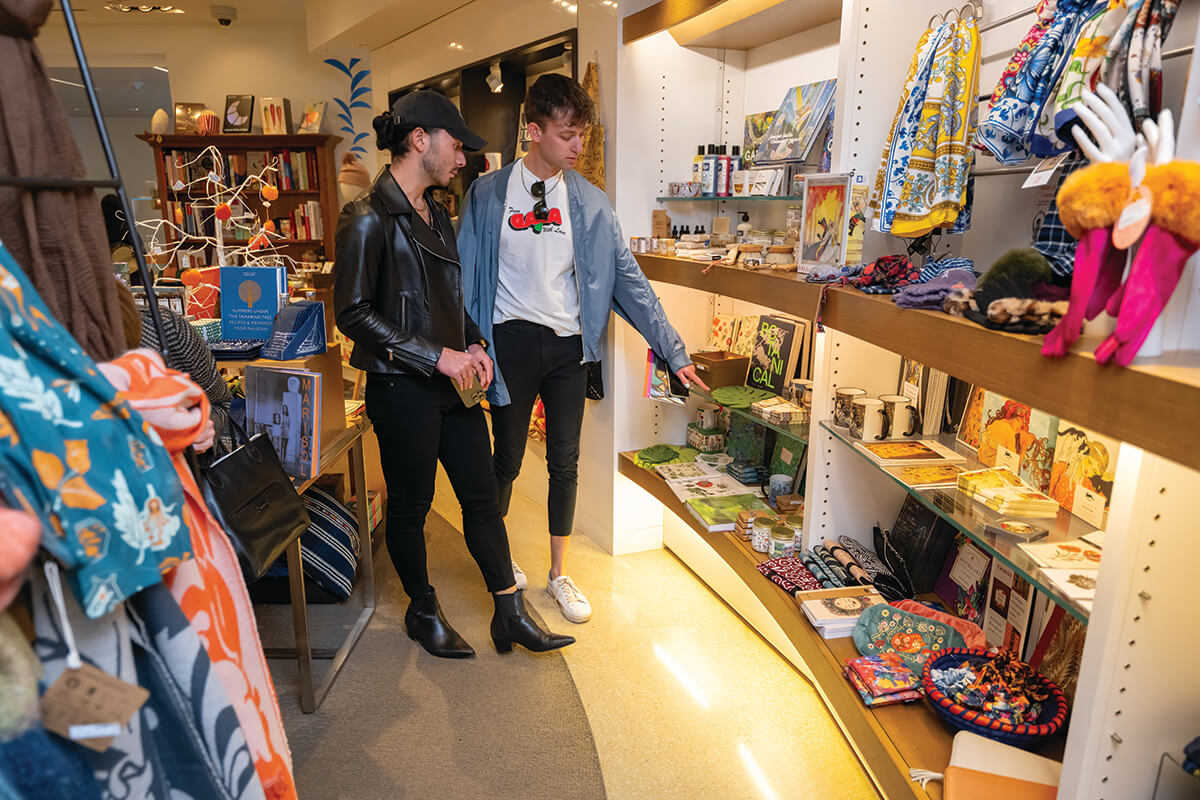
Baltimore Museum of Industry
“Industrial chic” is a recent trend, but at the BMI in Locust Point, it was always in style. Their exhibits feel like a Barry Levinson film set come to life—I love to wander through recreated historic shopfronts, printing presses, and workrooms under the glow of neon signs from bygone businesses, traveling back in time each time I turn a corner.
And the museum shop celebrates the city’s long tradition of manufacturing, too, with merch featuring the likeness of the neighboring Domino Sugars sign and books detailing the story of Baltimore’s packing houses, steel mills, and umbrella factories.
The mission of the museum especially shines through in their “Made in Baltimore” section, where you can buy one-of-a-kind treasures crafted on-site. Definitely check out the wonderful handmade iron keychains of beech leaves made by volunteer blacksmith Bob Webber on the BMI’s own working forge. A lifelike little leaf hangs from my key fob, a reminder that I need to plan my annual BMI pilgrimage for 2024.
The BMI also hosts entrepreneur pop-up events throughout the year, where you can support local small businesses and artisans selling prints, crafts, food, artwork, and other goods, including the seasonal farmers market that takes place in its parking lot come spring.
Maryland Center for History and Culture
Who needs reproductions when you can get the real thing? It makes perfect sense that a museum shop celebrating Maryland’s history and culture would sell antiques and vintage clothing on consignment, which has my name all over it.
Just a few steps from the displays of Orioles team cleats and the New Look sportswear of Frederick fashion designer Claire McCardell, you can find your own Maryland treasures at the MCHC. Snap up period finds like chased copper julep cups from the glitzy brownstones of Mount Vernon or fabulous hats from the Hutzler’s department store.
The museum’s changing exhibits, like the recent retrospective on one-time Marylander Jim Henson, also infuse the shop with all sorts of unique state-centric goodies impossible to find anywhere else.
A few years ago, I picked up a jaunty straw clutch from the 1950s, imagining it tucked under the arm of some well-to-do lady taking in a few races at Pimlico. I carry it around in the summertime to channel a little bit of Baltimore’s post-war glamour. And I often think that would make the MCHC proud.
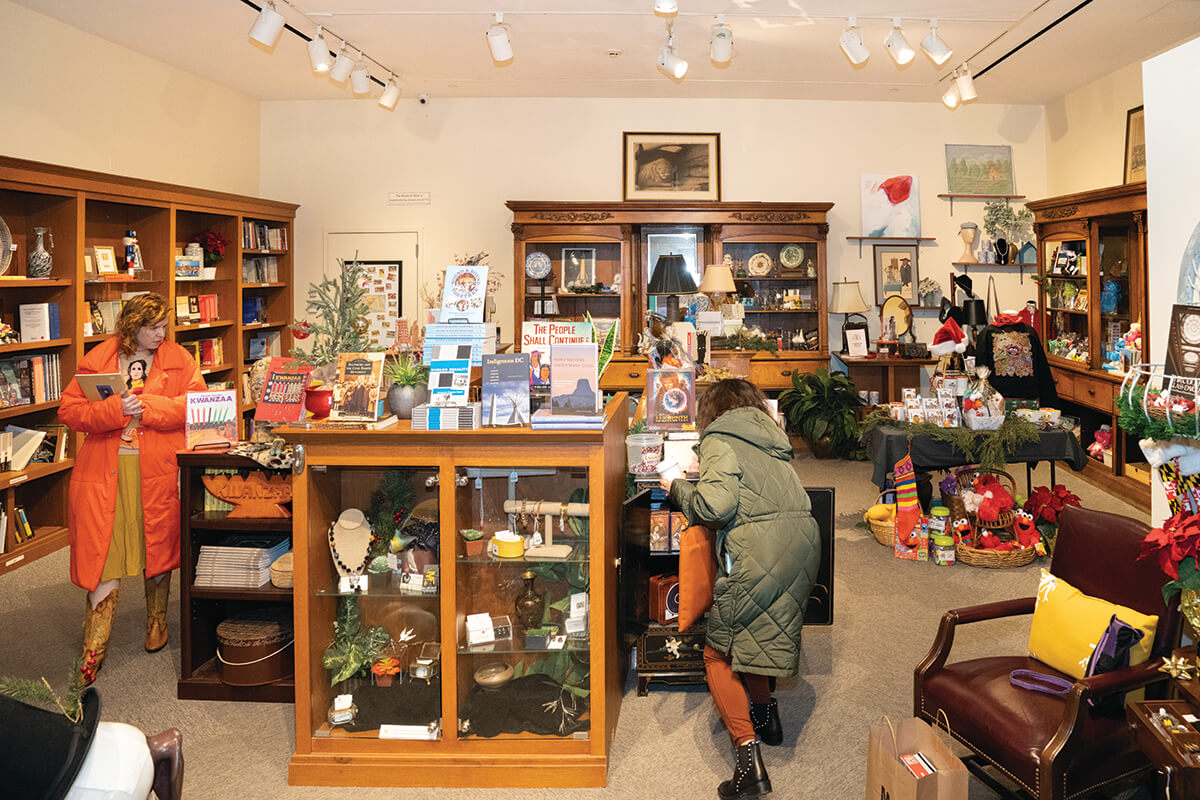
Reginald F. Lewis Museum
Long before there was the Smithsonian’s world-renowned National Museum of African American History & Culture in Washington, D.C., there was the Reginald F. Lewis Museum, located at a cultural crossroads on the edge of historic Jonestown in downtown Baltimore.
The Lewis Museum features more than 400 years of Black Maryland history in its halls and, over the years, has highlighted both the past and present, such as midcentury painter Ruth Starr Rose, who documented Black life on the Eastern Shore to modern-day photographer and West Baltimorean Devin Allen, whose images have graced the cover of Time magazine.
This same sort of expansive oeuvre is on display in the museum’s gift shop, which offers one-of-a-kind ways to celebrate the icons and imagery of Maryland’s Black history. Frederick Douglass merch and original prints, jewelry, and artwork made by local artists of color, as well as children’s books introducing little readers to Maryland’s iconic Black musicians, artists, athletes, and visionaries, are all great reasons to take advantage of the always-free shop admissions. Inventory rotates weekly, so it’s worth popping in on a semi-regular basis. And while you’re there, be sure to stop a while and watch the city go by through its grand floor-to-ceiling windows along President Street.
The Walters Art Museum
The Walters has roots in a core collection of art and artifacts bequeathed to the City of Baltimore in 1934 by its namesake scion, Henry Walters.
Spanning seven millennia of art from around the world, much of the collections are personal in nature, providing glimpses of what museums looked like in the 19th century, when private salon-style exhibits blended artistic techniques and periods to suit individual tastes. The vast Classical and Egyptian galleries in particular make me feel like Claudia in From the Mixed-Up Files of Mrs. Basil E. Frankweiler, with covetable Roman torcs and impassive sphinx figurines.
Fortunately, the gift shop provides the perfect place to scratch that same itch. Replicas of ancient Egyptian, Roman, Greek, Chinese, and Pre-Columbian earrings, cuff links, and pins in gold and silver are shockingly modern in their simplicity and design.
The paper and prints section echoes the global scope of the main collections, with illuminated Ethiopian holiday cards, Renaissance landscape prints, and notecards with delicate Japanese watercolors.
My personal favorites are the replica blueprints of the iconic Walters Museum building itself—the perfect insider gift for the Baltimorean who has everything.
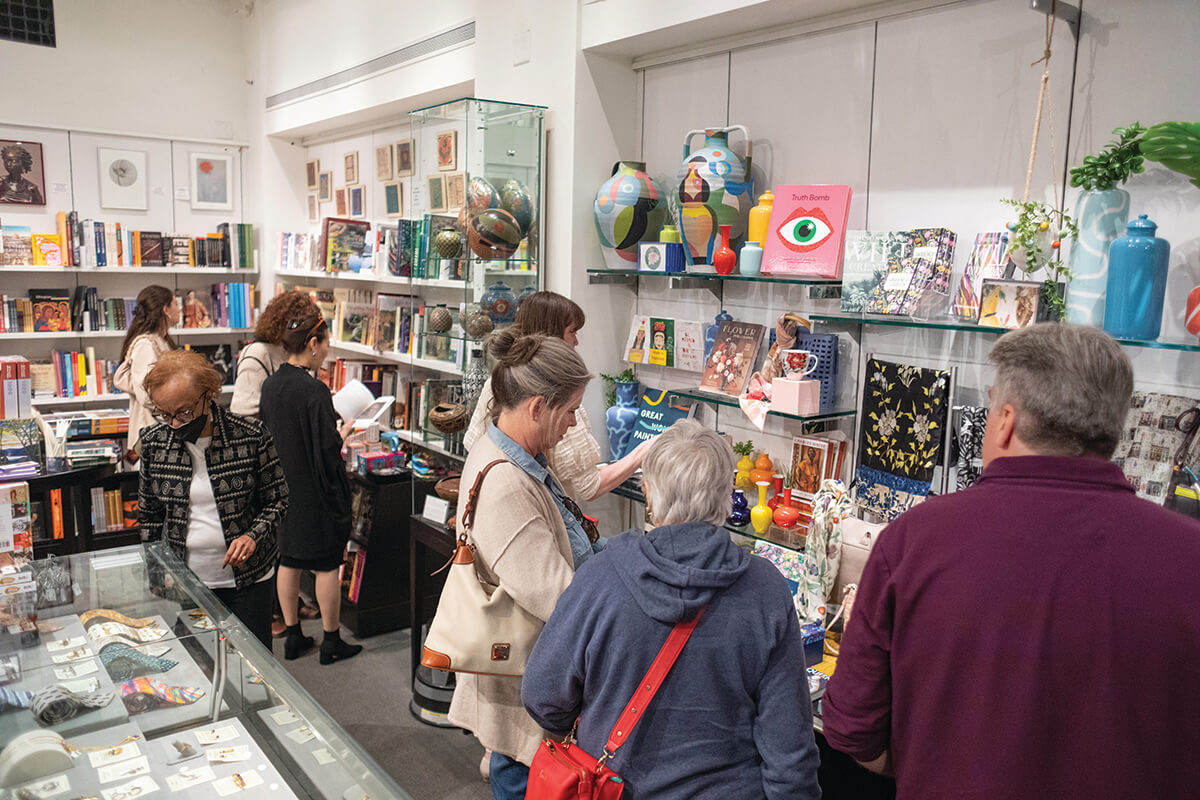
Small But Mighty
Many of Baltimore’s smaller institutions boast their own wildly cool shops with mission-inspired inventories that are delightful to explore.
The B&O Railroad Museum, for instance, has gifts for locomotive lovers of all ages, from striped engineer caps and model train kits to 19th-century replica railway maps and vintage Rails Across America comic books.
At the Edgar Allan Poe House & Museum, snap up Poe “Death Week” vigil candles, “Nevermore” highschool iron-on patches, and International Poe Fest swag.
At The National Great Blacks in Wax Museum, find books, clothing, and souvenirs highlighting notable African Americans, like Baltimore’s own Billie Holiday.
And the T-shirt game at the Babe Ruth Birthplace and Museum is on point, featuring an homage to the baseball icon’s original period uniform and a “Call It” top commemorating the Babe’s epic prediction of his own home run hit to deep center field in 1932, both of which will leave baseball fans with plenty of ways to rep their native son.
Meanwhile, you can find chemistry kits and glow-in-the-dark skeletons at the Maryland Science Center, stuffed animals and shark-tooth necklaces at the National Aquarium, and all sorts of books, games, and puzzles at Port Discovery’s brand-new, minority-owned Snug Books.
Here are the best purple parties to stand shoulder-to-shoulder with other Ravens revelers, score food and drink specials, and catch a glimpse of halftime performer T-Pain (and, likely, T. Swift) while watching our guys clear their last hurdle on the path to the Super Bowl.
The Charles: The Fed Hill favorite, which is within walking distance of the stadium if you’re searching for a place to land after tailgating, is kicking off its pregame at 2 p.m. Bring a group to enjoy specials such as $6 Nutrl seltzers; $7 Red Bull vodkas and Ravens Crushes; and $18 buckets of select beers.
Claddagh Pub: You can’t beat $1 beers. Head to the Canton Square stalwart to sip Natural Light cans for a buck, as well as $3 Bud Light bottles, $6 sour bombs, and $8 Espresso Martinis. Wing deals include 30 wings for $28 or 20 wings paired with a bucket of Bud Light for $35.
Das Bierhalle: Snag a stool at this popular Parkville spot where game days are fueled with beers by the liter and crab pretzels bigger than your face. Sunday specials include happy hour food; $5 bombs, Ravens Crushes, and select half-liter drafts; $8 select liter drafts; $10 Natty Light buckets; and $17.50 Nutrl buckets.
Delia Foley’s: No matter their loyalties, football fans can generally agree on one thing: no watch party is complete without wings. This South Baltimore bar is famous for their saucy, smoky snacks, which come in more than 40 flavors ranging from Old Bay with malt vinegar to habanero and barbecue-infused “Raven.” Grab an order (and a seat) when Foley’s opens both floors at 11 a.m. on Sunday.
Donna’s Tavern & Restaurant: If you’re rooting for the birds from Dundalk, be sure to throw on your most festive purple ‘fit before heading to Donna’s. The staff will not only be pouring free shooters for every Ravens touchdown, but they’re also giving away a prize to the best-dressed fan. Food and drink specials throughout the game will include $1 Bud and Bud Light cans, $2 Natty Boh bottles, $3 Angry Orchard bottles, $4 grape bombs, $5 chili-cheese nachos, $10 Orange Crushes, $10 orders of 10 wings, and a $20 crab cake sandwich with Old Bay fries.
Frazier’s on the Avenue: Known for its approachable grub, heavy pours, and ample screens, this haunt on The Avenue in Hampden is the perfect place to get together with fellow fans. Arrive early to grab a booth, put in an order of tots, and shoot a round of pool before kickoff. During the game, be sure to take advantage of $13 Miller Lite buckets.
Gunther & Co.: Though not a typical sports bar, this Brewers Hill restaurant has excellent eats and drinks to enjoy on game days. Among them is the purple-colored “Action Jackson,” a shimmering cocktail that mixes Case 1 Vodka with butterfly pea flower, Chareau Aloe liqueur, concord grape, and lime juice.
Max’s Taphouse: Highlighting its collection of more than 1,600 bottles and cans–plus 113 draft lines–Max’s is a bonafide game day headquarters in Fells Point. Grab a round, and some top-notch tailgate fare, while positioning yourself in front of one of the many screens.
Mother’s Grille: Every Purple Patio is fun, but we’d be willing to bet that the famous outdoor festivities at Mother’s in Federal Hill are going to feel much more exciting this weekend. Bundle up tight and make your way to the South Charles Street institution to partake in the shenanigans, which feature drink deals, big screens with sound, and a live DJ to keep the party going during commercial breaks.
Monument City Brewing Co.: The Highlandtown brewery is showing off its purple pride by hosting an all-out flock party beginning at 3 p.m. Enjoy $5 pints and eats from Vibz Food Truck while taking in all of the action on the taproom’s big screen.
Nacho Mama’s: Playoff specials at this Tex-Mex hangout—which recently rang in 30 years on O’Donnell Square in Canton—include $1 Bohs, $1 wings, $6 personal pizzas, and $8 32-oz. Lamar-garitas. You can also opt for the $40 Hubcap Tower, which pairs the brand’s famous hubcap margarita with a massive order of nachos. At the Towson location, enjoy drink deals such as $3 Bud Light and Modelo bottles, $4 Michelob Ultra drafts, $5 Nutrl cans, and $6 Ravens bombs.
One Star Country Club: This Federal Hill party palace is getting the bash started bright and early at 9 a.m. on Sunday. Throughout the day, expect drink specials, an oyster bar, live DJ tunes, and a heated tent for overflow crowds outside on East Cross Street.
The Point in Fells: Throw on a jersey and get ready to cheer on the birds at this Fells Point favorite, which is offering a laundry list of specials. Aside from a $40 all-you-can-drink deal on draft cocktails and domestic beer, fans can take advantage of $8 touchdown bombs; $10 Ravens Crushes, Charm City Lemonades, and rum punch; $18 beer buckets; and $20 Corona Seltzer and Twisted Tea buckets. To snack on throughout the game, the spot will highlight $8 pizza bites, nachos, Buffalo veggie nugs, and wings by the half-pound; as well as $12 crab pretzels.
Pickles Pub: With roots dating back to the late-’80s, this hallowed sports bar is pretty much as close as you can get to the action without a ticket to the game. Arrive as early as 9 a.m. for eats, drinks, Lamar Jackson “MVP” chants, and likely a few TV stations and radio personalities broadcasting live.
Section 771: Next door, this rebranded bar (formerly Sliders) has become a fast favorite for its game day ragers. Meet up with friends (either inside or outside) as early as 9 a.m. to enjoy drink deals, bites under $10, live DJ entertainment, and the game on with sound.
RMYKS Bar & Grille: With TV screens around every corner, there’s practically no bad seat at this hangout near Little Italy. Plan to arrive early on Sunday for free nachos, tacos, and sandwiches while supplies last. The sleek bar will also pour discounted drinks and shots after every touchdown.
The Roller Wave at Baltimore Peninsula: The pop-up roller rink, whose stay in South Baltimore is coming to an end this month, is throwing a pregame skate party with live DJ entertainment beginning at 12 p.m. Stick around during the game to watch all of the action while sipping “Touchdown” margaritas and “Endzone” sidecars. Emmanuella’s Cuisine will also be on site to feed the flock with jerk and barbecue wings, meatballs, Haitian mac and cheese, cucumber pasta salad, hot dogs, and chips and dip.
Southern Provisions: SoPro in Canton is taking it outside with a heated tent party featuring entertainment by DJ Yadi. Show up for drink specials, live music, and plenty of tailgate snacks on offer beginning at 10 a.m.
Union Craft Brewing You might be familiar with trash can nachos, but at Union in Hampden, the taproom crew is going big and pouring them out of a keg. Show up early at 2:50 p.m. to munch on a free serving of the chips loaded up by Carroll & Son Fine Foods, while also getting a good seat in front of two big screens. The special watch party will also feature big beers (the G.O.A.T. IPA is an obvious choice) and fresh shucks by The Local Oyster.
Wet City: The Mt. Vernon brewpub is teaming up with chef Craig Falk of Big Softy to host an epic playoff party beginning at 2 p.m., complete with pints, shots, wings, mozz sticks, and aptly themed purple margaritas. Swifties will appreciate Falk’s Taylor-inspired food specials, including “Taylor’s Tendies,” and his signature Detroit-style pies in varieties like “Folklore Feta” and “You Belong with Cheese.”
]]>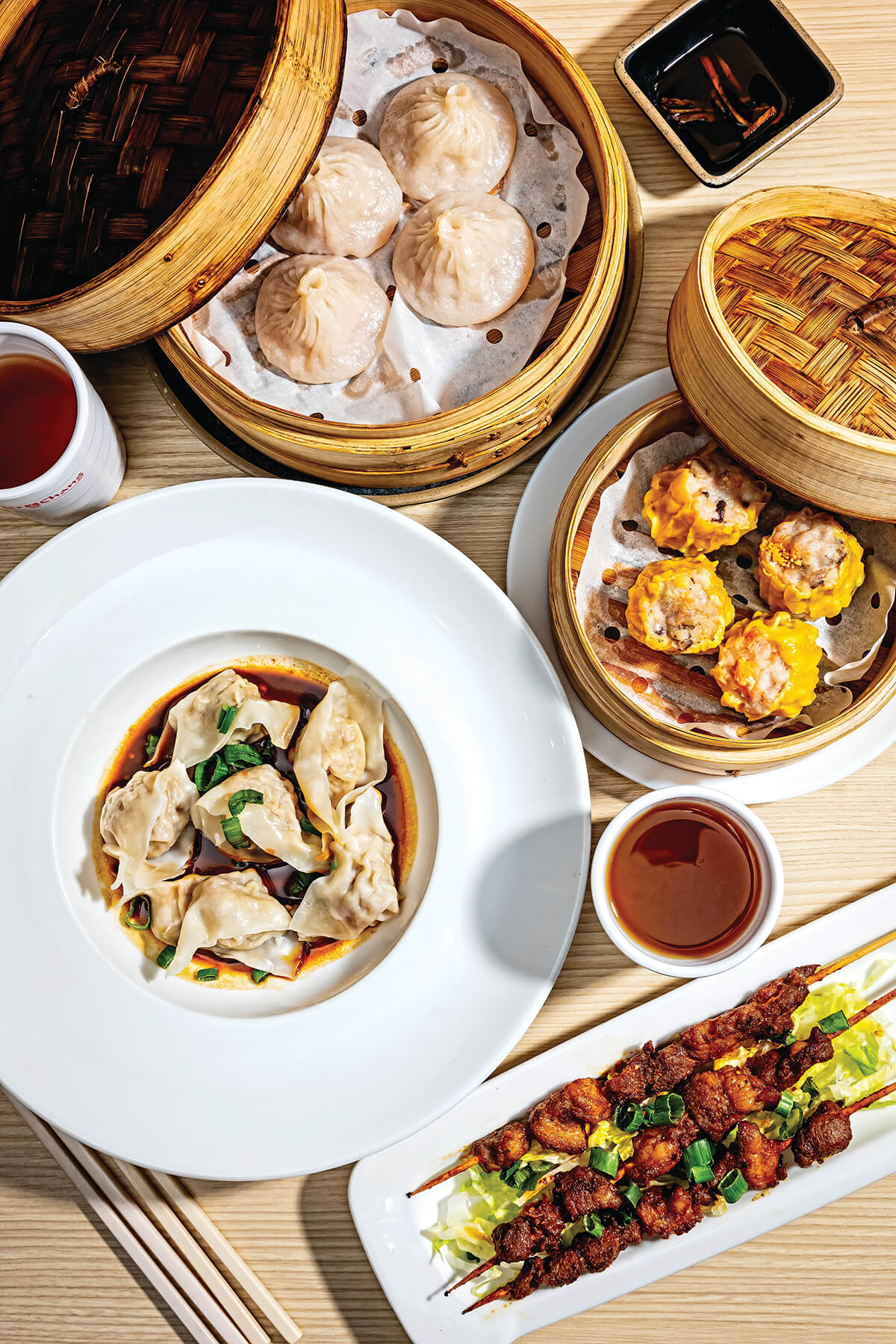
When noted chef Peter Chang opened his second Baltimore restaurant on Ashland Avenue last June, it was fantastic news for lovers of Chinese food. Because not only was it more of Chang’s cooking—his first Baltimore restaurant, NiHao, opened in 2020 to rave reviews—but it specialized in dim sum.
Dim sum, a style of small-dish service that originated in Cantonese teahouses, is a cuisine Baltimore has been missing. Chang’s latest restaurant offers not only a large dim sum menu, but also classic dishes, including some available at NiHao.
Located near Johns Hopkins Hospital, PCB feels more like a fast-casual eatery than a Hong Kong teahouse. Rather than the large banquet tables and roving carts of a traditional dim sum restaurant, you order your food at a walk-up counter. Thanks to the Hopkins lunch crowd, the place does a brisk takeout business, helped by its boba menu.
The same menu is served all day, so you can get a huge bowl of Chongquing sour-cabbage flounder, an excellent rendition of the water-boiled fish that’s a staple at Sichuan restaurants; the branzino, fried and served whole atop a pool of spicy pan sauce; or a whole or half Peking duck, the lacquered bird served with a container of paper-thin pancakes.
But the most fun, and arguably the best use of your appetite, is to bring a group and order as much of the dim sum menu as you can. Start with a bamboo basket of soup dumplings, called xiaolongbao or xlb in dumpling houses and a dim sum must-have, as are orders of shumai and wontons, doused with the requisite chile oil.
And although you might not ordinarily opt for kabobs at a dim sum house, the ones here are blissful miniature skewers of cumin-heavy lamb. These aren’t really kabobs at all, but a variation of toothpick lamb, a classic dish for which bits of lamb are infused with cumin and chiles, crisped into submission, then impaled on a series of toothpicks, an addictive but insanely labor-intensive dish, both to create and to consume.
And no matter how many dishes you manage, do not forget dessert, here in the form of eight-treasure osmanthus sticky rice and black-sesame egg-yolk bao. And that duck? You could start your dim sum journey with it, but then you wouldn’t have room for the dim sum. Either put in a to-go order or enjoy it at NiHao, a more leisurely restaurant better suited to banquet-style dining.
It is easy to find Peter Chang these days. This was not the case 15 years ago, when the then-peripatetic chef was tracked by his remarkable dishes throughout the Southeast, his trajectory the subject of a New Yorker piece called, “Where’s Chang?” by Calvin Trillin. Chang, who cooked at luxury hotels and won cooking competitions in his native China, then moved to the U.S., where he was chef at the Chinese Embassy in D.C. before building a small restaurant empire and winning a slew of awards.
That we have not only NiHao but a neighborhood dim sum spot here is something of a coup. One imagines Trillin, now 88, sitting in the corner, a stack of bamboo baskets before him, smiling.

PETER CHANG BALTIMORE: 1923 Ashland Ave., Baltimore, 443-888-3688. HOURS: Daily, 11 a.m.-9 p.m. PRICES: Dim sum: $7-12; noodles, soups, and entrees: $4-78; desserts: $8-12.

On a given day in an unassuming building in Curtis Bay, a group of women are creating. As one takes her gloved hands and dips them into a sugar scrub infused with lavender, others are labeling jars, pouring honey, creating soap—readying it all for sale at local markets. On a wall painted with a mural of honeycomb with bees on it is a verse from Deuteronomy: “And He hath brought us into this place, and hath given us this land, a land that floweth with milk and honey.”
This is Hon’s Honey and one thing these women have in common is that they have all survived trauma such as exploitation, generational poverty, addiction, and abuse. Mandy Memmel has created programs that are helping them save their own lives.
“Our mission is to help a woman understand her value, her identity, and her creative purpose,” says Memmel, 53, founder and executive director of Drink at the Well (known as The Well). “When [a woman] can sustain her own life, she can help the next woman walking through our doors.”
More than a decade ago, Memmel started a group at the local recreation center called Women of Hope. “I had a vision of starting an organization where women could come and be healed, be restored,” she says. That vision became The Well, which she launched in 2013.
At The Well, women gain access to life’s essentials like fresh food, clothing, even showers. It offers child care for its participants and a residential program they hope to expand.
COR Life Development, which stands for “community, opportunity, and responsibility,” is an anchor program at The Well in which women learn important life skills around things like physical and mental health, communication, financial information, healthy relationships, and coping mechanisms. There are counseling groups, financial resources, and scholarship programs for those wanting to further their educations.
Hon’s Honey is for women involved in COR Life Development. The workforce development program teaches women skills that will enable them to work and live in the community, including making all-natural products from honey from the center’s eight hives.
“I love the work I do because it’s divinely inspired,” says Memmel. “We’ve had many women testify that when they walked through our doors, their hopes came to life.”
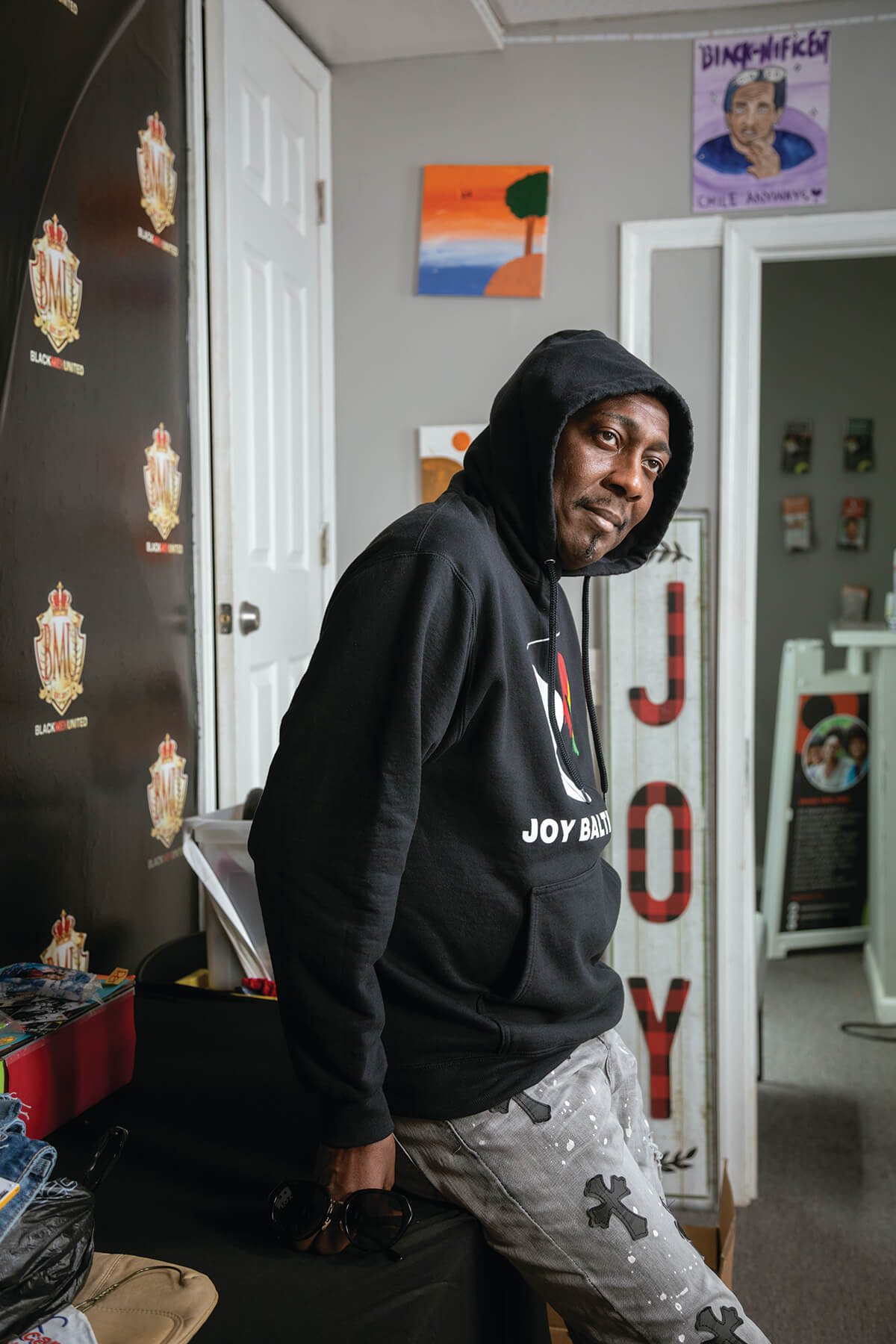
Lonnie Walker understands what the homeless and displaced youth who are served by JOY Baltimore are going through—that’s because he’s been there himself.
He grew up in Brooklyn, New York’s infamous Red Hook public housing project, a community that was ravaged by the 1990s crack epidemic. Walker’s younger years were marked by adversity. His single mother was not only raising her own three boys, but often took in and cared for their relatives. The family’s resources were stretched thin and neighborhood violence impacted their daily life. Remarkably, Walker overcame these hardships and they fueled his dedication to improving the lives of others.
“I love people and I want to help them,” says Walker.
When Walker first arrived in Baltimore about 20 years ago, it troubled him to see so many young people who lived in foster care or were homeless. He wanted to help, so he became a director of a group home. He grew to love the kids in his care and eventually resigned from the group home to make it possible for him to pursue adopting some of the children who needed a stable parent figure. In a twist of fate, he found himself jobless and a step away from homelessness—but his reduced circumstances only increased his passion for helping others.
“I stepped out in faith, without any funding. I just started doing the work, helping those in foster care who I had worked with in the past,” recalls Walker.
This “work” included sourcing donations from his own network of essential supplies like hygiene products, food, and clothes, and getting these items to the children who needed them.
Walker’s grassroots efforts gradually gained recognition and funding and evolved into JOY Baltimore. JOY stands for “Just Our Youth,” but “joy” is also an apt characterization of Walker, a charismatic and proudly gay man who exudes positivity and optimism.
JOY Baltimore seeks to support vulnerable children and end youth homelessness, with a focus on the LGBTQ+ community. Its JOY Drop-In Center provides access to vital services including medical care, access to emergency shelter, food, toiletries, bus passes, treatment, counseling, crisis intervention, and more. JOY Baltimore also hosts a free bi-monthly market called The Boutique, which provides necessities like clothing and access to community services. Finally, the organization facilitates the mentorship programs Black Men United (BMU) and Black Women United (BWU), which connect young African Americans with older adults mentor- ship, guidance and access to opportunities.
Another hallmark of Walker’s work is his respect for the dignity of each participant. At special holiday events, for example, Walker insists on family-style dining on nice table- cloths. This access to fine living extends to the experiences he’s able to provide the youth in his program, such as special meals at some of Baltimore’s most exclusive restaurants.
“The studies say that people climb as high as they can dream,” says Walker. “I want to make sure that young people know that there are no specific people that these nice things were created for. You can do all of this.”
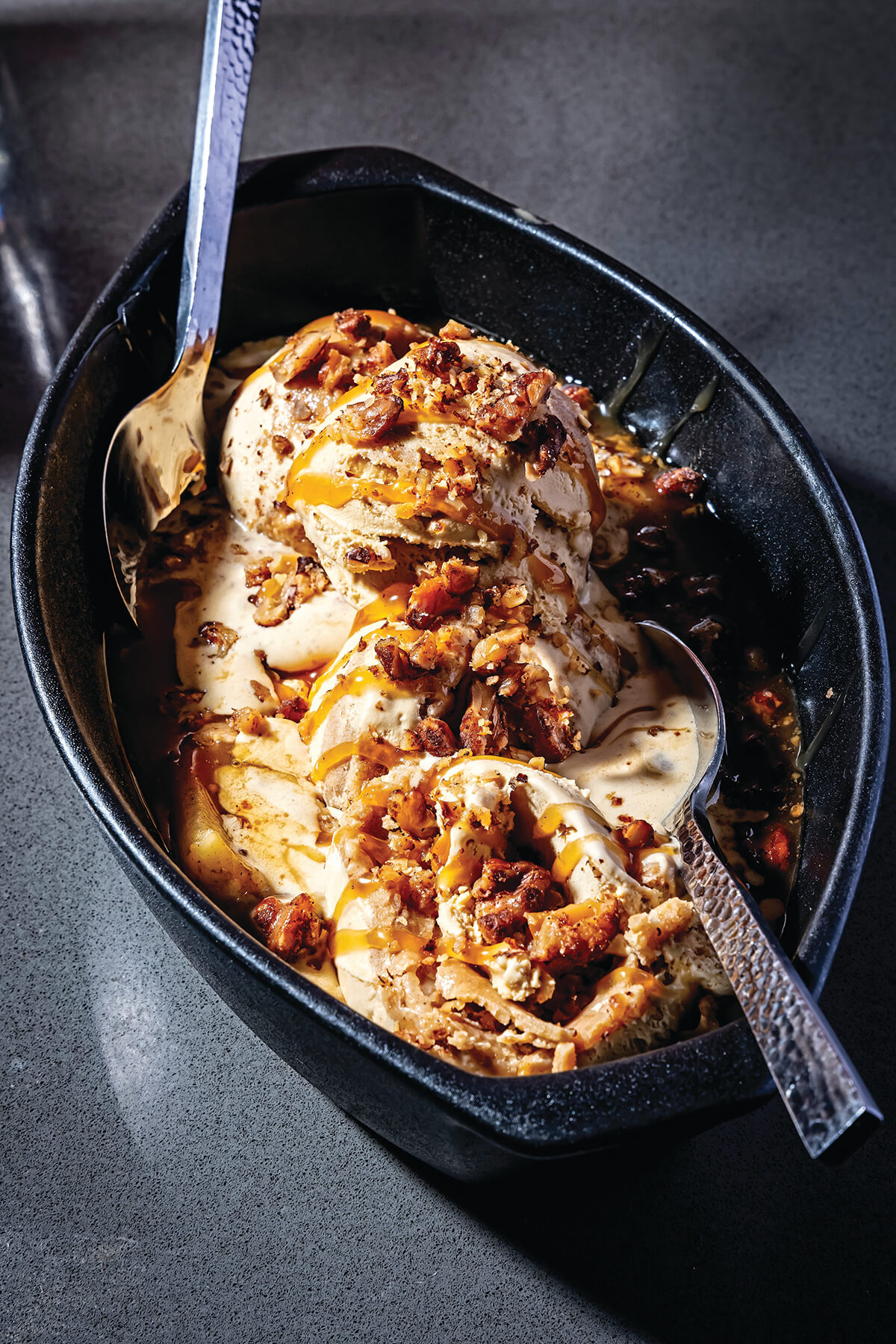
I wonder if executive chef/owner Zack Trabbold has ever met an ingredient he didn’t like.
The Local’s menu reads like a wish list for epicures with in-depth descriptions reminiscent of food writer M.F.K. Fisher’s musings. For example, Trabbold paints an enticing picture of the smoky, char-grilled oysters before they even arrive at the table. We learn the Chesapeake bivalves will be embellished with parsley, lemon, truffle-herb compound butter, aged Parmesan, crusty bread, and charred lemon. And, indeed, the five plump half shells lived up to their billing, delivered on a wooden board and resplendent in their shellfish glory.
The rest of the menu continues the same kind of detailed chronicle, leaving little doubt what is coming your way. Trabbold, who was named 2023 Chef of the Year by the Restaurant Association of Maryland, burst onto the local culinary scene in 2021 when he opened the instantly popular The Local in Fallston.

He soon expanded the fledgling eatery into a neighboring building to accommodate the crowds before venturing to open another spot on The Avenue at White Marsh last summer, where Shania Agkamirian is the corporate sous chef. She recently made a splash in the restaurant industry, winning first place at the World Food Championships in Dallas.
The star of the menu at both Local locations is the beef Wellington for two, presented on a cart tableside. Expect the dining room to pause in awe temporarily as they watch the 18-ounce hunk of rosy tenderloin cut in half before being presented with crisp red potatoes, creamed corn, and a pleasing bordelaise wine sauce.
The chef doesn’t mess with tradition in the Wellington’s preparation. The tender meat is covered with duxelle, a mushroom mixture, wrapped in flaky pastry, and baked until golden. The kitchen requires 45 minutes to make the meal; order it soon after getting settled at your table.

The only sticking point on the beef Wellington may be the price, $115. On my first visit in September, it was $105 and jumped $10 by the time I returned in November. I rationalized the price tag this way: Even after the two of us ate until we were stuffed, there were plenty of leftovers. (And I used the remaining beef at home to make a stir fry, steak and eggs, and a black-and-blue salad, so that helped balance the price tag.) There’s also a gorgeous three-pound tomahawk steak for two on the menu for serious carnivores. Maybe next time.
For a restaurant that borders on casual, with its deep-brown tones, bare tables, and industrial details, the service is impeccable. On both visits, the servers were professional and genial. A manager also visited our table—and others in the room—asking about our experience. A sense of caring permeates the space (even though there is a cheeky photo of chef Anthony Bourdain giving diners the finger hanging on the wall).
A serious list of appetizers beckons while you wait for your entrees. A wedge salad takes on a new shape as an indulgent mound of chopped iceberg lettuce, Stilton blue cheese, and applewood smoked bacon. The chicken-fried deviled eggs, featuring four plump half orbs, teased our palates with a swirl of creamy yolk, all to be dipped into a tongue-tingling rosemary hot sauce.

True to its name, The Local relies on local, seasonal ingredients, which, combined with Trabbold’s creative streak, means you should expect the menu to change. On one visit, we had crispy slices of pork belly over a mound of grits. Another time, the pork belly morphed into a different dish with peanut butter, a blueberry-ginger compote, apples, and candied jalapeños.
Besides the entrees for two, a house specialty is the beef Stroganoff, a retro classic updated with house-made pappardelle pasta and tangy hunks of blue cheese (a masterful addition) accompanying the requisite filet slices, mushrooms, and sour cream.
If you’re not a meat-eater, don’t worry. The kitchen has you covered with offerings like lobster pot pie, salmon, crab cakes, scallops, and fish. We sampled a luxurious halibut filet encrusted with herbs and Parmesan, served on cheesy risotto, and smothered with baby arugula hinting of truffle oil.
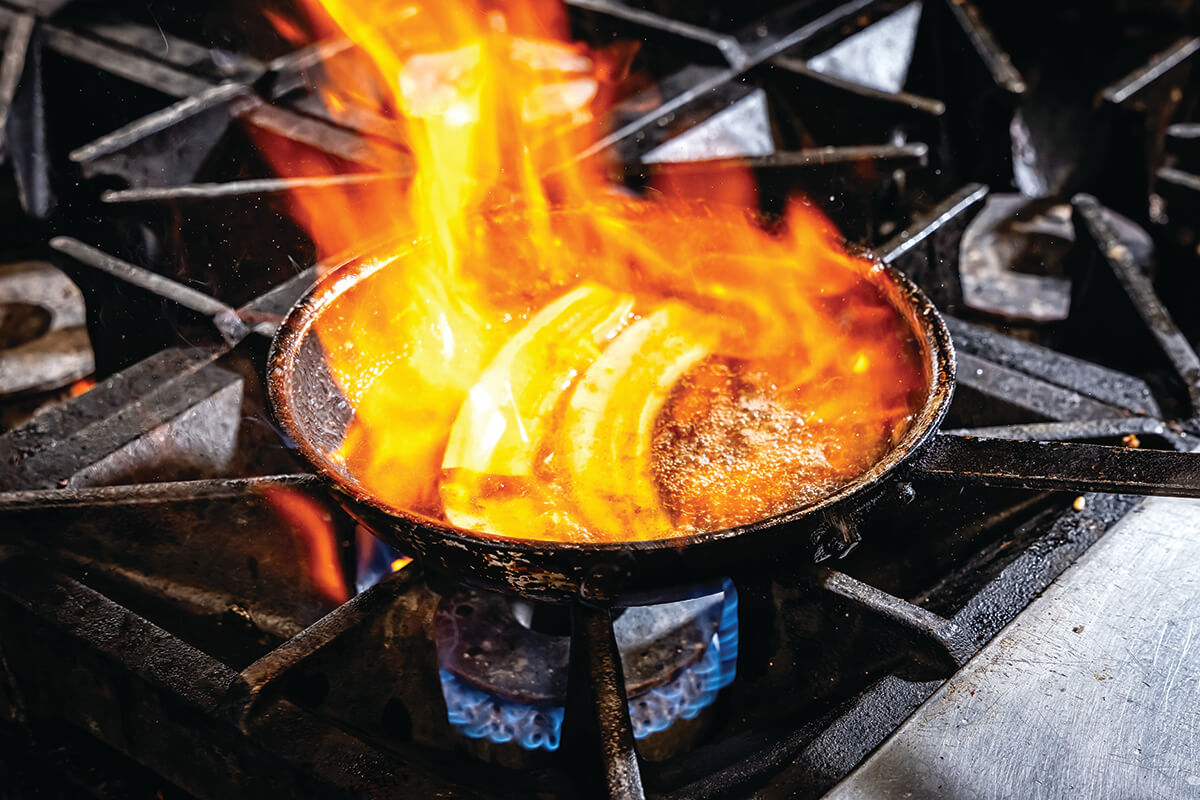
Desserts are basic but not boring, from a decadent bananas Foster to a flourless chocolate torte. Other choices include a seasonal selection from Newberry Bakery in Bel Air (Smith Island cake in the fall) and a seasonal crème brûlée (peach in late summer and, you guessed it, pumpkin spice in November).
“We’re not fine dining,” Trabbold says, describing The Local’s food as elevated comfort food.
But dining at The Local on The Avenue tastes just fine to me.

THE LOCAL ON THE AVENUE: 8161 Honeygo Blvd., Nottingham, 410-870-8250. HOURS: Sun. 10 a.m.-3 p.m. brunch, 4-9 p.m. dinner; Mon.-Thurs. 11:30 a.m.-3 p.m. lunch, 4-10 p.m. dinner; Fri. Sat. 11:30 a.m.-3 p.m. lunch, 4-11 p.m. dinner. PRICES: Soups, salads, appetizers: $8-39; sandwiches: $14-17; entrees: $28-145; desserts, $9-12; also, market-price selections. AMBIANCE: Sophisticated, industrial vibe
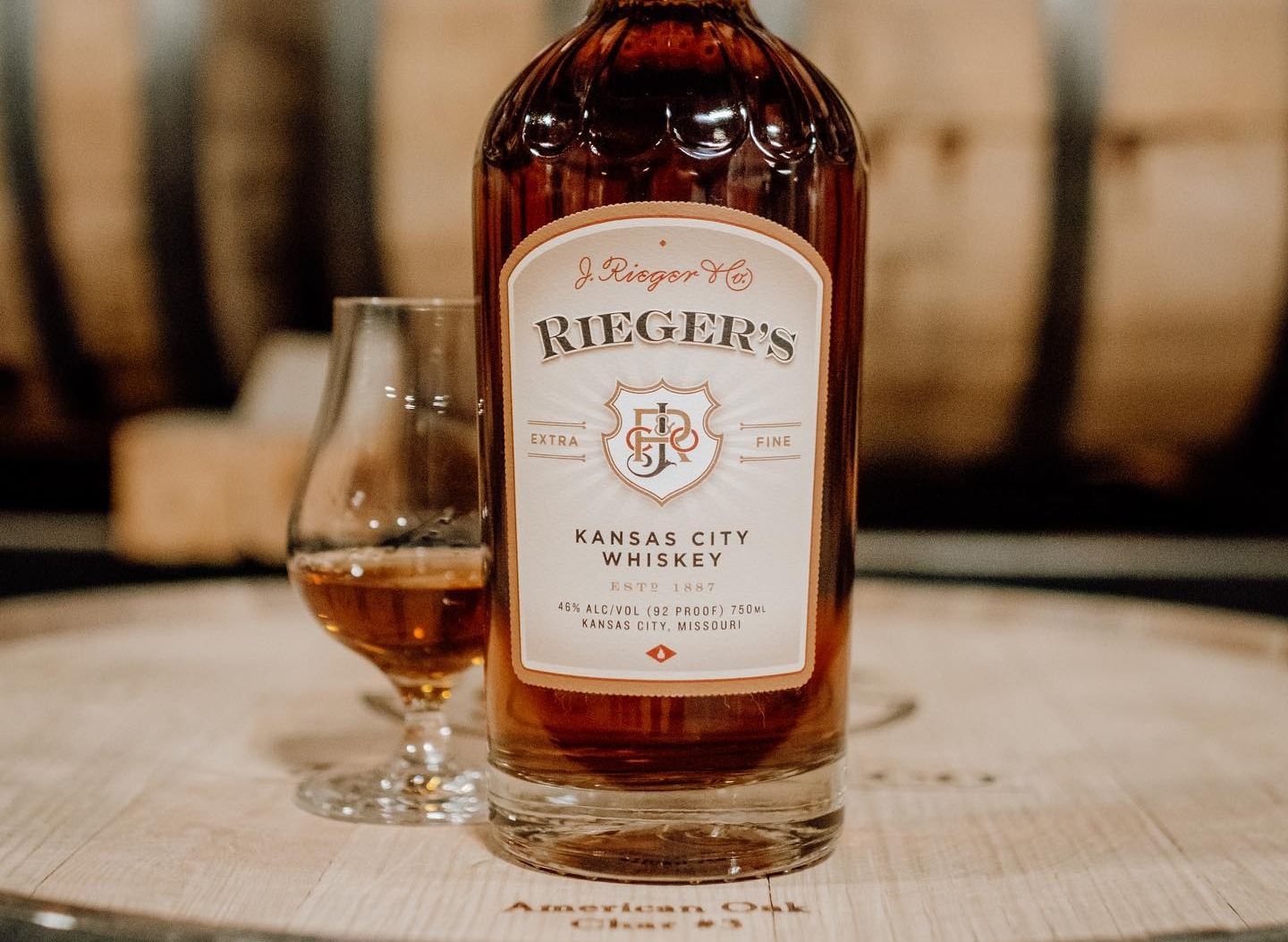
Regular readers of this column know that we have a tradition in the Farlow household: Top Shelf January. The holidays are a time for family and friends—and serving more crowd- pleasing (read: affordable) beverages. Well, everyone’s gone home and it’s time to break out the good stuff that you kept hidden in a locked cabinet away from your Uncle Harry. For those eschewing Dry January, prepare to indulge in a little me time.
Roland Champion Zero Dosage Champagne Brut NV
($60, Kysela Pere et Fils) 
We’re pretty sure you’ve had your fill of office party “champagne” and bland, mass-produced Champagne, because that’s what most people buy for New Year’s Eve. But there’s another echelon of Champagne producer above the big labels that buy juice and blend it to their own style—and that’s the Champagne estate producer. These are folks who grow their own grapes and make the wine themselves. Roland Champion is one such producer and this Zero Dosage bottling is just electric.
Zadie’s Lager
($17, 12 pack-cans, Legends) 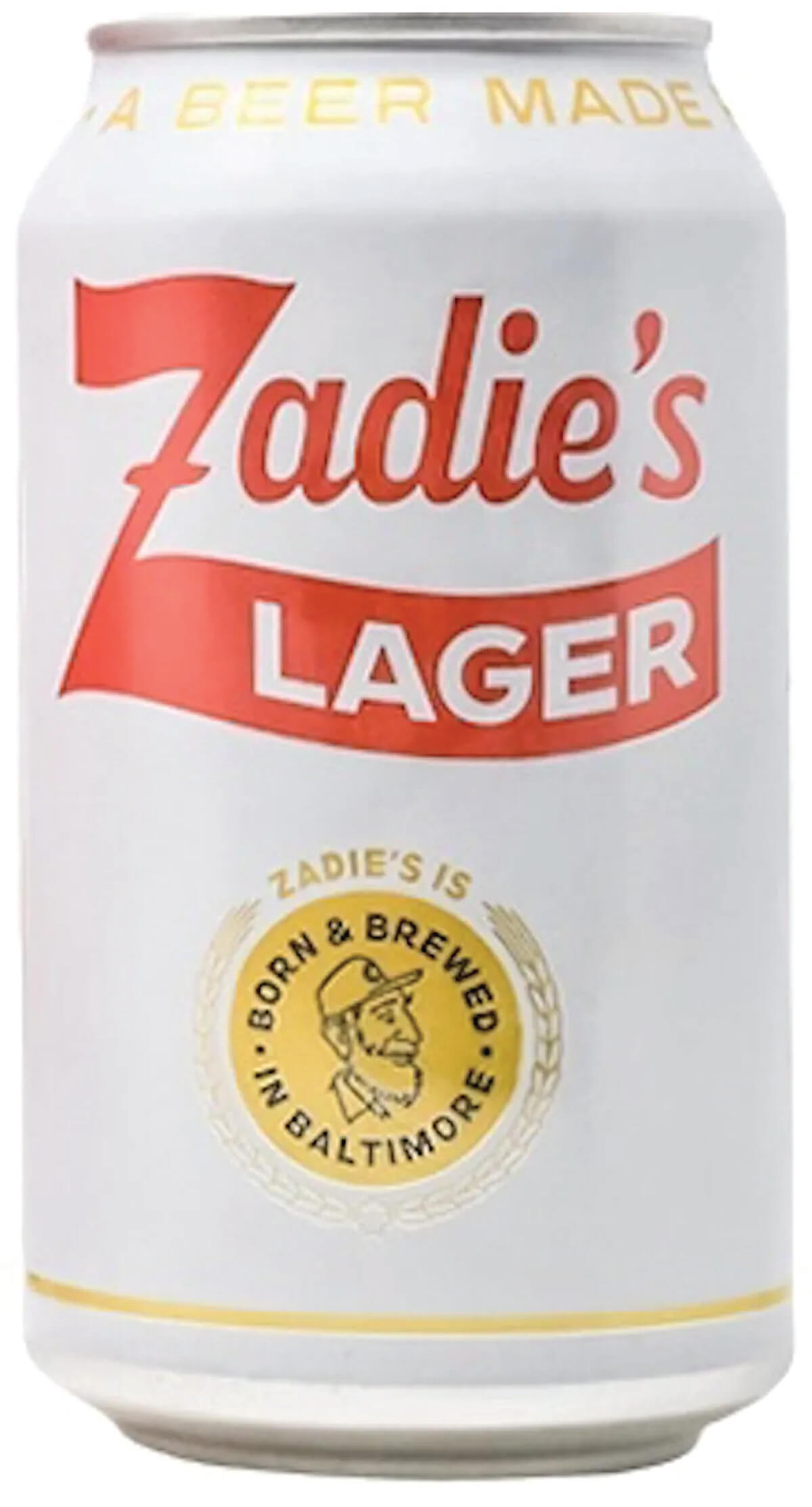
This isn’t a splurge at all, so why include it here? Because holiday parties tend to offer American lager from the big two massive beer companies only. And that’s okay because that’s what masses of people want. But now that it’s just you, wouldn’t you rather crack open a clean, crisp refreshing, no-nonsense lager that actually tastes like beer? Enter Zadie’s. This lager is brewed here in The Land Of Pleasant Living by the folks at Union, so it’s fresh and sup- ports a great Baltimore business. It’s delicious with all manner of snacks, pre-game pizzas, or as a crushable reward for getting all the decorations put away before February 1.
J Rieger Kansas City Whiskey
($45, Winebow) 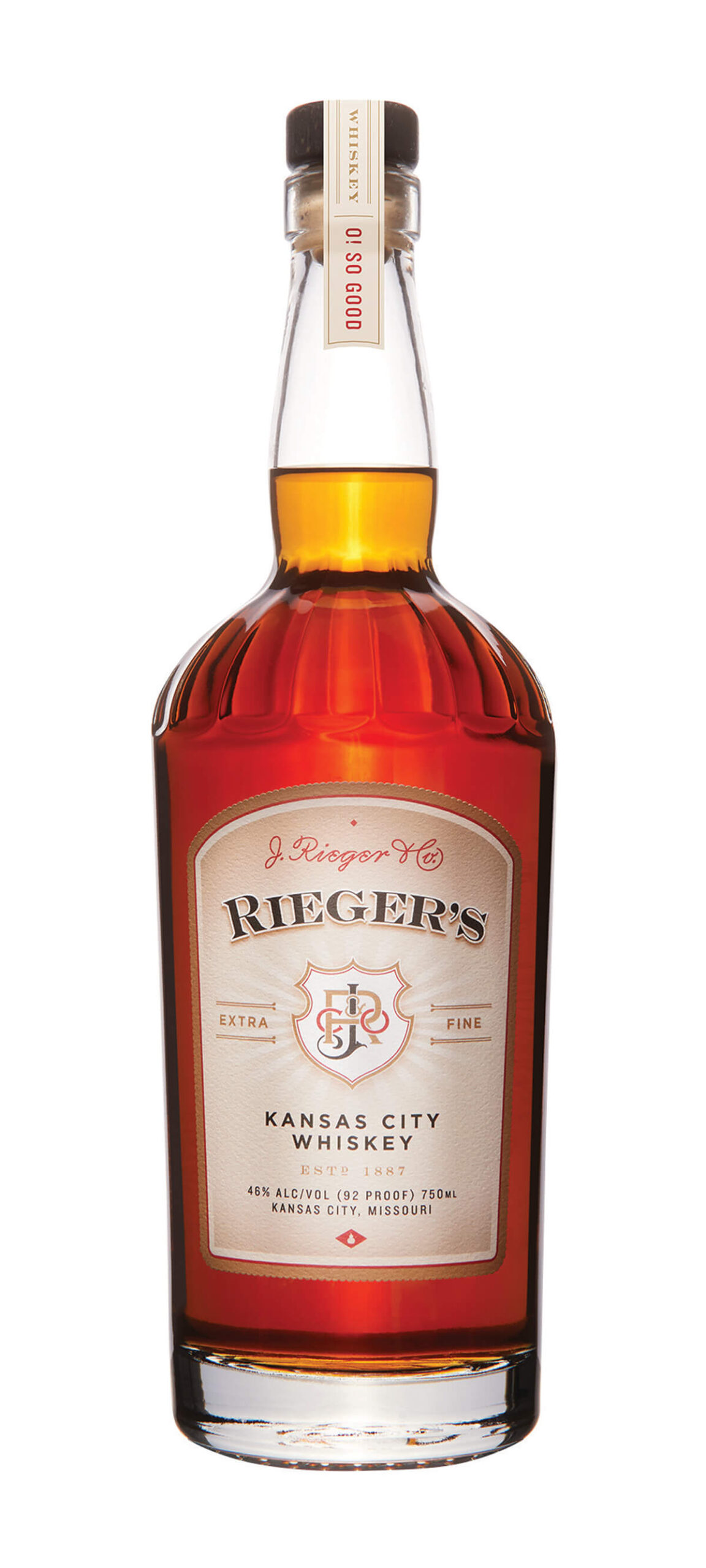
J. Rieger is a craft distillery in Kansas City, MO, that’s a reboot of an operation that existed before Prohibition. Today they make small-batch spirits, including this Kansas City Whiskey. It’s a blend of straight bourbon whiskey, light corn whiskey, and straight rye whiskey, all aged at least four years, plus a small amount of 15-year-old Oloroso sherry from the Williams & Humbert Bodega in Jerez. Bottled at 92-proof, this is strong enough to mix in your favorite whiskey cocktails, but can also be enjoyed on its own with ice.

Deep in the labyrinth of Johns Hopkins’ sprawling Homewood campus, Vesla Mae Weaver sits at a desk that is as stacked with mail as a village postmaster’s—piles of essays, all handwritten, from across the country. Because Weaver, 44, is not only Bloomberg Distinguished Professor of Political Science and Sociology at Johns Hopkins but also, as of 2022, the co-director of the American Prison Writing Archive, the country’s largest digital collection of writings by incarcerated people, all accessible to the public.
There are now almost 5,000 first-person accounts—essays, diaries, poetry—each addressing the experience of incarceration from over 400 facilities across 48 states, with more coming in, essay by longhand essay, hundreds of pieces of mail every month.
The APWA was founded in 2012 at Hamilton College, a small private college in upstate New York, by Doran Larson. Larson, 66, a Hamilton literature and creative writing professor, was teaching a writing class at Attica Correctional Facility, a maximum-security prison infamous for its deadly 1971 revolt. Larson, who still teaches at Hamilton and is the APWA’s co-director with Weaver, had put out a call for submissions for a book—Fourth City: Essays from the Prison in America, published in 2014—and was astonished at the amount of writing he received from incarcerated people across the country. The writings also gave him a rare window into America’s massive, dysfunctional, impossibly overloaded prison system. While Larson continued teaching and writing, the submissions also continued and the archive grew, as incarcerated writers sent essay after essay, like messages in paper bottles.
After more than a decade at Hamilton, in late 2022, the APWA moved to the Sheridan Libraries at Johns Hopkins and received a $2.3-million grant from the Mellon Foundation. Hopkins not only had Weaver, but was a larger, research-based university better able to accommodate the growing archive. Weaver had met Larson when she gave a talk at Hamilton, and had become involved with APWA after a student of hers wrote a thesis based on the archive, which became the basis of an animated series with The Marshall Project, the nonprofit news organization covering the U.S. criminal justice system.
Of the nearly 5,000 accounts in the APWA, only 75 are currently from Maryland writers, a number that Weaver hopes will increase with the move to Baltimore. As of 2020, the number of people under the jurisdiction of the State of Maryland was just short of 16,000, in 24 state prisons, plus private prisons and local jails. With an increase in funding and staff, and a larger presence, Weaver thinks it’s just a matter of getting the word out.
“Old-school and old-fashioned snail mail is the way we do things,” says Weaver of the archive, which does not take digital submissions due to issues of both privacy and accessibility. This means that the mail must be opened by hand and read, then entered into the archive and digitized—a process that is time-consuming, especially as the handwritten pieces, sometimes difficult to read, must first be digitized, then transcribed so that a digital image of the scanned essay is on the site as well as the transcription, and some identifying information removed. Although the names of the writers are shown—unless the writer asks to be anonymous—where they are incarcerated and why they are there is not. The entire archive is available online at prisonwitness.org.
“I intend to continue to find and create whatever meaning I can in my days, to tend to my little carceral garden,” writes Nicholas W. Browning in a 10-page 2019 essay, one of those 75 Maryland submissions. “It is not particularly fulfilling, nor is it easy to live with the knowledge of my crime. But, each of us in here, juvenile lifer or otherwise, has a choice: to stagnate or grow—however fitfully, and in spite of the circumstances.”
One of the many things that makes the archive so powerful is that the handwritten submissions are scanned as they are and transcribed exactly, with misspellings and odd punctuation intact, which translates not only voice but context. And the entries are often decorated—Weaver says many of the submissions contain art of some kind—like an illustrated manuscript; there are hand-drawings of birds and trees, architecture, maps, and landscapes filling up the available space. On one essay, a drawing is watercolored in the margins with coffee; on another, a rose is etched up the side of a page, then painted mauve with packets of Kool-Aid. The writings are also often redacted, like classified documents, so the pieces can read like medieval church manuscripts written by spies.
“My name is Andrew R. Sumahit, Jr.,” writes a man held in New York in a 2010 essay, “but for the past two years I have been a prison in- mate. In the past two years, I have only seen my daughter three times, but I have seen at least five people stabbed or cut. I am sharing the story of my life, one man’s struggle to break the cycle, the story of the incarcerated father.”
Sumahit is one of an overwhelming number of parents in American prisons: A 2016 survey by the Bureau of Justice Statistics found that 47 percent of state prison wards and 58 percent of federal were the parents of at least one minor child. Through the intimacy that only writing allows, the APWA asks you to imagine what it means for those parents behind bars, and for the over five million American children who have experienced the incarceration of a mother or father.
“The number-one indicator for future imprisonment is having an incarcerated parent or familial role model,” writes Corey John Richardson, in a 10-page 2016 essay from a Kentucky facility. “In this way, prison is a self-perpetuating reality, like a gene passed on generation after generation.”
“It grew rather slowly,” says Larson about the archive he started over a decade ago. “At first, it was basically the people who wanted to write and knew about the print collection, knew that the deadline had passed, but nonetheless wanted to send their stories out. Just to have someone, anyone, read about their experiences.”
Larson says that the quality of the submissions from the start was remarkable. “Our default position is to take everything, as long as it’s actually dealing with the criminal legal system,” he says. “Somebody sends a short story about a fishing trip with their father years ago, that doesn’t go in. If they say at the beginning, this is what I think about when I’m in solitary, it goes in.”
When considering what conditions inside prisons are truly like—as well as how to improve and reform them—it is the imprisoned people themselves who are uniquely able to give the most accurate representation.
“People who are the most subjugated often have the most to say and the best theories about how power actually works and what it means to live as a marginalized group in a democracy,” says Weaver. “The archive is not just one thing. Some are talking about prison conditions in very raw ways, others are just narrating their life experience, discussions of relationships they have built inside, and how they’re surviving.”
One of the biggest goals both Larson and Weaver have for the APWA is to give incarcerated writers a sense of continuity. “There was so much taken away—arbitrarily, all the time—ripped out from incarcerated people’s hands. People have little to no control, no agency, no autonomy in the institution. So continuity is important,” says Weaver. To this end, as well as to further add to the context of the collection, writers can continue to submit pieces after their release. They can be prolific; some have 40 pieces in the archive.
If the goal was to provide continuity for the archive’s writers, and an outlet for their writings to be preserved, it is also to provide—and grow—accessibility for its readers.
“Our mission is to have as many people engage in this work as possible, and to not be overly prescriptive in how they engage it. It may be policymakers,” says Weaver. But it can also be students, researchers, journalists, historians, criminal justice reformers, or those who are simply interested. “This is a hub, a resource, so that multiple different non-overlapping communities can engage with it.” This isn’t a digital literary magazine, although it can sometimes read like one, but an extraordinary catalog of narratives, of communiques, of witness. What incarcerated people go through on a daily basis, says Weaver, “has to be told through stories and direct experience, it can’t be told through statistics and abstractions.”
“Wouldn’t you feel rage if your every day existance was spent 23 hours a day in a space the size of a parking space? These are just some of the reasons I feel rage,” writes Tracy L. Skinner from a Maryland facility in 2020. “My voice is not loud enough to shout for the 2.8 mil- lion people in the U.S. prison system.”
The move to Hopkins and the increase in funding have led to a larger staff, in addition to expanded resources. Working with Larson and Weaver are associate manager Hannah Young, program coordinator Tristan Gordon, Sheridan Library’s metadata librarian Noah Geraci, and three new program assistants, Maura Cheney, Emily Sanchez, and Tirzah Sheppard. Sanchez and Sheppard are also Spanish-speakers, a valuable skill not only for reading submissions in Spanish but for eventually making the archive itself multilingual.
Weaver and her staff have not only been busy digitizing the backlog of submissions, but are also working to make sure that when writers’ pieces are republished, they are paid for their work, itself a difficult and labor-intensive effort. (If outlets do not offer compensation, the APWA will pay on the publication’s behalf—$98 per item, so as not to flag tax issues for the author.) Some of the publications that have featured work within the archive include The New York Times, The Los Angeles Times, Solitary Watch, and The Marshall Project.
To make the site as user-friendly as possible, the archive is searchable by keywords and phrases, author, and by some author demographic information—though many writers choose not to disclose this information. A new push is to curate the archive’s contents, to gather writings on certain subjects (family issues, solitary confinement, mental health) into more easily navigable sections. That’s because the archive is meant to be accessible, the messages unfolded from their bottles and read.
“In my building two cellies stabbed each other. Went to the medical. Then to the main office and the only thing that happen was they got separated. There was blood everywhere,” writes Jamilah L. Knox from California in 2020. “There is no Rehabilitation at all . . . Education is limited. No real workable career choices. So before you get on jury duty. Read this. Because it might give you second thought about sending a petty crime offender to prison. Its not worth it. Thank you.”
Historically, what little information we have about prisons comes from those who run the institutions, not the people inside them. Prison writing is a way to widen that perspective.
“I’m not a specialist in prison writing,” says Weaver. “My past work is about the democratic consequences of incarceration. Fifteen years ago, there wasn’t a sense that prison was deeply implicated in shaping citizenship and shaping carceral lifeworlds and shaping how people, ordinary people, experience government,” she continues, noting that much has changed since then, in the wake of uprisings and court cases and as America incarcerates more and more people.
While Larson, as a creative writing professor, has long realized the value of prison writing to illuminate what life is like inside, it’s not often that policymakers have been willing—or able—to access those writings.
“We want to make this work not just available,” says Larson, “but unavoidable. So it will seem naive not to take into account what incarcerated people are saying about policies and practices. This archive was really built by incarcerated people, by the writers inside. They quickly just broke through the gates of analog publication. The platform has really just been about catching up and giving them a platform for the enormous amount of work that’s coming out. I don’t think people have any conception of how much writing incarcerated people do. I had a man in my class who’d written seven 400-plus-page novels and lost them all in a cell search.”
“Living in prison as an inmate is: 1. humiliating 2. heart braking 3. boring 4. stressful 5. mind altering, and these are just a few issues,” writes William Liepe from a New Jersey facility. “I find that we are existing not living in conditions much like animals in a zoo. At 68 I wonder if death is not better. If I can’t be working my farm, why has god kept me, I ask him a lot.”
Over the years, the archive has called for solicitations primarily through Prison Legal News, a monthly magazine published by the Human Rights Defense Center, a Florida-based nonprofit. But PLN does not circulate evenly across the country, and was, according to Larson, recently blocked by Florida courts. The APWA is looking for other ways to call for submissions, particularly “prison witness gatherers”—the term used for those who are able to write or collect prison narratives—volunteers who are going directly into prisons, or the formerly incarcerated who are still involved in the institutions. There’s also an acute awareness of how many states and populations are underrepresented. Right now, the archive skews to populations from California, New York, and Texas.
Of the essays by authors who have chosen to disclose their gender, just over 4,800 are men, 300 are women, and fewer than 70 are by people who self-identify as trans or “other.”
While the goal of the archive hasn’t changed, it’s now reaching a broader audience—and further broadening that audience is a major goal. “I can tell you from experience that students who read this work, whatever images they had of prisons and incarcerated people essentially just dissolve,” says Larson. “And what they’re then thinking about is the people whose work they’ve read.” And while there haven’t yet been any specific policy shifts as a result of the archive, that is the hope. “We are just at the beginning of our efforts toward amplification,” says Weaver.
From a Texas prison in an essay dated 2020, Roy Shiloh Bryant writes: “‘They’ are now claiming ‘electricity failures’—shutting the electricity off for four/five hours during 96/98 degrees with a heat index 106 confining us to these cells i.e., great dane dog houses 24/7 no air (by the way, the hogs have air conditions, all 39,000 convicts have no in cell air). These cells are about 4 1/2 ft. by 8 1/2 ft. improper venti- lation, from 1925)… We have ate cold food for three months. Dear editor, if you know anyone willing to write my book, refer them? I have a story. Keep in mind, I don’t have long to live. I’m turning seventy (70).”
The aging of America’s prison population is just one of many issues demanding change from politicians and policymakers.
“What I’m hoping in the future is that this will actually have an effect on people thinking about policy,” says Larson. “We still use the terms ‘rehabilitation’ and ‘containment’ and ‘deterrence,’ and the institution just isn’t achieving any of those things. I want people to understand that and understand that this is essentially one of the greatest policy disasters in the history of the US. It’s just never worked; it’s never achieved the things it’s claimed to have achieved.”
“In Texas Prisons even more guys think about and do commit suicide. This is not only because of the guilt they feel for what ever crime they may have or did commit. Its because of The Loneliness, Isolation, Boredom and so on,” writes William T. Jacobsen from a Texas facility. “The suicide rate in Texas Prisons is worse than anyone will admit.”
Giving voice to those inside this country’s prisons is valuable to those outside the system and within it.
“Incarcerated people mostly can’t see this,” says Weaver of the archive, but they know it’s there. And even if they can’t see it, their family members can, as well as any member of the public with an internet connection. The visibility of the narratives is as crucial as it is compensatory, a way to give voice to those who have lost it. The hope is for journalists, lawmakers, students, reformers, and politicians not only to read these narratives but to use them—as primary sources from an institution that’s almost as walled-off as its inhabitants.
“I think the greatest common denominator is our profound sense of loss,” writes Kristine Cosgrove in looping cursive from a California prison. “Something has been stolen, lost, taken, or broken in the blink of an eye, and I find myself tearing up with them—when they feel safe enough to let me in,” Cosgrove writes, about her fellow incarcerated women. “And when someone who’s suffered for so long in silence without ever trusting anyone to just SIT and be quiet; to grieve with another human being; well—it changes you. It changes your perspective about a lot of things.”
Changing perspectives is exactly what the APWA would like to accomplish, by further opening the windows—and the mailboxes—into and from the some 7,000 state and federal prisons, correctional facilities, and other systems of confinement across 21st-century America. The number of people in those systems has dropped in some states, while other state populations are still growing.
And in a Johns Hopkins mailroom, the letters keep coming

A customer holds his cellphone up to Jerry Tsang’s face. The 54-year-old Tsang looks at the photo with a doubtful expression and shouts a question in Cantonese to his wife, Ying-hua, who is stocking shelves in the back of the family-owned and -operated Asian grocery. She shouts the answer.
No, Tsang says, they didn’t have that brand. Could they get it?
Probably, yes, probably, he would look for it. Sure.
The man, a regular, is assured. And with that, he makes his way down one of the product-packed aisles at Po Tung Oriental, looking for other items he’s unlikely to find anywhere else in the city. This tiny store in the heart of Baltimore’s near-vanished Chinatown, tucked downtown on Park Street between West Mulberry and West Saratoga, can easily be missed by drivers rolling by the mix-and-match commercial and residential buildings. But for those who’ve discovered it, Po Tung is revelatory.
Yelp commentators, always chary with compliments, overwhelmingly approve of the specialty grocery store, calling Po Tung “a hidden gem,” “terrific,” “a godsend for students who don’t have a car,” and “a wonderful store with good prices, fabulous selection, and lovely people who are glad to help you.”
An unexpected part of that “fabulous selection” is fresh fruits, which, when available, are immediately on display inside Po Tung’s front door, on a high glass counter. Yes, there are mangoes, papayas, kiwis, and pineapples. But adding even more color, there are occasionally mounds of golden Fuyu persimmons or piles of spiny, red rambutan from Malaysia.
“I like finding items my customers want or like,” Tsang says. “I like introducing them to something they’ve never tried but heard about.”
Tsang is originally from Guangdong, a coastal province of southeast China that borders Hong Kong and Macau. His shelves are chock-a-block with Chinese staples like zha cai, pickled mustard, and doubanjiang, a fermented chile soybean paste, along with varieties of fermented vegetables and a plethora of tapioca pearls for bubble tea. But he also stocks foodstuffs that span the globe, reflecting his diverse customer base.
One low shelf holds dark hunks of palm sugar, which is essential for Indonesian dishes like kue lupis (sweet sticky rice dumplings). Japanese Pocky sticks sit nearby, partnered with packets of rice noodles, Filipino pansit noodles, dried mushrooms, bean curd, and “100-year-old” eggs. Bottles of spices line up, including hard-to-find ones like asafoetida, used in Indian dishes. Tins of Titus sardines from Morocco are stacked up like books. Bok choy, water spinach, and Chinese broccoli are in the refrigerator section, and there are dumplings galore in the freezer.
The store is packed, but neat, and incredibly organized. If you can’t find a product, just ask, and either Tsang or Ying-hua will expertly pluck a bottle, can, or package from a shelf or corner and, despite the many different languages on labels, it’s almost always exactly what you were looking for.
And it doesn’t stop with the food.
There are pots and pans high up near the ceiling, and a side aisle full of regular kitchen stuff, cutlery, detergents, and scouring powders. Huge multi-liter tins of oil and sacks of rice bunk near shelves of hot pepper sauces. Phalanxes of cookies, candies, and dried fruit face off against jars of honey and boxes of teas. Woks, stone pots, pans, Korean stone bowls called ttukbaegi, tea kettles, and tea sets are also available.
“IT’S THAT RARITY OF RARITIES IN THE 21ST CENTURY, A NEIGHBORHOOD GROCERY STORE THAT SERVES THE NEIGHBORHOOD AND WHERE THE OWNER KNOWS YOUR NAME AND YOUR FAMILY’S.”
To outsiders, the neighborhood around Po Tung might look a bit sketchy, with several boarded-up vacant buildings, an empty grassy field where a huge department store once stood, and the gutted shell of another building on the corner just south of Po Tung. North of the store, there’s ongoing construction in the 400 block of Park Avenue where a mixed-use development of city-owned projects is underway.
Tsang says he’d heard about several other rehab and construction plans in the area before the COVID-19 pandemic put a hold on things. With the city now in recovery mode, he hopes they will materialize sooner rather than later.
The neighborhood’s somewhat rough edges don’t bother him, he adds. He rarely finds it necessary to call the police for any serious crime. “Once in a blue moon,” he says. If someone does get offensive or creates some chaos, he just crosses the street to the barber shop for friendly assistance and the occasional intervention.
Kitty-corner from Po Tung is the Perfect Images Barber Shop, where on warm days, men linger and chat after haircuts, and whose owner, Eric Stanley, quips that barber shops were once “The Black Man’s Country Club.”
“That’s my man,” barber Donald “Hands” Lynch, a big man deftly wielding an electric razer on the side of a customer’s head, says of Tsang. “He always speaks up [and says hello]. He’s kind. Everybody knows him. If he has any trouble, I just step over and it gets taken care of.”
Po Tung’s block isn’t just slightly off the beaten track, it’s also interesting—these things often going together, of course. There are several local apparel stores nearby, a liquor store, and a couple of Ethiopian businesses, including the Tabor Ethiopian Restaurant, whose pre-pandemic Tuesday night jazz sessions attracted Peabody Institute music students looking to learn from professionals.
And nearly everyone who lives or works in the neighborhood stops in Po Tung to shop.
It’s that rarity of rarities in the 21st century, a neighborhood grocery store that serves the neighborhood and where the owner knows your name and your family’s. And that’s how Tsang thinks of his store, his regular customers, and nearby businesses—“like family.”
Sure, the store stocks mostly Asian products, but his customers, emblematic of the neighborhood and the city’s diverse demographics, are from everywhere—Africa, the Caribbean, Central America, Mexico, Europe—and its shelves reflect it. Many of his neighborhood regulars, who don’t have cars to shuttle them to the suburbs for larger markets that feature food from their homelands, know that Tsang might very well have them in stock. If not, they can request it and he’ll find it.
Po Tung also attracts a good number of international Baltimore college students from nearby Maryland Institute College of Art and Johns Hopkins University. Hailing from such far-flung places as Africa, Taiwan, the Philippines, Thailand, and China, they often fill the aisles, baskets loaded with this small taste of home, patiently waiting at the single register helmed by Tsang or his wife.
“I’d heard about it, so I didn’t go for anything special the first time, but just to see,” says Yiguang Zhu, a Johns Hopkins University doctoral student in environmental health and engineering from Fujian, China, who discovered the store when he moved to an apartment in the neighborhood in 2019.
“I was amazed,” says Zhu, who has a car, so he’s also able to shop at H-Mart and Great Wall in Catonsville and Lotte Plaza Market in Jessup. “Po Tung’s got a unique location. They have everything—seasonings, pickled vegetables, Chinese ingredients—right here in the city. If I’m cooking and find I’m missing an ingredient, I can just walk there,” he continues. “Their prices are really fair, and all the Hopkins students get a discount if they show their ID. The owners are great and really helpful.”
“I WAS AMAZED…IF I’M COOKING AND FIND I’M MISSING AN INGREDIENT, I CAN JUST WALK THERE.”
The sentiment is repeatedly echoed by other customers and businesses in the neighborhood. And this is Tsang’s neighborhood.
“I grew up in Baltimore and went to Douglass High School,” Tsang explains, referring to Frederick Douglass High School, the second-oldest high school in the United States created specifically for African-American students during the era of segregation. (Thurgood Marshall, the Supreme Court’s first Black justice, and Cab Calloway, the legendary bandleader, both graduated from the historic school, among others.)
“I’ve been in the neighborhood for a long time,” Tsang adds with a hint of a smile. “Everyone knows me.”
African Americans and Chinese and other non-white immigrants in Baltimore were once legally redlined from certain neighborhoods and ended up living near one another. The Chinese community in the city began forming in the late 19th century, fueled by Asian (mostly Chinese) workers who arrived in the U.S. during the Gold Rush era and then worked on the Trans-continental Railroad.
The Chinese Exclusion Act of 1882, the U.S.’s first legislation to restrict immigration on a racial basis, halted that influx for 10 years, but allowed those who arrived in the country in 1880 to remain. The civil rights acts of the 1960s, in particular, the Immigration and Naturalization Act of 1965, removed the racially biased, nation-of-origin quotas that had severely restricted immigration from non-Northern and non-Western European countries.
Tsang’s family immigrated to the United States from Hong Kong when he was 16, following a maternal grand-uncle who’d arrived in Baltimore at a time when the city’s Chinatown was a small but still vibrant community of laundries, noodle factories, import companies, restaurants, and benevolent associations.
Tsang went to the since-closed RETS Electronic Schools after high school and initially opened a 600-square-foot Chinese videotape store across the street from his current location—“like Blockbuster,” he says—called the Po Tung Chinese Videotape Store. It was not a success. The licensing cost combined with a $2 rental fee per video did not prove profitable.
In 2000, he moved across the street and opened a grocery store. He went to auctions and bid on used freezers, whatever he needed. He got up at dawn to stock the grocery, buying from Korean and Japanese wholesalers, as well as Eastland Food Corporation in Jessup, which imports and exports food products from Asia.
At the end of 2000, he went to the Hong Kong wedding of a friend who’d met his future wife through a matchmaker. At the wedding, Tsang met Ying-hua. He was 35 and she was 19 years old. It took two years before Ying-hua could come to the United States and they could get married because, he says, the 16-year age difference made U.S. officials suspicious of his intentions.
A former Maryland state representative ultimately facilitated the visa and they married. Today, the Tsangs have two children: Phoebe, 17, and Godric, 15. By the time they’d married, the city’s Chinatown was already emptying out, as people moved to the suburbs and began finding jobs outside those traditionally held by first- and second-generation immigrants.
Tsang says he’d like to stay and keep the business going to see if the area resuscitates its Asian character. Occasionally, Tsang’s son helps out at the grocery store, but Tsang doesn’t think his son will want to run it in the future. He’ll certainly remain, Tsang says, until his children are at least out of college, but he admits the long hours can be wearying. Now that he’s in his early 50s, he says the lifting and toting of heavy produce boxes and long hours on his feet in the store are beginning to take their toll.
But then, just as he says that, someone comes in looking for that singular ingredient from China and Tsang is off, back on the hunt.